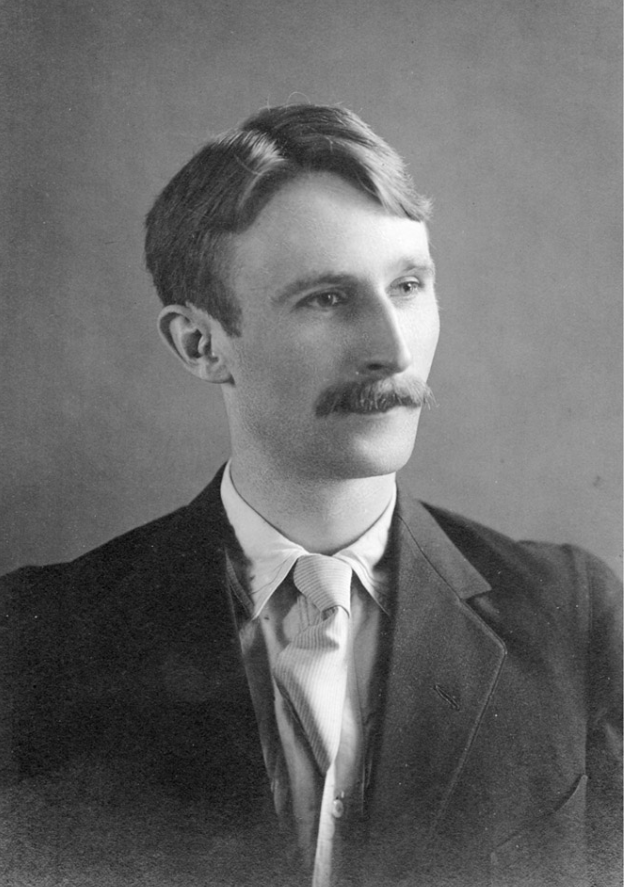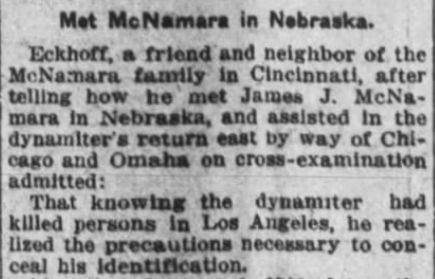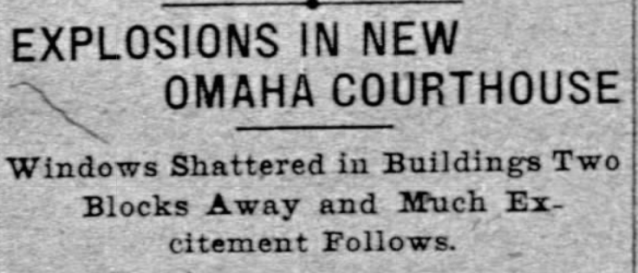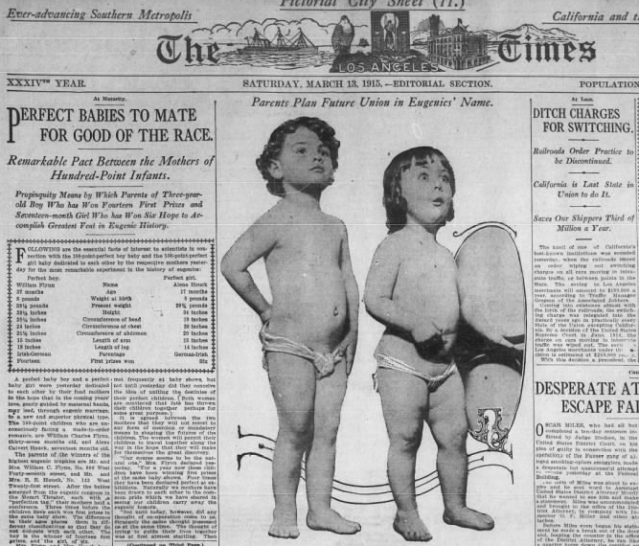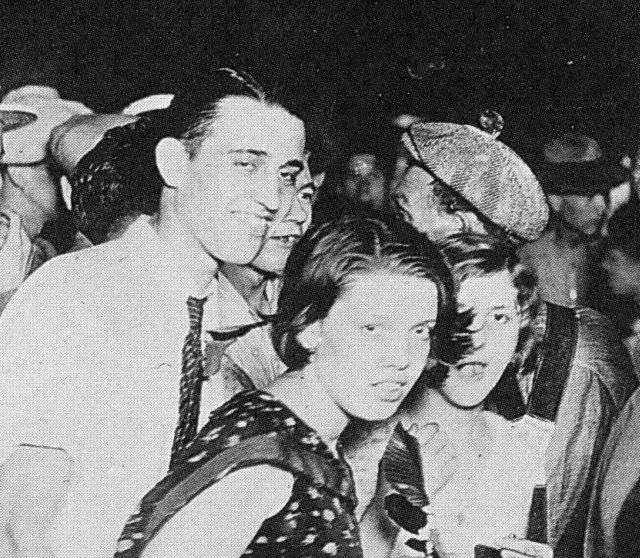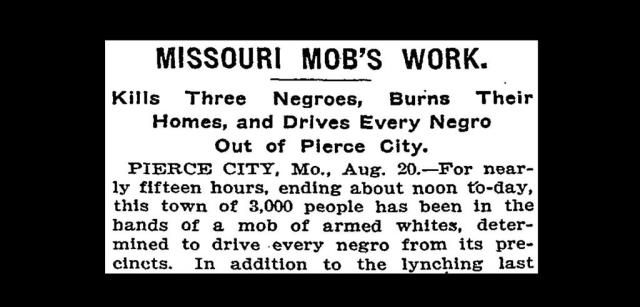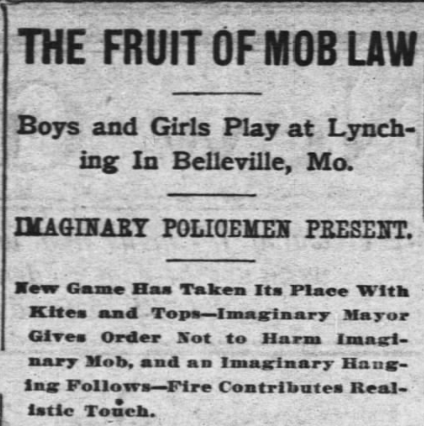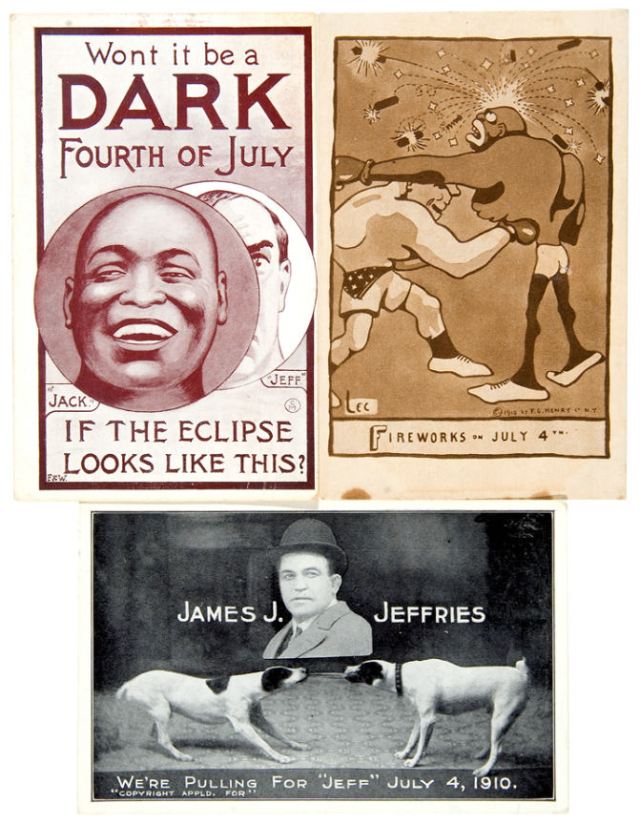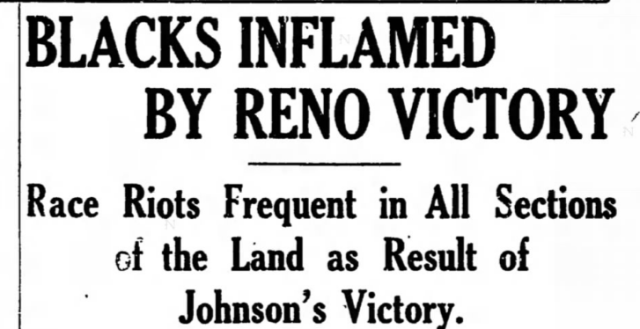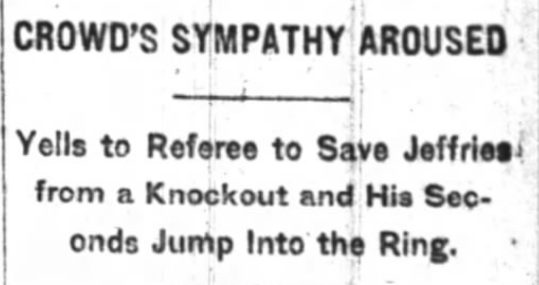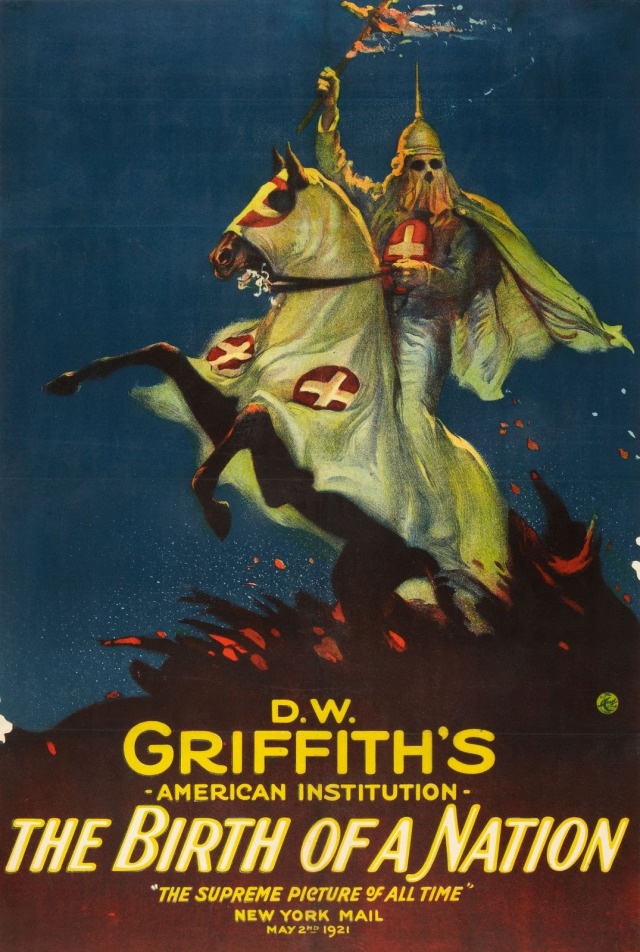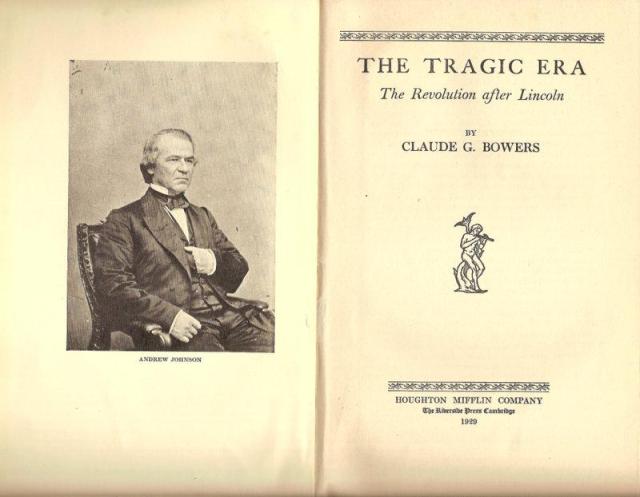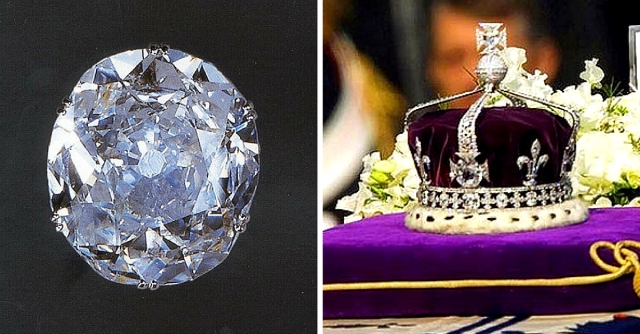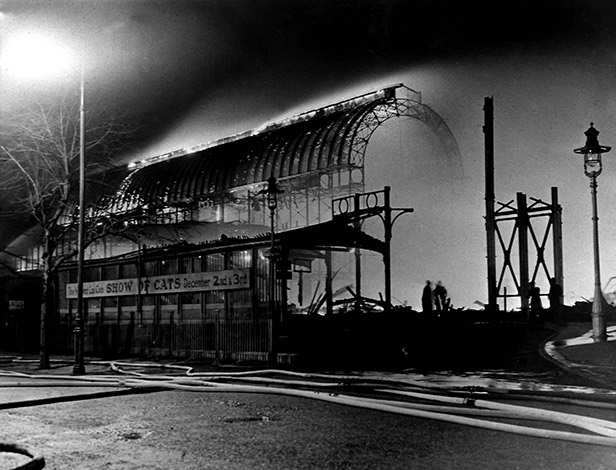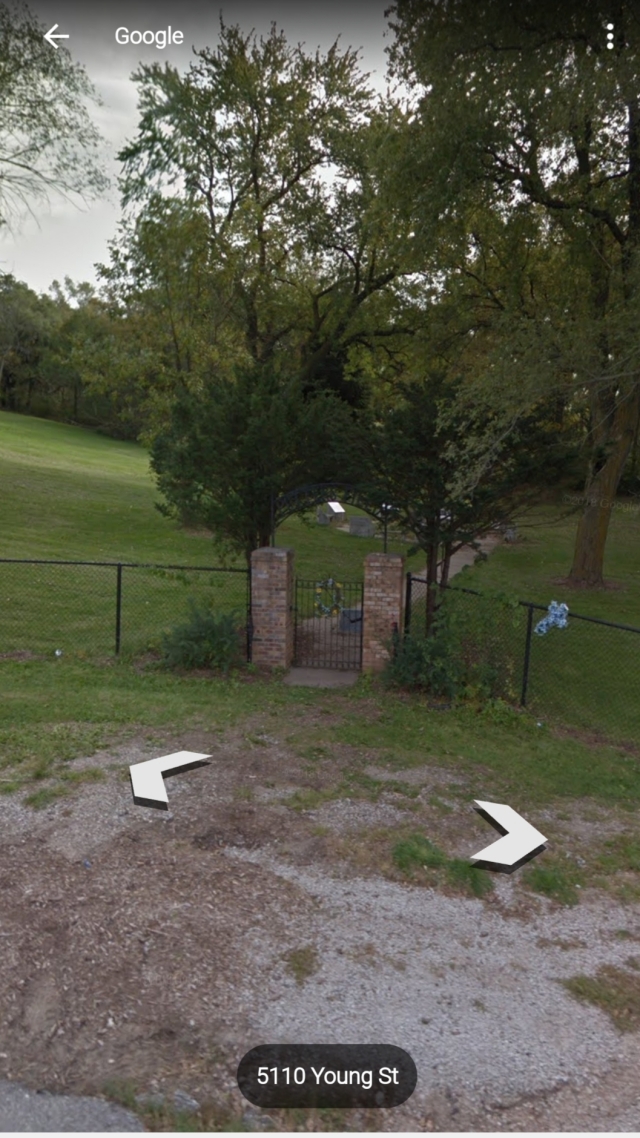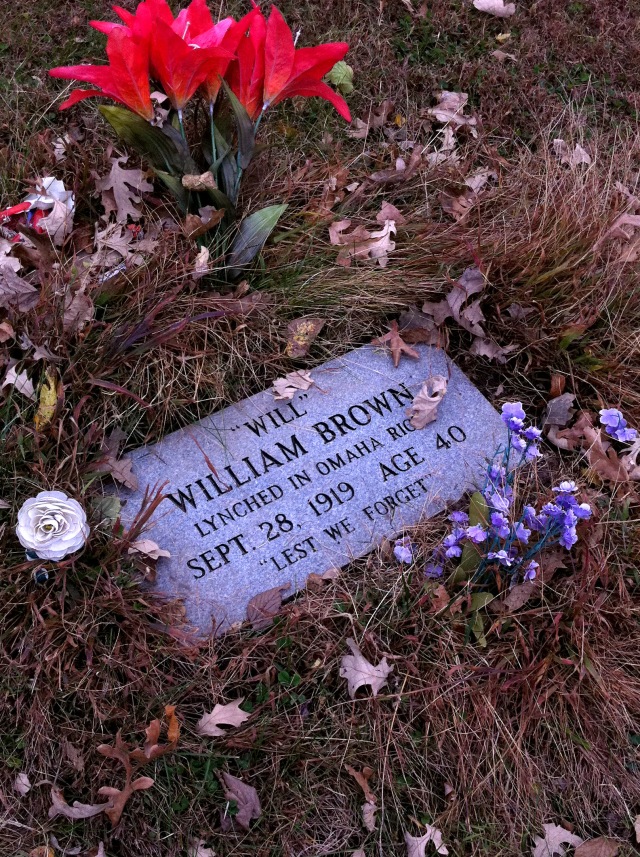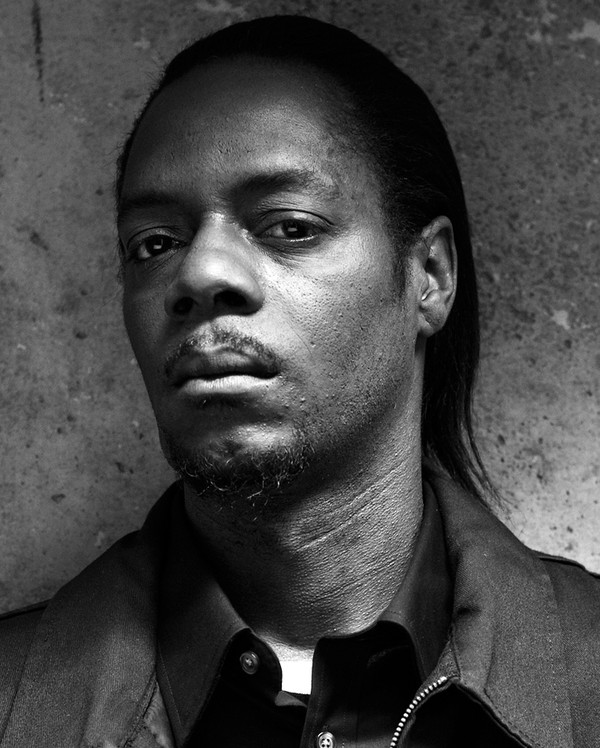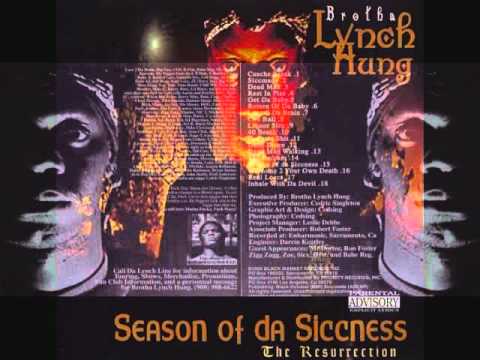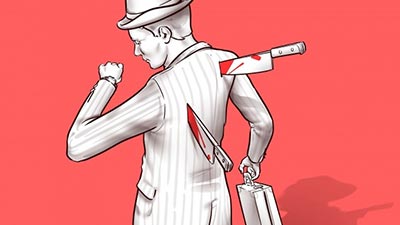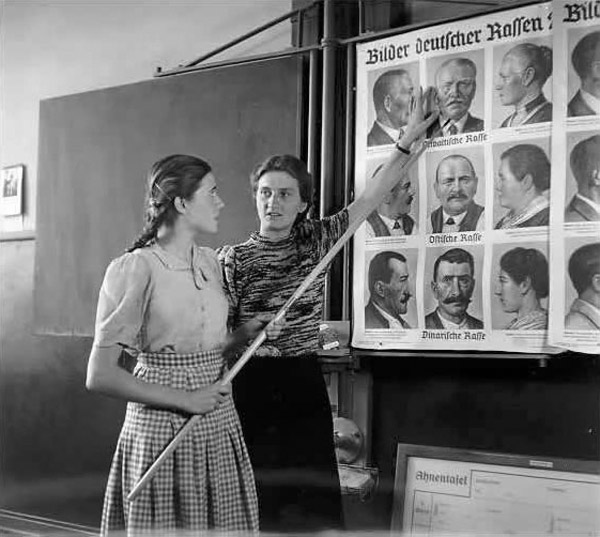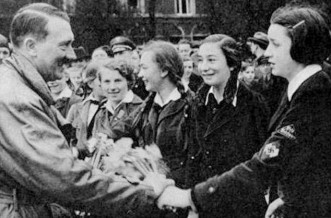Special shout out: My friend and colleague Adam, whose work at https://northomahahistory.com/ has inspired much of this blog, and whose groundbreaking work continues opening up new chapters of local history to new generations of readers
“I am the light of the world. Whoever follows me will never walk in darkness, but will have the light of life.”
– John 8:12
“You are the light of the world. A town built on a hill cannot be hidden. Neither do people light a lamp and put it under a bowl. Instead they put it on its stand, and it gives light to everyone in the house. In the same way, let your light shine before others, that they may see your good deeds and glorify your Father in heaven.”
– Matthew 5:14-16 (Sermon on the Mount)
“Some sentient power has wrought a marvelous change in the prairie lands in the span of year that measures a man’s life. Where the Indian’s council-fires burned in the days of Jackson, the Caucasian’s dream of beauty has found a fleeting shape in the white city that rises out on the plains today… At night, twenty thousand electric lights paint a scene from fairyland upon the waters of the lagoon. The temples that stand there are erected to appease the gods of the latter days, the gods of machinery, electricity, the liberal arts, and all their kith and kin.”
– William Allen White on Omaha’s Trans-Mississippi Exposition, 1898
On a calm summer evening in 1898 there was electricity in the air, in the wiring, and flowing through the crowd of thousands gathered in silence around a lagoon in North Omaha, in darkness, waiting for the gods to reveal themselves. Neptune lit up first, surrounded by lily pads and water fountains that burst into brilliant flashes of “opals or rubies or sapphires or emeralds or diamonds,” according to one observer. Then an array of buildings lit up one by one, each representing various gods of capitalist industry: Manufacturing, Agriculture, Mines and Mining, Machinery and Electricity. The crowd stood in silent awe at the spectacle in front of them – many had never seen electrical lighting before that moment. Hovering just behind and high above Neptune, Lady Liberty held a torch “Enlightening the World,” illuminating truth, beauty, righteousness, all that was good and holy, including whiteness. She stood high above all the rest, perched atop the government building, christening the newly tamed West, surrounded by American flags.


Earlier that day, from the comfort of the White House, William McKinley pressed a button which shot an electrical current from the nation’s capital to Omaha, gateway of the West, carrying a message signifying the official start of the Trans-Mississippi Exposition. In his telegraph, McKinley congratulated the city and propped up the vast land between Omaha and Sacramento, as a whole, as a place of boundless potential. His message of hope and optimism resonated with an American population still reeling from the Panic of 1893, an economic crisis severe enough to challenge peoples’ faith in the United States, leaving many uncertain about their jobs, their banks, their government, their very futures. The electric signal from D.C., accompanied by the elaborate lighting ceremony, functioned like a magic trick, a political spectacle designed to instill faith in the future of the nation, its economy, its lifeblood.



The financial backers of the exposition hoped the spectacle would function as a defibrillator, presided over by the president and gods of industry themselves, to shock life back into the young city, and thus outward into the nation. From Omaha, at the heart of an expanding empire, pulsated the light of Western civilization to beam into the heavens and across the globe, spreading its benevolent touch to all who would submit to its iron, and often violent, will. White Christian settler colonialism had finalized its grip over the New World. From the first world’s fair in London half a century earlier, all that was worshipped inside the Crystal Palace had now crystallized all the way across the Atlantic, spreading across the Great Plains, the Rocky Mountains, the Great Basin Desert, and finally the Sierra Nevadas, to reach the Pacific. In his address on the Exposition’s opening day, prominent Council Bluffs businessman John Baldwin said, “the Exposition has become the instrument of civilization. Being a concomitant to empire, westward it takes its way… The Crystal Palace, the World’s Fair, The Trans-Mississippi Exposition.”



World fairs were opportunities for Western civilization to look at itself in the mirror, flex its muscles, ponder itself, explain and excuse itself, mostly to itself. All that technological and economic prowess appeared beautiful in the mirror, as did the exposition’s buildings and their statues, illuminated and reflected off the lagoon. This was the legacy left to us from the Greeks and Romans, and when the audience bore witness to the dark night suddenly turned into perfectly lit Corinthian columns, they stood breathless for a moment. To them it was magical, or supernatural, or some combination of both. A Harper’s Weekly writer stated, “I have seen men and women stand stupefied at the entrance of the Grand Curt, blinded as they would have been by a flash of lighting.”
Manifest Destiny was playing out right in front of their eyes, and they were honored to be a part of God’s plan to civilize the earth and its inhabitants, to rid the world of ignorance and evil. They were guests at the big party celebrating the end of the Wild West and the opening of a new era, in which life would be perfected, truth would be illuminated, and all that was righteous would win the day. The lighting ceremony at the Trans-Mississippi Exposition repeated every night throughout Summer and into Fall, each night leaving visitors in awe, feeling they were part of something holy, divine, eternal, transcendent.


Of course, the reality was much different. The entire 180 acres of spectacle were a facade, a stage set designed to give the illusion of something greater. In his autobiography, actor Joseph Henabery, who played Abraham Lincoln in D.W. Griffith’s ‘The Birth of a Nation,’ recalled his time as a youth working construction for the Trans-Mississippi Exposition:
One big job was to dig a lagoon about six blocks long and three or four hundred feet wide. All the principal structures in the Exposition… were to be erected around the lagoon… Many of the buildings were of simulated marble in the classic style, with fluted columns. I watched the construction with great interest, especially the short cuts they used. Later on, I found that motion picture set construction was handled in much the same way. Of particular interest was the use of staff, a composition of plaster of Paris and hemp, cast in molds or formed by templates, on a backing of wire or burlap. When dry, the quickly formed staff material could be nailed in place in large sections.
In other words, the great marble arches that recreated ancient Greece and Rome were actually made out of an artificial stone cast, and in just a couple years they would be crumbling into disrepair, then demolished shortly afterwards. The mesmerizing lights of Neptune, showering glittering jewel-water into the night sky, were nothing more than multicolored incandescent bulbs. Lady Liberty’s torch, which capped off the ceremony every night beaming a light of hope out into the heavens, was merely a high powered incandescent light which, along with the 20,000 other lights scattered through the lagoon area, was powered by a special plant built nearby. All of it was an elaborate stage set up to put on a mystical appearance. The audience would have been somewhat aware of the basic science behind the mechanisms at work, so while they didn’t view the stage set itself as being divine, there was a sense that all the inspiration behind these technological advances must have been guided by the hand of God, right into the laps of the white settler colonialists of the Great American West.

In October, in time before winter would have started wearing the faux Greek columns of the Omaha Exposition down, President McKinley made his grand entrance into Omaha as the keynote speaker for the ‘Peace Jubilee,’ a celebration of peace to mark the closing of a splendid little war against Spain over several foreign islands. The purpose of this event was more to justify war and imperialism than to celebrate peace, as many American citizens still viewed the whole expansionist endeavor with skepticism, and were speaking out against the prospect of a growing American empire, the eagle spreading its wings too far and wide. McKinley arrived by train to a raucous crowd, then pulled up to the Expo alongside Omaha’s movers and shakers in an elaborate parade event building up to his speech. Just three years before his assassination at the Pan-American Exposition in Buffalo, McKinley stood in front of thousands in Omaha and defended his foreign policy with lofty rhetoric:
The faith of a Christian nation recognizes the hand of Almighty God in the ordeal through which we have passed. Divine favor seemed manifest everywhere. In fighting for humanity’s sake we have been signally blessed… The genius of the nation, its freedom, its wisdom, its humanity, its courage, its justice, favored by divine Providence, will make it equal to every task and the master of every emergency.
Here, McKinley invoked the image of manifest destiny and sent his message as clearly as he possibly could: the United States never fights wars for self interest, but rather for the sake of humanity and under God’s will, so anyone who questioned creeping American expansionism was going against God’s divine wishes, and who is anyone to question God? The speech was touted as a blueprint for Republican-led progress in expanding the American project into new heights heading into a new century, a way for the American people to move in unison towards a common goal, spreading the light of civilization to the world as the leaders of new industries and technologies. This would become the cornerstone of Teddy Roosevelt’s foreign policy only a short number of years later.



As the talons of America’s eagle reached out to grasp lands beyond its own shores, Americans attempted to process what, and who, had been taken into its grip over the past 50 years, as it finalized its control of its own mainland. They gazed upon the Native inhabitants of the mainland with titillated fascination. Who were these people whose lives had been so utterly shattered, upended, and reconfigured by Manifest Destiny? The Omaha Exposition promised to answer these questions for white settlers up close and personal, through the ‘Indian Congress,’ the last chance for the Indigenous peoples of the United States to be seen in their authentic state, before their way of life vanished completely. The official exposition guidebook called it, “the last opportunity of seeing the American Indian as a savage, for the Government work now in progress will lift the savage Indian into American citizenship before this generation passes into posterity.”

Representatives from two dozen tribes showed up to the ‘Congress,’ but their authentic ways of life were already essentially destroyed. The railroads had brought in floods of white settlers, who massacred the bison to near extinction, spread deadly diseases, and took the best land for themselves, relegating Indigenous peoples to the outskirts of what for thousands of years had been their own lands. In response, the prophet Wovoka spread the Ghost Dance Movement, which taught that Indigenous peoples would have their world once again, that a coming event would wipe out the white civilization that had been enveloping and swallowing their ways of life. They only needed to perform the Ghost Dance and everything would come back into the right place again. During the dance, many people went into a trance, or even lost consciousness and reported traveling to other worlds, speaking to dead relatives, seeing visions. They had come to believe all the dead ancestors would join them in a new world, free from the white man’s violence. It was a final desperate plea to the universe to stop the cultural genocide that had been occurring for the past few hundred years.
Lame Deer stated:
They told the people they could dance a new world into being. There would be landslides, earthquakes, and big winds. Hills would pile up on each other. The earth would roll up like a carpet with all the white man’s ugly things – the stinking new animals, sheep and pigs, the fences, the telegraph poles, the mines and factories. Underneath would be the wonderful old-new world as it had been before the white fat-takers came. …The white men will be rolled up, disappear, go back to their own continent.
The final thrust of this resistance ended in the Wounded Knee Massacre, in which paranoid white soldiers butchered several hundred men, women, and children as they camped along a creek in the winter of 1890. It was the end of an era, the end of Native autonomy as they had known it. As if to put a nail into the coffin of Indigenous resistance, the Omaha Expo featured a group of Arapaho and Cheyenne Ghost Dancers performing their ritual around an American flag, the embodiment of the white settler colonial project which had so thoroughly destroyed their ancient ways of life. In viewing this event, white spectators were therefore able to confirm their place as colonial masters over the West, the purveyors of all things considered civilized, and of that which would be thrown into the museum as archaic vestiges from a savage human past. Of course white people would cough up money to be able to feel like a part of this moment cementing whiteness as the big winners in the struggle over the American West. It was an easy sell.

Though deemed educational at first, in practice Indian Congress ended up becoming more like a Wild West show, with mock battles staged every day in which white and Native American people pretended to fight against one another. This novel concept was originally conceived by a fraternal group of well-to-do white men pretending to be Native Americans, called the Improved Order of Red Men, who proposed staging an epic battle: cowboys (white men) and ‘friendly Indians’ (played by white men in redface) vs ‘hostile Indians’ (actual Native American people). Although the ‘Order of Red Men’ might seem ridiculous today, they had membership of half a million at their height, including Presidents Teddy and Franklin Roosevelt, and Warren Harding, among their ranks. Apparently the irony, hurtfulness, and absolute absurdity of forming an all white group called the ‘Improved Order of Red Men’ that blatantly appropriated Native dress, language, and customs was lost on its members then, and continues to be lost on its members today.



Clown shoes aside, the mock battles were a huge success. For its opening day, 700 white and Native actors got into costume and acted out their battle, firing blank rounds, hooting and hollering in front the audience for full dramatic effect. As the battle raged, the villainous ‘hostile Indians’ acted out the scalping of their enemies and tying them to a post to burn them with the hot end of a stick, causing gasps from the captivated crowd. At the end of the massive theater production, the ‘U.S. Army’ came in to save the day, and the hostile Indians were forced off the stage onto a reservation. Each day the crowds were left as mesmerized as they were by the electrical lighting display each night. The play was a campy Greek tragedy, a kitschy re-telling of the Manifest Destiny narrative, in which brave westward pioneers, aided in part by the U.S. government, tamed the savage West through courage, sacrifice, determination, and the hand of God Himself.


The mock battles were a huge success for the Exposition’s organizers and their coffers. Many Indigenous people showed up on the promise they would be able to sell their wares to thousands of tourists, and many took full advantage of this opportunity. If they were to survive in the white man’s world, they would have to participate in his economy. Various tribal members camped out on exposition grounds in their traditional housing structures, including tipis and wigwams. Some chose to have their portraits taken by local photographer Frank Rinehart, in exchange for a copy of the photo. Rinehart’s collection from the Exposition is an invaluable documentation of the last generation of Native American people still living relatively immersed in the lifestyles of their ancestors. Through the camera lens, he humanized a people being dehumanized at every turn, and his compassion for his subjects comes through in the shots themselves, perhaps best exemplified in his photos of a strikingly beautiful Apache girl named Hattie. Her eyes tell the story of the last generation to live according to the old ways, and the first to enter a new era in which Native peoples would have to navigate new paths and new identities in a white world. If she were 15 at the time of the photos, she would have been just a baby as Geronimo led her people in one last stand against the U.S. military in 1886.



However humanizing Rinehart’s photos are, the Indian Congress as a whole was an ugly piece of white supremacist and nationalist propaganda, like every ‘living exhibit’ before and after it. On the opening day of the mock battle, there was a big parade which ended in an American flag raising ceremony, using the biggest flag that could be found, punctuated by a Native marching band playing the Star Spangled Banner. The symbolism was clear: these Natives had assimilated to the white ways, and no longer posed a threat to American progress. Geronimo and other Apaches were carted into the Exposition as prisoners of war, the old warrior of fierce reputation, who had eluded the U.S. military for many years, now available for autographs and photos, a novelty for white folks to gawk at.

Like Sitting Bull, Geronimo had become a legend and a caricature both at once, a man whose entire life story had been built on the theme of resistance, now withering in submission to the almighty white civilization which bulldozed through every crevice of the Americas. The writing was on the wall and Geronimo knew it. Defeated and forced to assimilate, he said,
“Right here at the exposition are enough people coming every day to put an end to every Indian in the world if they saw fit to do so. Then, besides this, the white men have all the guns, powder and bullets. They have all of the big guns and they are the ones that count…. I am an old man, and I want to see my people learn the ways of the whites. I want to see them raise corn and cattle and live in houses and I believe that the president and the big men at Washington will help my people if they will try to help themselves.”
Meanwhile, Native American kids were sent off to boarding schools to learn the ways of the whites, and in the process unlearn the ways of their families and ancestors. Teachers at places like the Carlisle school, where many Apache children ended up, cut these kids’ hair, gave them white names, converted them to Christianity, and many times abused them psychologically, physically, and sexually in the process. Near the twilight of his life, when Geronimo met with Teddy Roosevelt, he pleaded for the big man in Washington to allow his people to go back home to their home in Arizona. Roosevelt replied that Geronimo had a “bad heart,” that he had been a “bad Indian.” The president didn’t hide his racist views, stating, “I don’t go so far as to think that the only good Indians are dead Indians, but I believe nine out of ten are, and I shouldn’t like to inquire too closely into the case of the tenth.” When the old Apache warrior finally died, newspapers ran headlines dehumanizing him and celebrating his death.



But Native American people were not the only ones exploited and dehumanized at the Trans-Mississippi Exposition of 1898. Organizers also imported set pieces from the South to recreate a Southern slave plantation, complete with Black actors playing the roles of enslaved African people, going about their daily business on the plantation. It was a bit of interactive theater, designed to allow white visitors to gaze upon and interact with the ‘enslaved people,’ or even touch them if one so desired. The idea was to show an exotic world of decades past, one people had only read about, and to show an authentic representation of Antebellum life. Advertised as a depiction of the “joys” of slavery, the Old Plantation also fell in line with a steady stream of ‘Lost Cause’ mythology seeping into the nation from the Southern states since the end of the Civil War. In order to push the narrative that slavery wasn’t really so bad after all, the Black actors were made to sing and dance while processing cotton, clearly marking the exhibit as a minstrel show under the guise of an anthropological study of enslaved African peoples.
Even children were employed in this racist, exploitative exhibit. The Nebraska State Journal reported:
In the old plantation is an interesting collection of plantation darkies. Ladies fond of children are especially pleased, as they find half a dozen small pickaninnies, about two years old. It is no uncommon thing to see three or four ladies with kodaks posing the children for a “snap shot” picture. The manager of the old plantation extends to the camera clubs the freedom of the old plantation for securing pictures. The old log cabins and peculiar people make most interesting subjects for the amateur photographer.


At the time, personal cameras were a new sensation, so the Old Plantation was an opportunity for people to take a snap, not unlike a turn of the century selfie, with ‘darkies’ dressed as slaves. These would be the main representations of Black people at the Omaha Expo, as well as at the Buffalo Pan-American Exposition three years later, where President McKinley met his fate from an anarchist’s bullet. And it was the unsettling sight of the Old Plantation exhibit in Buffalo, which followed in the footsteps of the one in Omaha, that led activist Mary Talbert to reach out to W.E.B. Du Bois and discuss ideas on how to combat such harmful stereotyping and exploitation. They then formed the Niagara Movement, precursor to the NAACP.
Although an organization called the Omaha Black Woman’s Club pushed organizers to employ local Black people in more prominent roles at the Expo, ones which would allow them to portray themselves as part of the larger Omaha community, and nation as a whole, their efforts were almost entirely fruitless. White managers made all the decisions, and they had little room for Black people in the Exposition except as caricatures designed to entertain the white masses. In the Expo’s Manufacturing Building, a Black woman dressed as Aunt Jemima served pancakes to white visitors, advertising the mix as a sort of ‘slave in a box’ that did all the labor of making pancake mix for you. Exploitation for profit was the name of the game.
However, there was another group of Black civil rights pioneers, ranging from conservative to radical and everything in between, who found a way to utilize the Exposition in a way that they felt would be beneficial. Omaha’s Ferdinand L. Barnett (not to be confused with his cousin Ferdinand Lee Barnett of Chicago, husband of Ida B. Wells), Reverend John Albert Williams, newspaper editor Cyrus Bell, politician Edwin R. Overall, and a slew of other local Black leaders aimed to create a public forum at the Exposition, featuring speeches by prominent white and Black intellectuals on various political topics. (Although women activists outnumbered men in this group, it was nonetheless headed by men.) They secured the Exposition’s main auditorium for the opening day of what they called the ‘Mixed Congress,’ in which race relations could be discussed and debated formally, in a structured manner, in front of an audience. Exposition organizers surely saw dollar signs with such an event, and hoped to draw in as many attendees from bordering states as possible, and surely also saw an opportunity to showcase Omaha as a tolerant, progressive city with its arms open to Black laborers who might seek to migrate from the South.
The official stated goals of the Mixed Congress were to “bring together representatives of both classes of American citizens for exchange of views on the industrial, educational, social and moral questions of vital moment to the prosperity of our country” and to “crystalize such views into some organization which will put into practice such principles as the congress may agree upon for the accomplishment of the end desired.” However political these goals may appear to be, Black leadership of the Mixed Congress explicitly stated the organization would “not be political, but ethical.” This was perhaps an attempt to draw in white participants who might otherwise be turned off at the prospect of getting into a heated, mud-slinging, political debate about difficult topics such as racial discrimination. It would also have served as a way to pitch the event as a nonpartisan one, in which people of all ideological stripes were welcome.
At the turn of the century, political partisanship was heavy indeed. The two most prominent Black intellectual leaders, Booker T. Washington and W.E.B. Du Bois, and their legions of followers clashed over the politics of how to forge a more equitable and just future for their race. Where the conservative Washington advocated for a bottom up, incrementalist approach in which Black people slowly built their own equality through hard, steady work as individuals, the progressive Du Bois advocated for a full-scale top down approach, utilizing the power of the federal government to enact laws which would enforce equality at a structural level. Neither leader was invited to Omaha for the Mixed Congress.
Just a few years before the Omaha Exposition, at the Cotton States and International Exposition in Atlanta, Washington delivered his famous speech, dubbed the ‘Atlanta Compromise,’ advocating for Black people to steer away from political ideals that focused on structural racism and inequality, and to focus rather on building their own economic security, brick by brick, through trade work and menial labor. His was a bootstrap-mentality that demanded nothing from white people but patience, as Black folks respectfully found their way out of the deep hole they had been pushed into through centuries of oppression. In his Atlanta speech, Washington said:
The wisest among my race understand that the agitation of questions of social equality is the extremest folly, and that progress in the enjoyment of all the privileges that will come to us must be the result of severe and constant struggle rather than of artificial forcing. No race that has anything to contribute to the markets of the world is long in any degree ostracized. It is important and right that all privileges of the law be ours, but it is vastly more important that we be prepared for the exercise of these privileges. The opportunity to earn a dollar in a factory just now is worth infinitely more than the opportunity to spend a dollar in an opera-house.

So where Washington and his ilk saw white people generally as friendly neighbors waiting for their Black peers to fix up their houses and curate their lawns, Du Bois saw them generally as antagonistic neighbors actively seeking to maintain a pristine, segregated, gated community, and to keep their Black peers out at any cost, by any means. On the topic of Black education and the value of pursuing white collar jobs, Du Bois said:
In the professions, college men are slowly but surely leavening the Negro church, are healing and preventing the devastations of disease, and beginning to furnish legal protection for the liberty and property of the toiling masses. All this is needful work. Who would do it if Negroes did not? How could Negroes do it if they were not trained carefully for it? If white people need colleges to furnish teachers, ministers, lawyers, and doctors, do black people need nothing of the sort?

Du Bois sought to form a phalanx of highly trained Black intellectual warriors to stand in opposition to the white power structure, to uproot white supremacy from its socio-political base, and knew just as well as Washington did that this process would be met with violent responses from whiteness. The major difference between the two men is that Du Bois was willing to lead Black Americans into this conflict and absorb white violence, and Washington was not. In many ways their story foreshadowed the ideological conflict between Martin Luther King, Jr. and Malcolm X, although it’s important to note that by the 1960s, Washington’s ideas had been relegated to the dustbins of activist history, where King carried the torch of Du Bois to the very heights of the white power structure, and Malcolm X pushed the movement into new levels of radicalism almost unheard of a half century earlier. In other words, Du Bois helped set the standard of Black political activism that would carry on for decades after his death, even though at the time it was never clear this would be the case.
Both Washington and Du Bois’ calls for true equality were met with indignation and fury from white America, and perhaps not coincidentally, neither man was in attendance at the Mixed Congress. However, during the course of events leading up to the event, a war of words erupted in the public editorial pages of the Omaha World Herald between Reverend John Albert Williams of St. Phillip the Deacon, perhaps the most prominent Black leader in Omaha, and Reverend John Williams of St. Phillips of St. Barnabas, an Irish-American immigrant. The debate echoes that of Du Bois vs Washington, and arose following an editorial written by John Albert Williams, airing grievances about how Black people were often treated in Omaha, and offering solutions to help alleviate the problem. Williams stated:
It is rapidly becoming a notorious fact that it is almost a matter of impossibility for an Afro-American, however respectable or genteel he may be, to obtain accommodation in hotel, restaurant, ice cream parlor, labor shop or public resort of any kind. Certain places he is refused point blank. At other places he is met with some subterfuge or overcharged. Nor is this state of affairs confined to the city proper. It has invaded the great Trans-Mississippi and International exposition grounds.

Williams went on to list several examples of subtle and blatant discrimination in the Exposition as well as its host city, opining that business owners often choose to discriminate not based on their own personal prejudice, but based on the fear that white customers will stop frequenting their establishment if it’s known to serve Black people. He also noted that Black people from Omaha know which places discriminate, and would generally simply avoid them. But he questioned how visitors from out of town, especially during the Exposition, could possibly know which places to avoid, and asked if the city could afford to treat its visitors of color in such a way. As we so frequently do still to this day, Williams framed his anti-racist argument here in terms of economic health, which is often the best if not only way to persuade white people to take the issue seriously. Then he offered solutions to the problem, differentiating between legal and moral methodology:
The legal remedy is this: Taking advantage of the (Nebraska) civil rights bill, file information against, arrest and prosecute every person who violates this statute. Frequent lawsuits, fines and the attendant vexations and notoriety resulting there-from would eventually correct and modify, if not totally eradicate, the evil. This would create much unnecessary ill-will, which might otherwise be avoided. It is not the better plan, in my judgement…. must we seek this remedy?
The moral remedy is this: Believing in the injustice and iniquity of the pernicious public sentiment which fosters this discrimination injurious alike to the businessmen of our city and the people against whom they discriminate, let the liberal-minded and substantial white citizens issue a manifesto or statement over their signatures that they have no sympathy with such discrimination and that they will withdraw their patronage from all persons who practice it, and the evil will disappear…
…. it seems to me that this is the true way to right the matter. It will give the best results. It will avoid lawsuits and cheap notoriety. It will prevent ill-will and hard feeling between common citizens. It will remove embarrassment from the well-disposed proprietors as well as humiliation from those who would be their patrons and add to their business returns. It will give our city high rank as a progressive city among those of the land. It will above all show to the world that the metropolis of Nebraska believes in justice and right for all her citizens. Cannot this be done?
He then asked if “liberal-minded” city leaders would join him in the endeavor to lead the charge in publicly opposing discriminatory practices prevalent in Omaha, calling over a dozen of them by name in his closing paragraph, including the white Reverend John Williams, who would respond in due time. The concerns highlighted in this opinion piece were not called into question in subsequent responses, meaning people generally did not take issue with the concept that in spite of a state anti-discrimination law passed in Nebraska in 1885, racism was still alive and well, and practiced in relatively plain view, over a decade later. Cyrus Bell even did a bit of investigative journalism in order to detail this blatant discrimination, canvassing local businesses, asking what their practices were in regard to serving Black customers. Going door to door with blunt questions and an inquiring eye, he found clear evidence of widespread discrimination that proprietors would usually try to obfuscate through confusing, contradictory language games. Everyone discriminated in practice, yet none would freely admit it. Perhaps more importantly, very few white leaders were willing to publicly oppose it, as they were challenged to do.
In line with the confusing language documented by Bell, (white) Reverend John Williams responded to John Albert Williams’ piece by unleashing a tirade of gaslighting language:
The Rev. John Albert Williams makes a pathetic appeal in your columns for social justice and fair play toward his race… I wish his appeal could be not only heard, but answered as he desires; but he asks, I fear, for the impossible, so far as the world at large is concerned… I do not say that it will be forever impossible, but social equality between the different strata of either race… as man are at present, is all but a social impossibility. Of course, it is most gallingly impossible between the white and colored races.
Differences of education and external condition largely determine social rank and privilege between men of the same race among us. But no training or education, no external condition of wealth or culture can secure social equality or recognition for negroes. Among white men of any degree, educated or uneducated, the colored man may be nine-tenths white, and one-tenth black, and that one-tenth damns the nine-tenths of his Caucasian blood, however unexceptionable in education and training and gentlemanly bearing the man may be. He is barred by his fraction of black blood from equal association with the most uncultivated grade of white men.
He then claimed white people are not bothered being near Black people who are in positions of servitude and menial labor, such as porters, shoeshiners, and maids, but…
… as quickly as a colored man or woman… claims even the shadow of social equality then our proud white blood is up in arms, and we repel the contact with indignation at the presumption of the “n***er…” if he presumes to wear, or to ask for the shoulder strap of a lieutenant, or if he dares to sit at a lunch counter with us white men, or if he dares to ask for a soda at the same fountain with us, then our proud white blood is up, and the negro must be taught to keep his own place.
This is all… too sadly, unjustly true. No one knows better than Mr. Williams does, that I am absolutely at war with the social ostracism and injustice under which colored men labor. I detest our northern hypocrisy which arraigns southern men for their social injustice toward the black race, and yet without a hundredth part of the provocation makes constant use of the same, or similar injustice here. And yet, I can see no practical use in Mr. Williams or any of his people trying to force, by law or otherwise, social equality one day before white men are ready to grant it, as a natural inalienable right of every man, regardless of color. Colored men must labor and wait, must be self-respecting and patient, patient not in a humble or servile sense, but in a manly, independent way, which will prompt them to ask for no social favor that is not given them without sense of condescension on the part of those who yield them…
… Any other race with half the opportunities that colored men possess will forge ahead and receive the patronage of their own people. Why do not colored men do so, and let their civil rights under the law wait upon their natural and unquestioned right to do business for and with their own people, and with such others as would gladly recognize the force of character which will enable manly men to rise above their adverse circumstances? The mutual jealousies of the intelligent colored men of this city are far more detrimental to their common interests than the unreasonable prejudices of white men.

In Williams’ rollercoaster ride of contradictions, he simultaneously denounced anti-Black racism and indulged in it. In line with Washington, he said Black people need to simply pull themselves up by their own bootstraps and rise above the low-paying menial labor they found themselves bound to, and to simultaneously stop expecting white people to be ok with them doing that very thing. Using language such as, “our proud white blood” and “the negro must be taught to keep his own place,” Williams revealed his own white supremacist leanings, but then disowned white supremacy by claiming to be “at war” against racism. One might have asked Williams how he claimed to be at war against racism if his only solution was telling Black people to try harder and do better. His Black Anglican counterpart asked him to take the very first and most basic step in going to war against racism, which would be to clearly denounce racist practices by local businesses that were already illegal at the time, and instead of entering the battlefield, he ridiculed this call to arms as “pathetic” and unmanly. Of course, churches also operate as businesses to some degree, so it’s entirely possible Williams was trying to tow his white congregation’s line by assuring them he stood on their side of the color line, but anyone willing to cater this blatantly to racism is guilty of racism.
As the reverends Williams debated in the opinion pages of the local paper, preparations continued for the Mixed Congress, and the event ended up going off without a hitch. Judging by the war of words between local clergy, the decision to frame the event as somehow being apolitical might have been a wise one, if the goal was to keep tensions low. In order to demonstrate assimilation and respectability, the program consisted of patriotic songs along with speeches from an array of leaders from around the Midwest:
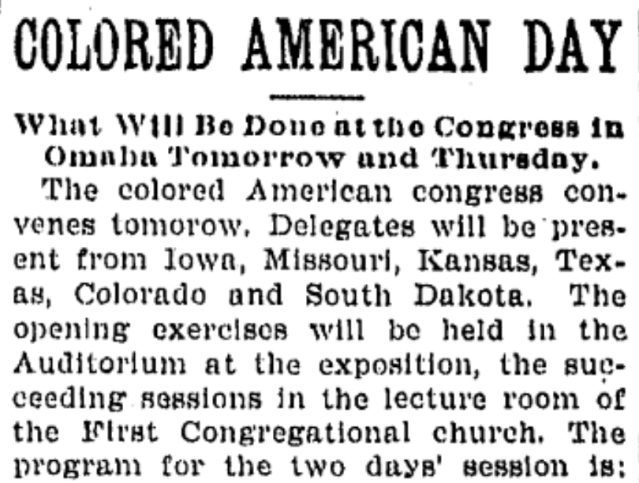


With its focus on peaceful, formalized dialogue about race and racism, the Mixed Congress represents an early effort on the part of community leaders to forge a path towards interracial unity, an idealism set in the midst of Jim Crow reality that was never truly confined to the South. While there appear to be no surviving minutes from the Congress detailing what exactly was said, the program clearly shows its creators were concerned with not only racism itself, but also how racism intersects with labor issues, and the media’s role in creating a more racially harmonious society. The care put into the program’s language indicates a high level of awareness regarding white fragility; the main question explored on the opening night of discussion wasn’t “how can racism be eradicated” or “how can racial equality be achieved,” but rather “what can be done to bring about a better and more respectful feeling between white and colored Americans,” followed by white and colored perspectives on the matter. If the editorial debate between the Reverends Williams represents the major ideological divide in the air at the time, then each side thought the other should do the heavy lifting in creating this ideal, sought-after feeling, bringing a tension which ironically would have led to worse and less respectful feelings between the two sides.
Again, there doesn’t appear to be any surviving records detailing the dialogues which occurred at the Mixed Congress, but on the topic of labor, it isn’t difficult to imagine speakers tackled the ongoing conflict between white unions and Black strikebreakers. White capitalists frequently pitted exploited, striking white unionists against Black strikebreakers seeking any sort of meager living they could find. While W.E.B. Dubois led the charge to push more Black people into academia, the arts, and white collar work that was primarily performed by the mind, rather than the body, the Black population remained disproportionately undereducated, politically and economically oppressed to the point of desperation, fighting for the scraps of whatever manual labor positions were still open after working class white American and European immigrant workers took the lion’s share. This often left Black workers in the position of accepting work with miserable conditions and extremely low pay, a phenomenon that left a bitter taste in the mouths of white unionists seeking better treatment for working class people.
In opposition to W.E.B. Dubois’ push to create more Black academics and artists, and in spite of the poor working conditions prevalent at the time, Booker T. Washington spoke in favor of Black industrial labor as the best strategy for paving the way towards a better future, and provided a model for Black vocational training schools with his increasingly famous Tuskegee Institute. Many influential white industrialists backed him in this vision, although their primary motivation was often to enhance their own economic standing, and that of their peers, rather than to uplift Black people. Washington found allies in practice, even if their motivations differed. Wealthy philanthropist George F. Peabody, namesake of the Peabody Awards who also served on the board of the Tuskegee Institute, said:
…. have you the least doubt that if one million Negroes, constituting nearly one-half of the men, women and children of Georgia were rightly educated to the development of their bodily health and strength and facilities and of the application of the same, which means their minds trained, to have their arms and legs work promptly and accurately in coordination, their moral apprehension rightly trained to know and do the right and avoid the wrong, and their affectional nature encourage to love and not hate their white neighbors, and to respect and honor their own sexual purity, that they would be worth in dollars and cents to the state of George more than three times their present value. If this be true, as I am positively sure that it is, and as the property of the State of Georgia is so largely owned by the white race, would not the gain to the white race, under present methods of distribution, be most incalculable in dollars and cents…
Also on the Tuskegee Board of Trustees, and an even closer friend of Washington’s, was another wealthy white man, William H. Baldwin, who cut his teeth in Omaha, rising up the ladder at Union Pacific Railroad. Baldwin originally came to Omaha on the invitation of his close friend’s father, Charles Francis Adams Jr., a Civil War veteran who was then president of Union Pacific. The year Baldwin arrived in Omaha, 1886, also happened to be the year of the Great Southwest Railroad Strike, in which railroad magnate and robber baron Jay Gould crushed the nation’s largest labor organization, the Knights of Labor, through the use of (often Black) strikebreakers and Pinkerton mercenaries, providing a model for how management could win future labor wars. While the Knights of Labor invited Black laborers into its fold, most unions after its dissolution were only open to white members, forcing Black workers into the desperate position of strike-breakers who felt they had no choice but to work for less.
Baldwin watched the politics of race and labor unfold from his office in Omaha, then traveled into the South to influence the politics of education and labor there. He was at the original meetings from 1898 to 1900 at Capon Springs, West Virginia, that led to the creation of the extremely influential Southern Education Board. As a close friend of Washington, Baldwin entrenched himself in the cause of public education for Southerners of all races based on the model of the Tuskegee Institute, aimed at vocational training to help grease the gears of industry and give people a steady living. While Baldwin claimed humanitarian motives for his efforts, W.E.B. Du Bois was skeptical, stating, “His plan was to train in the South two sets of workers, equally skilled, black and white, who could be used to offset each other and break the power of the trade unions.” Baldwin likely would have denied it, but his own words proved his true intentions were aimed at crushing unions so the U.S. would be able to compete with the cheap labor in other nations:
The union of white labor, well organized, will raise the wages beyond a reasonable point, and then the battle will be fought, and the Negro will be put in at a less wage, and the labor union will either have to come down in wages, or Negro labor will be employed. The last analysis is the employment of Negro labor in the various arts and trades of the South, but this will not be a clearly defined issue until your competition in the markets of the world will force you to compete with cheap labor in other countries…. I believe, as a last analysis, the strength of the South in its competition with other producing nations will lie in the labor of the now despised Negro, and that he is destined to continue to wait for that time.

Thus, while Booker T. Washington might have been helping Black people to some degree in the short term by providing a means to earn a meager living, he was ultimately playing into the hands of wealthy white capitalists who sought to exploit Black labor as strike breakers when the unions became powerful enough to force concessions through large scale strikes. W.E.B. Du Bois correctly surmised that white philanthropy was largely a scheme to further line the pockets of the white bourgeoisie, while producing public relations gold through generous donations to institutions such as the Tuskegee Institute. The titans of capitalism almost always had their way, skillfully playing working class people of differing races against one another, in order to keep them divided and powerless in the face of exploitation.
……………………………………………………………………………………………………………………………………………………..
On the same day corporatist President William McKinley spoke glowingly of American empire and the light of white Christian civilization in front of thousands in Omaha, a group of armed, mostly white, unionists of the United Mine Workers in Virden, Illinois, watched as a train of 50 Black strikebreakers and their families, over a hundred men, women, and children, rolled into town on a train car. The unionists had been at war against their employers for months, striking en masse until they could reach better working terms, and were fully aware of the strikebreakers coming into the area. The miners were led to action the previous year by General Alexander Bradley, who had learned to organize protest marches when Coxey’s Army of populists literally marched across the nation to Washington, D.C., demanding workers rights and human dignity for the poor and destitute during the economic depression of the early 1890s. The unionist men were organized into militias, armed and ready to fight to the death if need be, for a living wage. After a series of negotiations bore the fruit of an agreed upon wage for miners at the national level, the Chicago-Virden Mining Company stood alone in refusing to honor this wage, leading to a situation in which blood was sure to be spilled.

The Black strikebreakers were recruited from Birmingham, where company men told them the Virden miners had gone off to fight in the Spanish American War, so the Chicago-Virden Mining Company needed more labor. A previous group of their Birmingham peers brought up to Illinois, sensing trouble along the way, had refused to break the strike upon learning of the true nature of their trip. This time company owners were going to get their laborers into their mines and working, by any means necessary. From St. Louis, armed mercenaries of the Thiel Detective Agency boarded the train, in anticipation of the violence to come. The train doors were locked, keeping the Black laborers and their families trapped inside. The train depot itself had been fortified with a stockade, complete with barbed wire and sentry towers, inside of which were specially built company houses, a miniature community of exploited laborers sealed as if in a castle, from a potential siege. The stench of feudalism and backstabbing in the air, this group of Black laborers smelled trouble as well as their predecessors did, and there are reports that on this occasion, company men forced them to follow orders at gunpoint, making the situation a blatant case of kidnapping and false imprisonment.


As the train approached, a miner shot his rifle into the air, signaling to the other miners to prepare for the showdown. The train slowed to a stop as company men took position behind a long, narrow pile of coal they had stacked between the tracks and the stockade, armed with the cutting edge firearms of the day. Miners approached the scene armed with .22 caliber rifles and pistols, some without any firearms at all, and a shootout ensued, lasting roughly ten minutes. In the process dozens of men on each side were seriously injured and seven miners were killed, along with four company-hired men. It isn’t known for certain how many Black strikebreakers or members of their families were injured or killed, as there are no official reports on the matter.
What is certain is the company felt they needed state intervention to restore order and escort their workers into the mines safely, but Illinois Governor John Riley Tanner sided with the unionists. Tanner was clear in his judgement, bucking the longstanding trend of governors sending in state militias to aid capitalists in breaking strikes. He said, “The laboring man’s only property is the right to labor, which is as dear to him as the capitalist’s millions, and he has the same right to carry arms in defense of his property as the capitalist has to protect his millions.” Without support at the state level, company men persuaded the local sheriff to round up a citizens’ militia, asking for 100+ men, but only a dozen showed up willing to risk death for the company. Instead, a group of citizens sent a petition to Governor Tanner, stating:
“We are opposed to the importation of colored miners from the south under any and all conditions, as a menace to our peace and that of our city, believing, as we do, that it will depreciate the value of our property, foster crime within our midst, and degrade every social condition now existing in our city.”
Once again, the motivation for white citizens opposing the use of Black strikebreakers was racism and self-interest rather than humanitarianism. Regardless of motive, Illinois citizens were united against the company, giving the miners strength in numbers and ultimately, support from the state itself. Ahead of the shootout, Governor Tanner even sent company owner J.C. Loucks a letter warning that company leaders would be considered responsible for any potential violence in Virden:


After the gun fight, company manager Fred Lukins holed up in his house inside the protective cover of the stockade and fumed over Tanner’s refusal to send aid. He stated, “The blood of every man shed here is on the governor’s head. He is absolutely outside the law and has no justification whatever in refusing to send troops . . . His statement that the miner had the same right to fight for his property, which was his labor, as the mine owner did to protect his property, inspired these men to the action which they took in firing upon this train as soon as it came into our town.” Then Lukins took things a step further, doubling down on his company’s gamble that Tanner would eventually have to capitulate and send aid, puffing his chest about how tough he was by bragging that the sight of dead bodies didn’t bother him in the least, threatening to continue the fight regardless of how many bodies piled up in the process. This was perhaps not the public relations campaign the Chicago-Virden Mining Company needed, but it’s what they got.


In response, Tanner sent in state troops with gatling guns to restore order in defense of the miners, with the intent of restoring order and ultimately, punishing the company. A warrant was issued for Fred Lukin and two Thiel mercenaries, making it clear as day where all the pieces had fallen. Athough the charges were eventually dropped, the miners had done nothing less than set a new standard for labor rights movements moving into the 20th century. They stood their ground and proved they were willing to die for their cause, drawing sympathy from across the nation, and exposing their exploitative employers as ruthless tyrants hellbent on having things their own way, regardless of agreed upon, national level wages negotiated between labor and capital. In shooting at their labor force, the company shot itself in the foot.

In the meantime, the train full of Black workers from Birmingham and their families rolled on to Springfield, where they were left waiting to see what would happen to them next. According to the Illinois State Register, “Shivering and hungry in the third story of what is known as Allen’s hall are huddled together about 106 negroes, men, women and children, practically prisoners of war, and in danger of their lives if they should attempt to assert their liberty…” A couple of the men snuck out, only to be beaten into a bloody pulp by angry white mobs who didn’t want any more Black families moving into their town, especially as strikebreakers. Eventually these workers and their families received food and coffee, then headed back south, some migrating to St. Louis, others going all the way back home to Birmingham. They were, in essence, refugees in their own country. A decade later, Springfield would erupt into an orgy of violence as a mob of thousands of white people descended upon the Black part of town with torches, knives, guns, and bats, brutally slaughtering scores of people in the streets and burning their homes to the ground, sending the entire Black population fleeing from their own town, once again as refugees in their own country. In 1909, in direct response to this anti-Black pogrom in Springfield, and following the racist display of the Old Plantation in Omaha and Buffalo, W.E.B. Du Bois and and a group of multiracial activists first formed the NAACP, which would come to dominate the fight for justice and equality over the next several decades.
……………………………………………………………………………………………………………………………………………………..
With the rise of the NAACP and W.E.B. Du Bois as its bold, confrontational spearhead, in the face of repeated scenes of anti-Black violence such as the pogrom in Springfield, Booker T. Washington’s accommodationist ‘Atlanta Compromise’ philosophy began to crumble. White people were just not going to let Black people gain equality socially, politically, or economically. Only two years before the carnage in Springfield, Atlanta had its own turn in experiencing large scale communal anti-Black violence, in which a mob of thousands of white Atlantans savagely slaughtered innocent Black civilians, men and women alike, in the streets over several days, leaving roughly two dozen people dead. What could Washington say to this grotesque anti-Black violence… wait things out longer? Don’t use violence in self defense against violence? Herd yourself and your family into the slaughter? Go back to work, keep quiet about white supremacist terrorism threatening the very existence of Black people in the United States? In the waning years of his life, Washington and his ideas became increasingly irrelevant, as his optimistic view of white people was decimated and splattered across the streets of cities across the nation.
The Atlanta city government failed entirely to protect its own citizens during its pogrom, with Mayor Woodward on record saying, “The best way to prevent a race riot depends entirely upon the cause. If your inquiry has anything to do with the present situation in Atlanta then I would say the only remedy is to remove the cause. As long as the black brutes assault our white women, just so long will they be unceremoniously dealt with.” While city government failed miserably in stopping or even truly denouncing the massacre, the state sent troops in to ‘disarm’ every Black person in the city. They then rounded up about 300 Black men for questioning about their role in alleged attacks on city police officers. This pattern of allowing white supremacists to conduct pogroms in the streets of American cities in broad daylight, followed by sending in state or federal troops to disarm and police Black peoples’ response to the violence committed against them, would play out in cities across the nation throughout the Jim Crow period. Even Black professors were rounded up and shaken down, interrogated, blamed for their own oppression.

Here, the intersection of academic intellectualism and the “by any means necessary” strain of militant ideology famously espoused by the likes of Malcolm X and the Black Panthers a generation later come to light. One couldn’t so breezily dismiss armed Black citizens as ‘hoodlums’ when they had respected university professors in their midst. This concept so terrified the white establishment that it played a role in the original formation of the Bureau of Investigation, or BOI, later known as the FBI. Black militancy, headed by Black people who came to be called the ‘New Negros,’ ranged from those calling for using arms for simple self defense to radical separatists calling for the creation of a new Black nation state. Du Bois, for his part, an Atlantan to the bone, said of the Atlanta riots:
I rushed back from Alabama to Atlanta where my wife and six year old child were living. A mob had raged for days killing Negroes. I bought a Winchester double-barreled shotgun and two dozen rounds of shells filled with buckshot. If a white mob had stepped on the campus where I lived I would without hesitation have sprayed their guts over the grass.

Du Bois was not alone in his willingness to meet violence with violent self defense. Among the many budding Black intellectuals at the time of the Battle of Virden who would grow increasingly militant over the years was a young man from Omaha by the name of George Wells Parker. From an early age, Parker demonstrated remarkable talents as a thinker, writer, and orator. The son of a prominent Black businessman, he utilized the means at his disposal to curate his own personal library, accumulating 400 books by the age of 22. In a 1905 piece from the St. Louis Dispatch, Parker was described as a sort of tortured genius holed up in his dark room at 925 N. 27th St. (now the Viewhouse apartments adjacent to Creighton University), reading for hours on end, where he “mastered the Greek language unaided” and memorized passages of Huxley, Darwin, Comte, Socrates, Plato, Aristotle, Kant, Hume, Spinoza, John Stuart Mills, and other great thinkers. His book collection included “encyclopedias, works on science, literature, history, art and religion and many volumes of poetry.”
While Parker had his hands in a bit of everything, writing history appears to have been his true calling from early on. In 1898 while still in high school, Parker made his first splash as a promising public intellect at the Trans-Mississippi Exposition. The St. Louis Post article mentioned a diploma awarded to him, “for the best essay on Modern History, exhibited at the Trans-Mississippi Exposition in 1898.” There does not appear to be surviving a record of this essay, but because the contest was open to students across the nation, it certainly was no small feat for young Parker to take first prize.

By the time he was of college age, Parker had already developed a devastatingly sharp tongue, piercing wit, and grace with language rarely matched by peers of his age. In 1903 he wrote a ‘defense of his race’ against an unnamed local newspaper editor who had written a racist diatribe claiming Black people shouldn’t be educated to seek socioeconomic equality, because it would damage the economic standing of white people, thereby disrupting the racial hierarchy. The editor suggested Black should people be content in their menial labor, lest they spark backlash from their white peers who would naturally defend their place at the top of that hierarchy. In the editor’s view, neither Du Bois’ nor Washington’s vision for a more equitable future would do, because even the most difficult and low paying industrial labor positions should be left for white men. Parker’s takedown reads like Mike Tyson swinging on Tucker Carlson in a boxing ring:
Under the caption, “The False Education of the Negro,” an Omaha paper published an editorial in the issue of December 3 which merits a criticism, and it is the purpose of the writer of this article to take upon himself the answering of that most unjust attack.
The color problem is the problem of the twentieth century. Nearly all of the great nations have this problem in some form or other and here in the United States the question is receiving its full discussion at the hands of persons both competent and incompetent, and if the views stated in the above mentioned article are the sincere expressions of this particular paper then it must of necessity be classed among the incompetent.
In the first place, the negro question in the United States is the result of a blunder. Some say the freeing of the slaves was that blunder; others argue that it was the enfranchisement of the freedmen; some lay it to the efforts to educate the black man; but if there were a blunder it was in all probability made by a Dutch Trader, who landed a score of Africans at Jamestown in 1619. The mistakes which have been made, the faults which have been discovered, the evils which have arisen, are all the consequences of that blunder and in the light of the twentieth century we find in America 10,000,000 of colored people struggling to attain the dignity of true manhood and true womanhood, and the man or paper that can see no virtue in this and can only find time to try to crush and humiliate this struggling mass not only commits a crime against these, but threatens the safety of themselves.
The paper referred to says: “No sane white man or white woman has at heart any real fear that social equality of the races will ever come about. The real thing which is objected to, and which is at hand is industrial equality.” That word “equality” has a very familiar sound. There are a few statesmen who had something to say about it in a declaration of rights, but their posterity have decided that they did not know what they were talking about.
The signers of that immortal paper did not mean that all men were socially nor morally equal, but what they evidently meant was that every man had a right to life, liberty, and the pursuit of happiness, and the negro only asks that these inherent rights be his heritage as well as the heritage of any other race of beings. As to social equality, there are thousands of negroes in the United States who would be greatly humiliated to be classed as the equals of some of the types of white Americans.
But the industrial equality is a new battle cry. It has an ominous ring. A man can live without rights, but he cannot live without bread, and you who believe that the white man may oppress with impunity must not delude yourselves too long. If you attempt to force bread from the mouths of 10,000,000 people, I believe there are grounds for one to tremble for the oppressor. I do not mean by this that I am in favor of rebellion, but I do mean to say that history teaches that such a thing is possible.
I quote further: ‘The education has been generally lavished upon the negroes at the expense of the white – yes, doubly at their expense – for the education has turned menial servants into industrial equals and competitors.” What is education for but to uplift? Ignorance is the only crime and it is the ignorance in the world that makes the human lot so miserable. But ignorance is by no means confined to the negro, and if, in the future hundreds of years, the negro makes no more advance than that has been made by the whites in their thousands of years of freedom, then may they be left to the commiseration of the world. All men cannot work in “the fields and the railroad grades,” nor can all “young colored women do housework” for the whites. In a great country like America, where no law bids his son to follow in the footsteps of his father, I think that this should merit the condemnation of mankind if, after forty years of freedom, there were not some who longed to climb higher in the walks of life. And we, as a race, shall not pause to question if servility is our lot, for we know that it is not. We are men and manhood is not a question of color, but of character, and oppression is forging for this benighted race a character which shall not be spoiled, even in the face of such ignorant quibbling as was published in the newspaper referred to.
“The race problem,” says this Omaha paper, “reduced to plain English, is the servant problem. In freeing and educating the negroes we have made them our industrial equals and deprived ourselves of a distinctive race that had performed our menial work.” Why did not the paper say: “We should again make the negro a slave, for in freeing him we deprived ourselves of a class of good servants:” And then they say further that, “The situation came home in its full force when a crowd of striking union negroes fired upon a squad of white men who had taken their places. In leaping up to the industrial equality the negroes can ape the white man in more ways than one.” Then the negro unionists did wrong. But the white men strike too and shoot and kill, and yet the critic of the negro says that the negroes did wrong because they “aped” the white men. Then the boasted superiority of the whites lies in committing crimes which a colored man must not imitate. Then they are welcome to that kind of superiority.
The critic continues and speaks something about turning “savage into man,” and something about what “his half-made nature can comprehend.” I have often wondered which was the savage, the poor naked slave, cowering and weak, or the cruel white master, tearing the fallen man’s flesh with slave drivers’ help? Whether the patient black, toiling in the cotton fields, or the white man destroying his home, selling his sons, outraging his daughters and ruining his wife? Whether the young negro learning the alphabet by the dying embers, or the white man trying to keep him in perpetual darkness? Whether the negro, seeking the nobler walks of life, or the editor who would have him back in those days, where he probably supported his father in luxury and idleness?
Space will not permit me to say more. This must suffice until another time. But, in closing, let it be said that the writer is acquainted with many of the weaknesses of the negro, for he is of that race. The negro has his faults and his vices, but some of the worst are the teachings he learned while taking the 300-year course in the hard school of slavery. The white man is only reaping what it has sown. It was Burke who said that “it is sometimes as hard to persuade a slave to be a freeman as it is to persuade a freeman to be a slave.” It was hard at first for the negro to learn what it is to be free, but in the dawning light of this great century he begins to perceive the light; he begins to feel that he, too, is a child of nature and is destined to fill a part in the world’s great drama. And when you preach to him of treading the paths of slavery again you need only listen and you will hear murmurs of 10,000,000 hearts as they beat, Never! Never! Never!
Here, Parker demonstrated his early intellectual prowess and dexterity with language, masterfully breaking down his opponent’s argument piece by piece. The passages reveal a man far ahead of his time, writing about ideas that remain bitter points of contention to this day. The reference to Jamestown in 1619 foreshadowed the New York Time’s ‘1619 Project’ by over a century. His prose straddled the line between that of an armed, pro-Black militant nationalist and that of a nonviolent, New Testament Christian universalist. He alluded to armed Black rebellion against the racial apartheid state by referencing the historical track record of starving people turning against their oppressors, but cleverly dodged potential accusations that he was advocating for this sort of revolution by simply stating the fact that, “such a thing is possible.” The implied threat of revolution was reminiscent of Marcus Garvey, who at the time Parker wrote this piece in 1903 was still just a young man working at his godfather’s print shop in Jamaica. Parker also preceded MLK by six decades in stating that the measure of a man is in the content of his character, not the color of his skin, and anticipated Malcolm X’s classic line reversing the imagery of Plymouth Rock, having it landing on Black people, by reversing the image of who the true savage was, the “poor naked slave” or the “cruel white master” with the whip in his hand. In all these passages, Parker anticipated revolutions decades down the road.

The last paragraph in Parker’s 1903 piece also indicated the seeds of something larger looming over the horizon for Black Americans. In referencing the “dawning light of this great century” that illuminated the original humanity of Black people as “children of nature,” Parker reversed the overriding message of the Trans-Mississippi Exposition only five years earlier, and of every world’s fair since the Crystal Palace made its debut in London half a century before that. If the light of the new century was to be one that humanized and uplifted Black people, then it would necessarily humanize every other race of oppressed peoples living under the yoke of global white supremacy, including the Indigenous people put on display at the Omaha Exposition. Parker’s version of the “dawning light of the new century” reversed the notion of Manifest Destiny, reversed the idea that everything displayed at world fairs were celebrations of progress, rather than celebrations of racist barbarism against entire swaths of humanity. If Parker’s light was the true one, then the light of Western, Christian, European civilization was operating under a farce, because it was only by dehumanizing everyone else, after all, that white people were able to justify the entire white settler colonialist project in the first place. While Parker only briefly hinted at this new “light” concept which illuminated Black humanity in 1903, he was only just getting started on it, as we will see later.
Even with his radical ideas and sharp tongue, young George Wells Parker was willing to stomach, to some degree, the electoral politics of his day. During his college age years, he attempted to make practical change from within the system through the Republican Party, evidenced by his position as secretary of the Douglas County Colored Men’s Roosevelt and Webster Club. This group lobbied the Nebraska Republican establishment into political action which lived up to the ideals espoused by President Teddy Roosevelt when he said, “I cannot consent to take the position that the door of hope — the door of opportunity — is to be shut upon any man, no matter how worthy, purely upon the grounds of race or color.” Roosevelt had, after all, opened the doors of the White House to dine with Booker T. Washington, so perhaps there was cause for optimism in Washington’s idealist notion that white people would eventually accept Black equality, that their leaders would do what was right if only Black people didn’t act too brazenly.
In 1904, the Omaha Bee reported on the purpose and goals of Parker’s Roosevelt Club:
We view with apprehension and alarm the apparent growth of a public sentiment which is willing to acquiesce in state legislation having for its object the disenfranchisement of colored men, the passage of “Jim Crow” laws, the curtailment, if not the abolition, of public schools, and the practical reinstatement of the colored people in certain sections of the south. If the Republican Party of the state and of the nation will do its duty the wrongs and the injustice of which we complain can and will be remedied. In this fight for justice, for liberty, for the right and for fair play we want the Republican Party of Nebraska to be in the forefront of the battle.

By 1908 Parker was singing an entirely different tune. In another opinion piece written to the Omaha World Herald, Parker raged against the party he had believed in only four years earlier:
He is indeed a blind man who cannot see more nobility in a consistent and open enemy than in a treacherous and pretending friend… the republicans have joked so long with the negro they are unable to see anything but a joke…. The greatest harm done the negro was when the northern republicans went south and used the ignorant freedman agains the best interests of the south. These carpetbaggers sowed the wind and left the negro to reap the whirlwind… there are many among us who are going to work hard for (Democrat William Jennings) Bryan, and in so doing, if we gain nothing, we shall at least have the satisfaction of defeating or trying to defeat the party which we made, which we have kept in power, and which now in its days of prosperity has forgotten the hand which fed it.
What had happened in those four years that caused such a dramatic shift in Parker’s ideology? For one, he appears to have read up on some history, giving him a new perspective from the one he held in 1904. Only a month after his 1908 piece railing against the Republican party, Parker wrote another piece giving insight into his shifting worldview. In it, he quoted from a book titled, ‘Colonel Alexander K. McClure ‘s recollections of half a century:’
The disenfranchisement of the negro in the District of Columbia would be but the beginning of the end, as thereafter congress could make no accusation against the southern states for taking the same action…. The same republican authority, that had enfranchised the negro under the very shadow of the capital of the nation was compelled to declare that his disenfranchisement had become an imperious necessity to protect property and maintain social order. The southern states, which have, by ingenious constitutional devices, practically disenfranchised the negro, have simply followed the teaching of a republican congress and president, which disfranchised him in the capital city.
Parker referred here to the history of Washington D.C., which received an influx of newly emancipated Black people following the Civil War. In 1868 Black men residing in the District of Columbia were granted the right to vote, and in 1871 D.C. was granted self-rule as a territory. Its newly elected governor, Alexander ‘Boss’ Shepard, a Republican crony of President Grant’s, began a series of massive municipal projects that turned D.C. from a backwoods city along the Potomac into a proper national capital, employing thousands of Black workers in the process, who in turn provided their political support. Unfortunately, Shepard’s projects ended up running up a bill three times what he had asked and been approved for, leading to widespread and bipartisan opposition to not only his leadership, but also to the concept of D.C. as a self-governing territory. Usually a corrupt politician and his administration would simply be ousted, but in the case of D.C., Shepard’s rule came with the voting support of enfranchised Black men, which led to Congress taking the drastic measure of revoking D.C.’s territorial status, appointing a three member Board of Commissioners, effectively disenfranchising the entire city, regardless of race. This, Parker said, is evidence that the Republican Party would sell out Black people at any moment, and helped set the precedent for Jim Crow and the disenfranchisement of Black people across the South.
Parker’s argument is not without merit, and stands as a solid indictment against the Reconstruction era Republican party. Leadership starts at the top, and if D.C. represents the head of the nation’s political apparatus, then the most important progressive Republican politicians who claimed to champion the rights of emancipated Black people failed absolutely in their goal, right at the moment they were needed the most. Parker’s claim that it’s better to have a “consistent and open enemy” than a “treacherous and pretending friend” further anticipated Black nationalists such as Marcus Garvey and Malcolm X, the former of which famously met with the KKK in an effort to communicate about their shared desire to form racially segregated nations. At least they weren’t pretending *not* to be white supremacists, the thinking went.
In shifting his support away from the Republican Party, Parker became more politically aligned with Omaha’s “Cowboy Mayor,” Democrat Jim Dahlman, who was credited for being progressive in his views on race, but who ran with a rough crowd (more on that in another piece). In 1909 , Dahlman and the city council set up an arch on 18th and Farnam with incandescent lights spelling the words “Welcome I.S.L. of K,” a warm greeting for the Interstate Literary Association of Kansas, a group of influential Black thinkers, artists, poets, writers, and civil rights leaders, who were holding their annual conference in Omaha that year. Although the group was based out of Kansas, its reach extended throughout the Midwest, and roughly 100 delegates from four different states convened at Zion Baptist Church in Omaha. At the convention, Dahlman “turned over the keys of the city, assuring them that the welcome arch represented their sincerity, and their interest in the education of the race, and belief that the delegates would do honor to these expressions of good will on the part of the city of Omaha,” after which came dozens of speeches and performances, including by Parker himself, who must have felt more solidarity with a progressive Democratic mayor than with any Republican claiming to represent the best interests of Black people.
The Topeka Plaindealer gave Dahlman, and Omaha, a glowing review in hosting the Literary Association:


While Parker might have found himself aligning more with Democratic politicians like Mayor Dahlman and Congressman William Jennings Bryan, there was something more to his radical ideological shift than mere politics. He was also experiencing a psychological issue of some sort that led him into a spiral of manic work, which in his case meant studying and writing. He worked to the point that his health declined and his family became worried sick. A man of extremes, Parker’s intellect was unfortunately coupled with mental illness that appears to have simultaneously pushed him in his intellectual work but also disabled him from living a healthy, balanced lifestyle. The 1905 St. Louis Dispatch article mentioned earlier ran under this headline:


The article stated:
Human efforts to do something in the world rarely surpass the labors of the brilliant George Wells Parker, a colored youth of 22, whose frenzy for knowledge and achievement have left him a mental wreck.
Friend of Paul Lawrence Dunbar and admired by Booker T. Washington, a writer of splendid promise, well equipped with a thorough education, a great future had been confidently predicted for him by his friends in Omaha. First in his thoughts was ever the welfare of his race.
Engaged in a work in which the energies of both mind and soul were concentrated, he applied himself so constantly that he could not be persuaded to desist until the limit of mental endurance had been reached. In the quest of his chamber by the light of his lamp, he worked many night through. Surrounded with his books and the piles of notes which he compiled, he toiled, inspired by hopes that swelled within his breast and by dreams of things seemingly fated never to be realized.
Overcoming disadvantages that would have effectively impeded many, he strove to educate himself, realizing that no effort toward self-improvement is thrown away. Parker is but 22 years of age, but has seen much of the world, and possesses an unusually good education… He attended Howard University in Washington, D.C., for two years. He devoted himself to the study of law, but did not finish the course. Through the offices of Congressman Mercer he was appointed to a clerkship in the census bureau, and was later promoted a number of times. While in the capital city he made the acquaintance of Booker T. Washington and Paul Lawrence Dunbar and imbibed many of their views.
Later in the piece, some of Parker’s poetry was highlighted, and then the narrative takes a dramatic turn:
The book he was writing consisted of essay, and was entitled, “Because.” The efforts he bestowed on this work, becoming constantly more labored, finally resulted in a mental frenzy. While his parents anxiously besought him to take precautions for his health, he would not stop for a moment’s rest. Fascinated by his work he kept on making out his notes and enlarging on them in preparing his manuscript. After he finished compiling each essay he would copy it off on the typewriter
During the two weeks preceding his breakdown he hardly took food enough for his barest needs. Whatever time he could snatch he devoted to his pastime, sacrificing the very rest and sleep so essential to his welfare. Alone with his fancies, he molded the thoughts that swelled in his seething brain, often blinded by the intensity of his vision. Through the agency of his mind he would be carried an illimitable distance from his surroundings, finally to be aroused from his dreamy state to vivid consciousness by a sound in the distance betokening the first signs of life without in the early dawn. Then perhaps he would rise and throw himself on his bed for a short period of repose for his exhausted faculties.
The firmness of thought and clearness of reasoning that characterized the most of his writings had given away to disordered and confused imaginings, and it is feared that the closing chapters of his book degenerated into a meaningless array of words. His book completed, he sent the manuscript away to the Doubleday & Page Publishing company. His parents have written to have the book returned as they have fears for the consistency of the closing chapters.
Before he was confined and sent to Lincoln for treatment, he scattered all his writings over the floor of his room. These his parents picked up and saved, trusting that their boy will in time be restored to them sound in body and mind.
Although his present is blighted by an overshadowing misfortune, the career of this brilliant young negro is remarkable in the light of what he accomplished.
From the description, it sounds as if Parker might have suffered from what today would be called bipolar disorder, experiencing manic episodes with heightened energy, thoughts and feelings of grandiosity, and a near constant output of creative work, followed by periods of extreme depression. While even medical experts can’t truly diagnose people based on historical documents alone, it’s worth speculating that Parker was afflicted with some sort of mental illness, or some combination of mental illnesses, which served both as a well of creative energy and a deep, dark hole from which he struggled to climb out. Here was a savant who at a young age had already rubbed elbows with the likes of Booker T. Washington, illuminating the nature of reality through laborious study, throwing his entire being into his work to the point of an unhealthy obsession. Surely this mental breakdown contributed in some way to Parker’s radical shift in ideology, or at the very least coincided with it.

While people speculated for years about what caused Parker’s breakdown, including the idea that his loss of religious faith was the culprit (he was an atheist), his own close friend and colleague, Reverend John Albert Williams, offered his own explanation to the Omaha Bee in 1912. Williams stated the breakdown was:
…. due to incessant labor in writing a book in reply to Dixon’s “Leopard’s Spots.” When Parker read that book the injustice of it seemed to set him on fire. He addressed himself to the task of answering it and worked incessantly at it night and day, going without food and proper sleep, and as the result of that tension he became violently insane. Many of us who know and love him, and there has never been any break in our friendship, have felt apprehensive about him since that time lest from overstudy, he might break down again.
The Dixon referred to here was none other than Thomas Dixon, whose sequel to his best selling 1902 novel ‘The Leopard’s Spots’ was ‘The Clansman: A Historical Romance of the Ku Klux Klan,’ which went on to become the basis for D.W. Griffith’s groundbreaking film ‘The Birth of a Nation.’ In other words, it was a massively popular piece of white supremacist propaganda which sent Parker over the edge. Dixon’s thesis in his first of a trilogy of racist novels is that Black people can’t change their violent, savage, subhuman ways any more than a leopard can its spots. The title refers to Jeremiah 13:23: “Can an Ethiopian change his skin or a leopard its spots? Neither can you do good who are accustomed to doing evil.” The primary theme of the novel, and the trilogy as a whole, is that Black people are subhuman, savage beasts let out of their cages through the Civil War and Reconstruction era, ready to decimate all that white civilization had built since the Greeks, and that Black men were primarily interested in sexually assaulting any white woman they could find. It sold over a million copies.

As a work of historical fiction, the novel was as ridiculous at its premise. After setting an apocalyptic scene of devastation in the South, with defeated yet somehow heroic country boys from North Carolina walking home through the ruins of their countryside to tell their wives of their ultimate failure, Dixon introduces the story’s antagonists in no uncertain terms:
In every one of these soldier’s hearts, and over all the earth, hung the shadow of the freed Negro, transformed by the exigency of war from a Chattel, to be bought and sold, into a possible Beast to be feared and guarded. Around this dusky figure every white man’s soul was keeping its grim vigil… As the sun was setting behind the peaks of the Blue Ridge, a giant negro entered the village of Hambright. He walked rapidly down one of the principal streets, passed the courthouse square unobserved in the gathering twilight…
Right off the bat, Parker would have noticed Dixon’s use of light and dark to contrast the white heroes and Black villains. Surrounded by the imposing darkness of night, as well as millions of freed Black people, white people were keeping vigil, or lighting candles, in order to keep an eye on these “Beasts” who were walking into their lives “unobserved in the gathering twilight.” The title of the novel’s second chapter is ‘A Light Shining In Darkness,’ followed by the third chapter, ‘Deepening Shadows.’ Perhaps it was in reading these kinds of words that Parker was first inspired to use the concept of light in an opposite manner, reframing it as the humanity of Black people rather than the godliness of white people. While one can only speculate, the timing lines up perfectly for Parker’s earliest documented use of the concept, only a year after Dixon’s novel made its debut.
The entire project Dixon set out to accomplish was itself a reversal of something he saw as a grave injustice, the negative portrayal of white Southerners in Harriet Beecher Stowe’s classic, ‘Uncle Tom’s Cabin.’ He even went so far as to name characters in ‘The Leopard’s Spots’ after characters in the Stowe novel, including its main protagonist, Tom. Because Dixon thought Stowe’s work dangerously humanized Black people and portrayed Southern plantation owners as evil villains, his version of Tom would no longer be a kind and gentle enslaved Black man who rescues and befriends an angelic white girl, but rather a wise old Confederate soldier with a wooden leg who attempts to protect his home and loved ones from marauding bands of savage Black men. This places Dixon’s work into the Lost Cause mythological tradition, which painted Southern secession as a righteous cause about autonomy and freedom from Northern oppression, as well as framing slavery as an experience more like the theatrics portrayed in The Old Plantation than the actual brutal, tortuous reality it was. Dixon’s work was also the last in a long line of ‘anti-Tom literature,’ in which Southern writers took specific aim at Stowe’s novel for over a half century after its original publication in 1851. By naming a white supremacist, former Confederate after Stowe’s oppressed enslaved Black man, Dixon demonstrated just how personal the issue was, and this would not have been lost on George Wells Parker.
In the key passage from the novel, from which its title is derived, and which one can easily speculate sent Parker into his frenzied work, Dixon lays out his white supremacist thesis in bare language. He also hypothesized that not only Du Bois, but the relatively moderate incrementalist Washington, were both entirely wrong in their idea that Black people can or should be educated at all, let alone achieve socio-political equality:
Even you are still labouring under the delusions of ‘Reconstruction.’ The Ethiopian can not change his skin, or the leopard his spots. Those who think it possible will always tell you that the place to work this miracle is in the South. Exactly. If a man really believes in equality, let him prove it by giving his daughter to a negro in marriage. That is the test. When she sinks with her mulatto children into the black abyss of a Negroid life, then ask him! Your scheme of education is humbug. You don’t believe that any amount of education can fit a negro to rule an Anglo-Saxon, or to marry his daughter. Then don’t be a hypocrite… The more you educate, the more impossible you make his position in a democracy. Education! Can you change the colour of his skin, the kink of his hair, the bulge of his lips, the spread of his nose, or the beat of his heart, with a spelling book? The Negro is the human donkey. You can train him, but you can’t make of him a horse. Mate him with a horse, you lose the horse, and get a larger donkey called a mule, incapable of preserving his species. What is called our race prejudice is simply God’s first law of nature—the instinct of self preservation.”
Dixon responded to accusations of racism with typical arrogance:

When Parker read ‘The Leopard’s Spots’ for himself, he was so profoundly shaken by the experience that he dedicated his entire being to penning a proper response to it, even to the point of obsession. The brilliant writer went to work, sacrificing sleep, food, and water, in order to devise a response powerful enough to land a decisive blow against Dixon and his propaganda. But Parker was no novelist. He was a student of science, poetry, literature, philosophy, and especially history, so his response came in the form of a persuasive essay rather than a fictional narrative. By at least 1908, Parker was delivering this response in front audiences in Omaha, including the Omaha Philosophical Society, and to rooms full of intellectuals around the nation. The response was first titled, ‘The History of the African Race,’ which then morphed into ‘The African Origins of Grecian Civilization,’ published in 1917 by The Journal of Negro History, cementing Parker’s place as a nationally renowned scholar. This work culminated in the legendary series of essays illuminating Black peoples’ contributions to civilization, collectively and fittingly titled, ‘The Children of the Sun.’




In his response to Dixon, Parker didn’t want to merely paint a reverse picture with victimized Black protagonists and cruel white antagonists. Instead, he dug into the very roots of the ideologies behind white supremacy, the very foundations upon which it was built and justified, and twisted the soil around it until he was able to snatch the root out entirely, and toss it to the curb along with the trash. In order to do this work of uprooting, Parker utilized history, archeology, geography, mythology, linguistics, and a host of other tools, demonstrating that when he was engulfed in work only a few years before, and when he so worried his parents and loved ones, his intense labor was not to be done in vain. As he worked so feverishly, he was not merely splattering the incoherent ramblings of a mentally ill man into existence, but forging a groundbreaking worldview decades ahead of its time, a worldview still hotly debated among academics to this day.
Parker’s thesis posited that while most the accomplishments of Western Civilization can be traced directly back to ancient Greece, and therefore fit conveniently into the myth of ‘Aryan’ or white superiority, the ancient Greeks actually lifted their own civilization directly from Africa, and from African people, thereby making Black people the very originators of Western civilization itself. Not only did Parker claim African culture was the root of all Western Civilization, he claimed this fact was indisputable based on the available historical and scientific evidence, and that the idea was not even in dispute among the ancients, citing Herodotus and the Homeric epics as evidence. He noted frescoes found during excavations on Crete, which for the first time in thousands of years gave humanity a glimpse of the Minoan civilization, stating:
The colors are almost as brilliant as when laid down more than three thousand years ago. Among these frescoes are numerous representations of the race whose civilization they represent. It was a race neither Aryan nor Semitic, but African. The portraitures follow the Egyptian precedent and for the first time the mysterious Minoan and Mycenean people rise before us. The tint of the flesh is of a deep reddish brown and the limbs finely moulded. The profile of the face is pure and almost classically Greek. The hair is black and curling and the lips somewhat full, giving the entire physiognomy a distinct African cast.



Parker also quoted famous excavator Heinrich Schliemann, who uncovered what was widely assumed to be the city of Troy itself, stating it appeared to him like the “Civilization of an African people.” Thus, Parker took some of the very same achievements white supremacists used as evidence of white superiority (classical Greece, the study of Homeric myth, the excavation and study of ancient Greece and its precursors) and turning the evidence against the Aryan myth, utilizing some of the very tools used to propagate Manifest Destiny to instead destroy that narrative from its very base. The ideas Parker espoused were not accepted into mainstream academia until the 1970s, when famed Senegalese historian Cheikh Anta Diop published ‘The African Origin Of Civilization: Myth or Reality.’ Diop had received an award in 1966 as the most influential African intellectual of the 20th century, alongside W.E.B. De Bois, at the first World Festival of African Arts in Darkar, so his reach was much more massive than Parker’s. But the general concept in Diop’s work was the same as Parker’s, one that is still hotly debated to this day, as evidenced by the ferocious academic wars fought from the late 1980s through the 1990s over Martin Bernal’s book, ‘Black Athena, which essentially took Parker’s and Diop’s ideas and expanded on them.
Classicist scholars railed against Martin Bernal and his work, often passionately. They attacked his scholarship and argued he was taking modern revisionist history, which seeks to locate and dismantle Eurocentrism in historical narratives, and applying it to ancient times. In other words, he was taking the lens of his own historical epoch and using it to distort the past, making his work nothing more than the vanity project of a naive activist professor who simply couldn’t see past his own nose. Bernal’s reply was as simple as it was elegant: the concept that Greek culture was derived from Africa was the commonplace view through the vast majority of history, up until the 18th century, making the classicists’ view the aberration.
The idea that ancient Greeks such as Herodotus simply took it as a given that their culture was rooted in Egyptian civilization means there was a time when that concept died, and was replaced with another narrative. Enter the white supremacist Aryan mythology, which claims that Greek civilization was created on the spot by white Aryan peoples who invaded from the mountains of the Caucasus region. This idea gained steam in the late 18th and through the 19th century, culminating in the Nazi movement and its quest for a pure Aryan race. Because a connection had been found between ancient Sanskrit and European languages, a flock of academics gathered to push the story that white Aryans originated in Asia, then spread their civilization through ancient Greece, Rome, and eventually modern Europe and the United States. To these hugely influential thinkers, Egypt was either removed from the picture entirely, or at least separated from Africa, as the famous German Romanticist G.W.F. Hegel did when he wrote that there were three Africas: Africa Proper south of the Sahara, European Africa north of the Sahara, and Egypt, which he bizarrely connected to Asia. In truth, Egypt’s civilizational origins lie in Ethiopia, also known as the Ancient Kingdom of Kush and now known as Sudan, where the color of peoples’ skin tends to be dark, with little to no ties to Asia. The Eurocentric thinkers of recent centuries had buried this truth, so Parker’s job was to excavate and re-introduce it to the world.
While Dixon’s novels never dug into any of the historical myths Parker so vehemently worked to dismantle, they were rooted in the basic premise of the of the white Aryan myth. And although Parker never directly referred to Dixon or his novels, on the fifth page of ‘The Children of the Sun,’ he quoted the same phrase Dixon did from the Book of Jeremiah, about a Leopard’s spots, except in Parker’s framework, the quote proves that civilization itself was rooted in Blackness, because Ethiopia is where civilization began, thus reversing Dixon’s premise that dark skin is a sign of savagery. Parker stated, “Greece seems to have had a respect for the Ethiopians that amounted to almost reverence. To them Ethiopia was the home of a divine people, and from Ethiopia came their great God Zeus.” Then he quoted from the Iliad, in which Ethiopian people are referred to as a “blameless race.” One can easily picture Parker’s delight as he poured through thousands of pages in his room, collecting each gem that he would eventually use to complete his ultimate takedown of Dixon and all foundational myths that white supremacy stood upon. He ended his speech in front of the Omaha Philosophical Society in 1917, and the essay that made him famous, with poetic words of his own creation that throw a mighty shot back against Dixon and his use of light, and of shadow:
“Those first affections,
Those shadowy recollections,
Which, be they what they may,
Are yet the fountain light of all our day,—
Are yet the master-light of all our seeing,—
Upholds us, cherish and have powers to make
Our noisy years seem moments in the being
Of Eternal Silence.”
I close with the hope of a time when earthly values will be measured with a justice now deemed divine. It is then that Africa and her sun-browned children will be saluted. In that day men will gladly listen with open minds when she tells how in the deep and dark pre-historic night she made a stairway of the stars so that she might climb and light her torch from the altar fires of heaven, and how she has held its blaze aloft in the hall of ages to brighten the wavering footsteps of earthly nations.


Parker was not the first in making the assertion that African people have been unfairly written out of history. For example, pioneering Black feminist and abolitionist Maria Stewart, a school teacher, spoke of the infinite potential inside Black people, trapped and caged through an oppressive society. Soon after abolitionist William Loyd Garrison established his radical newspaper, The Liberator, in 1831, Stewart submitted essays that ran in the newspaper over the next year. She was even bold enough risk her own safety in order to preach these ideas live, in front of mixed race audiences, as far back as the 1830s, making her the first woman in U.S. history to do so. Looking at the words she spoke in 1833 in front of a mixed audience in Boston, one can see how visionary she was, and how remarkably courageous she was to say them in an official public forum:
Nothing would raise our respectability, add to our peace and happiness, and reflect so much honor upon us, as to be ourselves… the supporters… of scientific knowledge. The rays of light and knowledge have been hid from our view; we have been taught to consider ourselves as scarce superior to the brute creation; and have performed the most laborious part of American drudgery. Had we as a people received one half the early advantages the whites have received, I would defy the government of these United States to deprive us any longer of our rights…
… give the man of color an equal opportunity with the white from the cradle to manhood, and from manhood to the grave, and you would discover the dignified statesman, the man of science, and the philosopher. But there is no such opportunity for the sons of Africa … I fear that our powerful ones are fully determined that there never shall be … O ye sons of Africa, when will your voices be heard in our legislative halls, in defiance of your enemies, contending for equal rights and liberty? … Like King Solomon, who put neither nail nor hammer to the temple, yet received the praise; so also have the white Americans gained themselves a name, like the names of the great men that are in the earth, while in reality we have been their principal foundation and support. We have pursued the shadow, they have obtained the substance; we have performed the labor, they have received the profits; we have planted the vines, they have eaten the fruits of them.

Here, Stewart used the imagery of “rays of light” alongside knowledge as something kept away from Black people, in order to keep them in the darkness of their bondage. Similarly, she utilized “the shadow” as the endless toil Black people must endure only to provide material sustenance for their white enslavers. Her message was powerful enough, and her assertiveness bold enough, that it resulted in a strong backlash, as the intersectional approach she took towards anti-racism and feminism was so far ahead of its time that it enraged people of all races and genders, including Black people. Her willingness to criticize Black men from a Black feminist perspective certainly did not win her more support from that demographic, who wielded decidedly more power in the lecturing and activist circuit. Shortly after her 1833 speech, she went back to teaching and eventually became head matron of the Freedman’s Hospital in Washington D.C.
Decades after Stewart delivered her speech and was quickly ostracized from public speaking, a Black freeborn man named Martin Delany, whose mother moved her family from Virginia to Pennsylvania in order to avoid being penalized for teaching her children to read and write, was able to speak in similar tones as Stewart, but without fear of such a backlash against him. Men like William Loyd Garrison and Frederick Douglass were continuing to push radical abolitionist ideas into the mainstream, and the abolitionist movement was gaining steam, providing a relatively safe platform from which men could preach radical views. Like Stewart before him, Delany wrote articles for The Liberator, and eventually formed his own newspaper with Frederick Douglas, called The North Star in 1848.

Although the two men were lifelong friends, they experienced a rift in 1850 that separated them ideologically for the remainder of their lives. Douglass was an assimilationist who wanted to focus on creating an equal society in the United States. Delany was more skeptical of that goal, and for him the final break came when he and two other students were the first Black students to ever be accepted into Harvard Medical School, only to then be hastily expelled, simply for being Black, following pressure from white students who did not want to have to share their education with Black peers. That same year, the Fugitive Slave Act was enacted, indicating that progressive Northern Republicans were either unwilling or unable to protect Black people, even those born free (some of whom were kidnapped and enslaved under the new law), from the white supremacist behemoth emanating from the Deep South. From that point, Delany gave up on the progressive, assimilationist ideal and became a separatist, under the belief that Black people in the Americas would need to form their own nations, in which they were in majority rule.
In 1852, Delany published a book titled ‘The Condition, Elevation, Emigration, and Destiny of the Colored People of the United States,’ in which he wrote:
From the earliest period of the history of nations, the African race had been known as an industrious people, cultivators of the soil. The grain fields of Ethiopia and Egypt were the themes of the poet, and their garners, the subject of the historian. Like the present America, all the world went to Africa, to get a supply of commodities. Their massive piles of masonry, their skillful architecture, their subterranean vaults, their deep and mysterious wells, their extensive artificial channels, their mighty sculptured solid rocks, and provinces of stone quarries; gave indisputable evidence, of the hardihood of that race of people.
In a chapter titled ‘Capacity of Colored Men and Women as Citizen Members of Community he wrote:
Though shorn of their strength, disarmed of manhood, and stripped of every right, encouraged by the part performed by their brethren and fathers in the Revolutionary struggle—with no records of their deeds in history, and no means of knowing them save orally, as overheard from the mouths of their oppressors, and tradition as kept up among themselves—that memorable event, had not yet ceased its thrill through the new-born nation, until a glimmer of hope—a ray of light had beamed forth, and enlightened minds thought to be in total darkness. Minds of no ordinary character, but those which embraced business, professions, and literature—minds, which at once grasped the earth, encompassed the seas, soared into the air, and mounted the skies. And it is none the less creditable to the colored people, that among those who have stood the most conspicuous and shone the brightest in the earliest period of our history, there are those of pure and unmixed African blood. A credit—but that which is creditable to the African, cannot disgrace any into whose veins his blood may chance to flow.

Armed with the concepts that Black people had been instrumental in creating civilization itself and the “ray of light” that had shone itself through Black intellectual and artistic achievements over thousands of years, Delany abandoned all hopes for assimilation or reconciliation and proposed a separate nation altogether. Along with his peers, such as prominent Minister Dr. Alexander Crummell, Delany planted the seeds that would sprout into Pan Africanism, the separatist movement aimed at creating a new Black nation away from white society. The slogan “Africa for Africans” would echo through the 20th century through Marcus Garvey and his army of followers, but Delaney said it first, in the previous century. Both Delany and Crummell visited Liberia, where they had hoped to water the seeds of exodus which had already been planted there, but to no avail. Without the resources to provide a decent environment on which to grow a nation in the first place, the seeds that sprouted mostly withered away, as disease took hold and killed off at least 1/3 of the immigrants who attempted to live there.
When the Civil War took hold, Delany went back to the States and started recruiting Black men to enlist. Highly successful in his efforts, Delany met with Abe Lincoln and requested a corp of Black soldiers led by Black officers, and was denied. However, Lincoln was impressed and eventually appointed Delany to the rank of major, making him the first Black field officer in U.S. history. Near the end of the war, Delany was tasked alongside Harriet Tubman with the goal of recruiting enslaved Black people in the South into the Union Army ranks, but it was not to be, as the war came to an end before this strategy could be put into practice.
On April 14th, 1865, one week after General Lee surrendered, Major Robert Anderson, who had surrendered Fort Sumter to the Confederates four years to the day prior, led an elaborate ceremony in which he hoisted the American flag up in the same spot he had been forced to take it down from. Delany watched the ceremony from the deck of the USS Planter, alongside Robert Smalls, the formerly enslaved man who had stolen the ship from the Confederacy and taken it past Confederate lines in order to turn it over to the Union, as well as the son of Denmark Vessey, an enslaved man who was executed for planning a slave uprising in Charleston in 1822. Thousands attended the massive event that officially marked the end of the war, then had a massive series of parades and celebrations in the streets of Charleston. Only hours later Lincoln was assassinated, ending the jubilation, and the next morning the flag was flown at half-mast.

Delany went on to write a book on the origins of race called Principia of Ethnology: The Origins of Races and Color, in which he posited that the origins of three races occurred when Noah gave birth to three sons with different complexions, Shem who was white, Japeth who was yellow, and Ham who was black. All the 19th century pro-Black pioneers, including Stewart, Douglass, Garrison, Delany, and Crummell, took a religious approach to their doctrines. They spoke of history in Christian terms, including the concept that Black and Brown people had descended from Ham, the cursed son of Noah, and thus the term ‘Hamitic’ was often used as a general descriptor for people of color.
In The Genesis 9:20-27, Noah’s sons are delegated into a hierarchy after Ham saw their father’s nakedness:
And Noah began to be an husbandman, and he planted a vineyard: And he drank of the wine, and was drunken; and he was uncovered within his tent. And Ham, the father of Canaan, saw the nakedness of his father, and told his two brethren without. And Shem and Japheth took a garment, and laid it upon both their shoulders, and went backward, and covered the nakedness of their father; and their faces were backward, and they saw not their father’s nakedness. And Noah awoke from his wine, and knew what his younger son had done unto him. And he said, Cursed be Canaan; a servant of servants shall he be unto his brethren. And he said, Blessed be the Lord God of Shem; and Canaan shall be his servant. God shall enlarge Japheth, and he shall dwell in the tents of Shem; and Canaan shall be his servant.
Many white people utilized this myth in order to justify slavery (their punishment for the original sin of their ancestor Ham), while the pioneering Black intellects of the day merely sought to use it as a way to explain the existence of different races in the first place.
What separated George Wells Parker from these earlier thinkers was his rejection of religious ideology as a literal historical truth, and his insistence that the world is best understood through Enlightenment concepts of logic, reason, and evidence, a secularist approach that finally removed religion from the social and biological sciences. On this topic, Parker minced no words, stating:
The goddess of Truth dwells in the temple of Nature, in the green woods, on the blue seas, and on the snowy summit of the hills. The paths which lead to the noble divinity of truth and knowledge are the loving study of nature and its laws, the observation of the infinitely great star world with the aid of the telescope, and the infinitely tiny cell world with the aid of the microscope – not senseless ceremonies and unthinking prayers.
Parker sought to use science and reason to pierce through layers of false information produced by centuries of Eurocentric, white supremacist ideologies, to dig into the very core of the Aryan myth and uproot it from where it grew, but he needed a network in order to disseminate his ideas. For these purposes, he found an ally in Reverend John Albert Williams, who in 1915 founded the Omaha branch of the NAACP, along with his own newspaper, The Monitor, which became Omaha’s prime Black newspaper for the next decade. By this time, the ‘New Negro’ movement was in full swing across the nation, so Parker and Williams found themselves part of a national dialogue about race, racism, Black self-love, and perhaps most importantly, self defense against white supremacy, or even proactive measures to combat white supremacy. As noted earlier, the NAACP sprouted from the Niagara Movement, which formed in direct response to the blatant racism displayed in the Old Plantation as it was presented in Buffalo, following its appearance in Omaha. W.E.B. Du Bois was at the helm of the group at the national level, and they organized effectively to make it a formidable coalition by 1915, with membership doubling that year from 5,000 to 10,000, and they were just getting started. By 1918, the NAACP’s flagship newspaper, The Crisis, would reach 100,000 households in the United States and their political influence became substantial.


Even though Parker stood on the more militant end of things, he and Williams worked together in order to combine various spectrums of Black political camps into one go-to newspaper where they all supported each other for a common cause. Vestiges of Parker’s old Republican coalition-building idealism still resonated, even as he gradually shifted into a more militant stance. While Parker and Williams attempted to be respectful and welcoming of varying pro-Black ideologies in The Monitor, editorially they pushed their own local brand of pragmatic pro-Black ideology, one that veered away from the incrementalism preached by Washington and his peers, but also didn’t push so hard as to turn off sympathetic white politicians and businessmen entirely. Williams took special care to cater to white concepts of respectability in his approach to combating white supremacy, something that would cause a rift between him and the more militant Parker down the road.
For several years, Parker’s ideas were published and promoted in The Monitor, and Williams appeared to subscribe at the very least to the intellectual foundations upon which Parker’s militancy stood. That Williams was willing to publish and promote ‘The Children of the Sun’ in The Monitor indicates as much. Even more, Williams joined Parker in forming a Pan-Africanist group called The Hamitic League of the World in 1917, predating Marcus Garvey’s much larger Universal Negro Improvement Association (UNIA) by a year. The Hamitic League was largely based on concepts put forth by Parker in his work, thereby giving Pan-Africanism a strong academic/intellectual base structure from which to grow. Their willingness to take ownership and pride in supposedly being the descendants of Ham indicates another attempt at reversing the white supremacist myths prevalent at the time – Ham’s progeny not only as equals, but as the very creators of civilization.
The Hamitic League was based in Omaha but soon expanded to New York, where fellow pro-Black intellectual Cyril Briggs utilized his paper, The Crusader, as the official organ of the League as well as to continue promoting Parker’s work. The era was ripe and rich with expanding forms of Black newspapers, which were considered vital in the counter-narrative against systemic white supremacy, and Parker and his ilk were major contributors to this ‘New Negro’ movement that was sweeping the nation. The new vision for Black people was always contested, represented especially clearly along the lines of Washington and Du Bois, but the universal concept of Black freedom, equality, and empowerment ran through the core of each newspaper in each city. The end goal was the same, but leaders of various factions disagreed about the best route to take in order to reach it.





The written word and printing press remained potent in the early 20th century, but some privileged visionaries were already moving on to potentially bigger and better things. From the time of the Omaha Exposition through the time of the New Negro Movement, the moving picture was making its debut in the human saga, setting the stage for Hollywood to become one of the most influential media hubs in all of history. While Parker and company moved to the hum of the printing press, Dixon and his ilk were already looking at film as the future of media, and making moves based on this assumption. Dixon linked up with groundbreaking film maker, fellow Southerner and ‘Lost Cause’ sympathizer D.W. Griffith, to create Hollywood’s first blockbuster smash hit ‘The Birth of a Nation.’ While Dixon’s name usually isn’t attached to the film and its legacy, it was based entirely off his novel, ‘The Clansman,’ and created to a large degree with his guidance. On the power of film, Dixon stated:
The moving picture man, author and producer and exhibitor should take himself more seriously. He is not merely the purveyor of a form of amusement. He is leading a revolution in the development of humanity – as profound a revolution as that which followed the first invention of printing. The new film press uses the rays of the sun to etch thoughts on yellow parchment – instead of dull printer’s ink.
Thus, Dixon and Griffith were the first to utilize the “rays of the sun to etch” white supremacist propaganda into the fabric of American society. Dixon was not speaking in metaphor. As these were some of the very earliest days in the pioneering field of film making, shooting night scenes was not yet feasible, so artificial lighting was not yet widely used. The cameraman and cinematographer Billy Bitzer, who captured the sun rays that illuminated the white supremacist film, stated:
“There was no night photography, of course, and it was all done in sunlight, even the assassination of President Lincoln in Ford’s Theater.
The era of American expansionism, the ‘taming’ of the Wild West, the final destruction of Indigenous autonomy, the New Negro Movement, and the birth of film all coincided at the turn of the century, in Omaha and across the nation. The very first footage ever shot in the state of Nebraska was made in the light of the sun, of President McKinley giving his imperialist speech at the 1898 Exposition in Omaha. That footage has apparently been lost to history. The earliest surviving footage ever shot in Nebraska was created in 1900 by none other than Billy Bitzer, who tied a camera to the front of a Union Pacific Railroad car and filmed as it passed over the Missouri River from Council Bluffs into Omaha.
Gurdon Wattles, the chairman of the Omaha Exposition, who escorted McKinley into the Exposition grounds and introduced him before his speech, was a man intrigued enough by film in these early days to make major investments in it. He organized a team of local leaders and academics to produce a film advertising Nebraska’s expansive agricultural productive value as well as its metropolitan center Omaha, to be shown at the Louisiana Purchase Exposition held in St. Louis in 1904. Between 1903 and 1904, they filmed the harvesting of wheat and corn in rural areas, and by attaching a camera to a streetcar as it ran across downtown Omaha during the busiest time of day, captured the hustle and bustle of the city. At the end of shooting, 10,000 feet of film had been produced. University of Nebraska professor E.H. Barbour sketched the ideas for the films and for the theater they would be shown in.
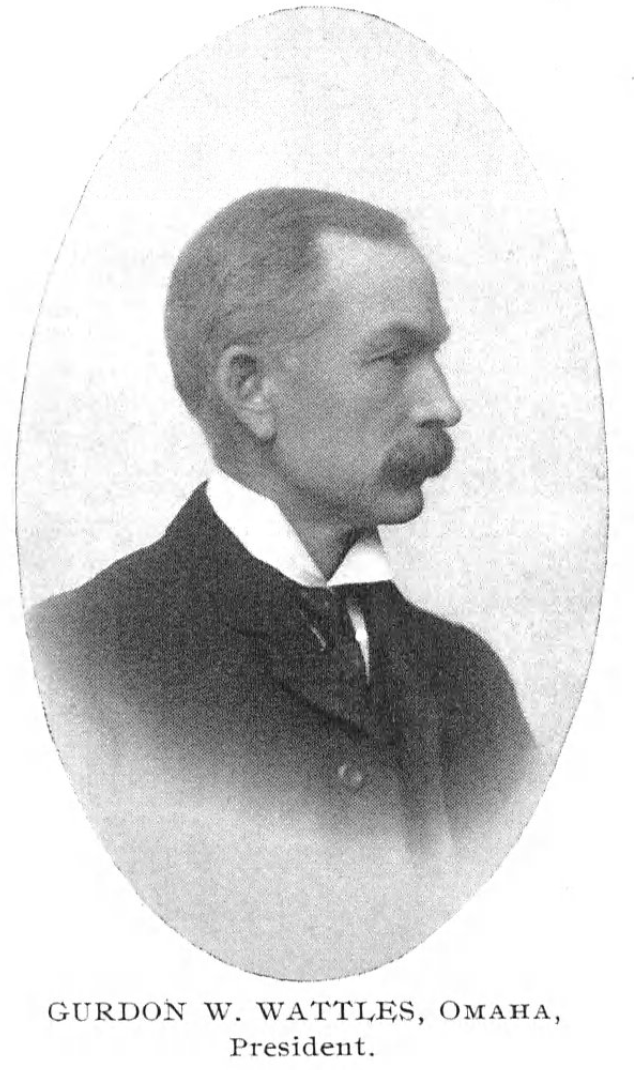



Instead of constructing a Nebraska state building, as all the other states did, Wattles and company decided to house a Nebraska pavilion within the Palace of Agriculture, setting the state apart from the rest. Famed architect Thomas Kimball designed a 98 x 52 foot space designed to advertise Nebraska to the world. Upon entering the pavilion, visitors would pass through several areas, including a reception room, a ‘Palace of Horticulture,’ a ‘Palace of Eduction,’ and a stuffed, world award-winning steer to show off Nebraska’s immense cattle industry. Eventually they would make their way to the main attraction, which was the novel movie theater everyone was talking about. The entire structure was housed within the Nebraska Pavilion, described in the ‘Report of the Nebraska State Commission to the Louisiana Purchase Exposition’ in some detail:
A huge tower, completely covered with ears of corn and surmounted by a great ball and eagle, was erected. Four large pyramids of solid corn flanked the tower, and the entire space was enclosed with long tables where was shown the very best corn of the state. Here over eight-two varieties of corn were shown, Nebraska exhibiting more distinct varieties of corn than all other corn states showing in the exposition. Here also was shown a collection of twenty-six bottles of products from corn.
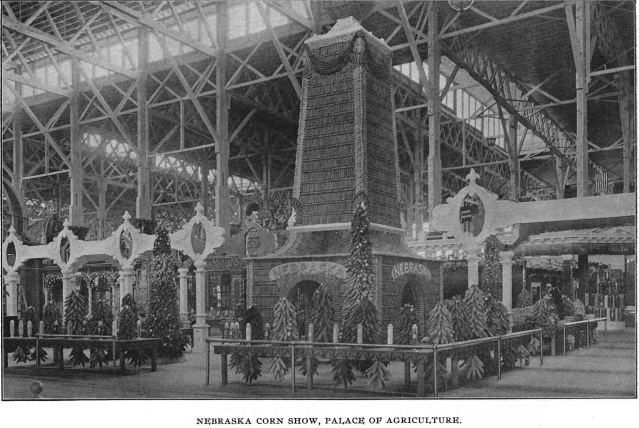



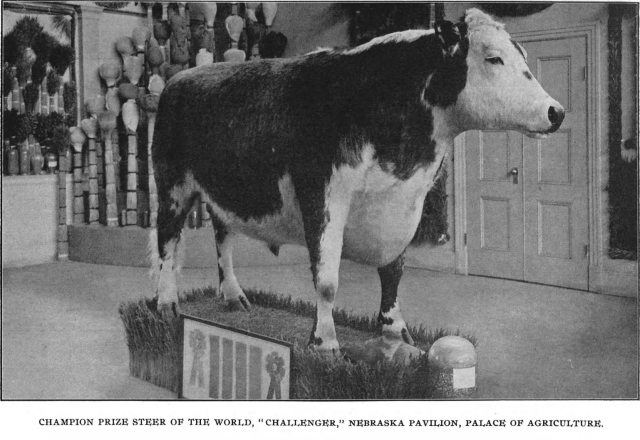
The theater was a huge success, so much so that the original plan to have two showings per day had to be adjusted to meet demand, and shows were given every half hour from 10am to 6pm, along with a lecturer who would narrate the scenes and provide facts to further showcase the state. Footage of President McKinley’s speech, along with scenes of farmers, ranchers, and city life, left audiences stunned, the new medium of film offering an exciting novelty experience different from the rest of the state exhibits. The power of cinema was on display, the screen making its early appearance in the politics of a state government as a persuasive force. Even as viewers of today would likely consider the film a snooze-fest, people in 1904 crowded into a 100-seat theater, which was later expanded by another 100 seats to meet the high demand. The numbers tracked by the State Commission Report demonstrate just how high demand for moving pictures were, even in their earliest stages of development, even if they merely showed scenes of daily life in the Cornhusker state. Total attendance reached 70,00 per month, averaging well over 200 viewers per showing, meaning people were willing to stand in order to see the film.



The State Commission Report went on to claim the Nebraska theater:
… established a new idea in the matter of advertising a state’s resources and advancement at an exposition. Shortly after the Nebraska moving pictures were installed and presented to the public, the idea was copied by other states and by various larger manufacturing corporations and put into execution at the exposition… Moving picture experts also declare that the Nebraska pictures have created a demand of a new kind for work in their line. Since the Nebraska Commission began showing its pictures, an entirely new idea has been evolved. The moving picture, from a purely entertaining feature, has advanced into the educational and scientific field.
The educational nature of the film didn’t make it any less desirable. Of its many fans, the Nebraska theater’s most enthusiastic was none other than Geronimo, who at age 74 only had five years left to live. By this point the old man had learned how to utilize his fame to earn money, much of which he gave to Apache children to help them get an education. He learned how to write his name in English lettering and sold these to lines of white tourists eager to purchase a piece of the legend to take back home and show off. He watched the Nebraska film over and over again, seemingly entranced by the moving images of farmer, cattle, city life, and especially the shots of wildlife, which he enjoyed most. Geronimo was so taken by the experience that he decided to share the magic of motion picture with a group of Apache school kids.

The image of Geronimo, an old, frail man struggling with alcoholism and womanizing, fairly alone by this time (towards the end, he had one daughter who stayed around to take care of him), sitting in a dark movie theater surrounded by all the trappings of Western civilization and “latter-day gods” of industry, enjoying a moving picture with Apache school children is striking. He had no choice but to embrace the very same kinds of technologies that had destroyed his people, and was giving his blessing to the future Apache leaders, the children, to get acquainted with the ways of the white man, to learn them and utilize them for their own well being.
The tamed savage, gently embraced by the peaceful lady liberty, was displayed as a symbol of Manifest Destiny’s triumph not only in the artwork of the St. Louis Exposition itself, but in newspapers of the day in order to tell the story of the reformed Geronimo as an individual. ‘Little Miss St. Louis,’ embodiment Christian society, liberty, innocence, and the maternal gaze from which white society viewed the Indigenous peoples they had successfully conquered, colonized, and possessed, offers Geronimo the pipe of peace. In the Nebraska movie theater, Geronimo made peace with the fate of his Indigenous peers, to whatever degree that was possible for a man who’d experienced the traumatic journey he had. He was giving the Apache children some light, however little it may have been, in the darkness of what had become of his peoples’ ways of life, what had become of their autonomy to live in the ways authentic to them. He was endorsing the inevitability that the white man’s culture would annihilate his own, and attempting to make peace with that horrible truth.



The power of imagery to carry propagandistic messages about moral virtues, the nature of power dynamics, and as promotional material was nothing new at the turn of the 20th century. Images have been used for thousands of years for these exact purposes. But with the advent of the moving picture, opportunities opened for those with the vision and access to utilize it for these purposes. As early as February 1898, the idea of filming the impending war against Spain was already in circulation. Thomas Edison and and some of his competitors at Vitagraph Studios ended up capturing film of the war, which was then utilized as the very first propaganda films in history. At the 1898 Exposition in Omaha, a movie theater housed Edison’s films, a popular attraction which inspired Wattles to shoot the film of Nebraska only five years later.


In the decade after the St. Louis Exposition of 1904, hundreds of inventors experimented with new technologies, pushing the medium to new levels of efficiency and popularity. The mixture of entertainment and education continued to blur as people crowded into theaters to watch boxing matches, news reels, and the first series of feature films starring professional actors. But it was a single 1915 film, ‘The Birth of a Nation,’ that finally broke the seal off the lid of power waiting to be unleashed by film, and the kind of hold it can have over an entire nation as its captive audience. D.W. Griffith, armed with the cinematographic talents of Billy Bitzer and the powerful narrative already penned by Thomas Dixon, utilized a dizzying array of innovative techniques for the film, which combined into the first blockbuster film in history, which every American had to see at least once, if not multiple times in the theater. The film sold out in cities across the nation for months on end, further spreading the white supremacist propaganda Dixon added to the already overwhelming level of anti-Black racism and violence that permeated through society.
Despite the obvious and blatant racist message at the core of the film, it passed the National Board of Censorship of Motion Pictures, a group composed almost entirely of white women, without issue. Then with the movie’s premier in Los Angeles, local NAACP leadership appealed to local censors, the mayor, chief of police, and city council, but to no avail. Even as The Sims Act of 1912 outlawed interstate transport of boxing films, in effort to subvert the racialized performances of boxer Jack Johnson successfully dominating white athletes in the art of pugilism, anticipating these images would provoke bloodshed, white America appeared unwilling to extend its hand of censorship to Dixon and Griffith’s racist propaganda. The fledgling NAACP, at 5,000 members nationally, had a steep mountain to climb if it were to stop the rising tide of approval ‘Birth’ was gathering.
For those arguing to ban the film, there was precedent. In the wake of the Atlanta race riot in 1906, Dixon’s wildly popular theater production for ‘The Clansman,’ the novel upon which ‘The Birth of a Nation’ was based, was banned in several cities, including Macon, Montgomery, and Philadelphia. The reasoning was obvious, with different critic only varying in their descriptions of the dangers it posed to society. The play had already been tied to the lynching of a Black man in Georgia the previous year, and tensions were at a fever pitch. The Washington Post called for a ban in D.C., calling the play a “spark in a powder house.” In Philadelphia, when the mayor refused to stop the production, Black residents came out in number to physically confront it, and all who patronized it, with nonviolent direct action.



According to the New York Age, a crowd of a couple hundred protestors first gathered and then:
… by 8 o’clock there were 3,000 filing the streets and jeering those who entered the theatre. The crowd was very orderly, and well under the control of its leaders… But inside the theatre a more unruly set had gathered in the gallery and as soon as the curtain rose began to pelt the actors with fragrant eggs and aged vegetables. This fusillade threw the audience into a panic…
One representative of the activists stated:
The gathering of our citizens last night was not that of a riotous or unruly mob. We came as orderly, peaceful citizens to show by our presence in large numbers our indignation at such a base production. We were not riotous, but the play is, and it incites to riot and to hatred of our people all who see it….
This was a debate about art and censorship that rages through society to this day, a debate where there are some clear lines to be drawn, and where much grey area and many, perhaps unanswerable, questions lurk. Surely art can’t be considered the primary cause of violence in this world, lest we attribute World War II and The Holocaust to Hitler’s obsession with the virulently anti-semitic composer Richard Wagner and his art, which frequently contained violent themes. Does Shakespeare, with its rape, incest, murder, and infanticide cause violence? Does the Old Testament, with all the ingredients of Shakespeare plus god-ordained genocide, cause violence? Surely the popular opinion is that they absolutely don’t, yet a Pew poll from 2007 showed 70% of Americans think rap music causes violence. If we move back through the 1950s and back to the time of ‘The Clansman,’ surely there were similar views about rock n roll and jazz music, which have been well documented. The double standard is glaring, making hypocrites of people who are far too often unaware of how their own deeply embedded racist worldview shapes their opinions on things.
The difference, of course, is almost entirely racial in nature. Shakespeare, Wagner, Hitler, and the Abrahamic god himself (after whiteness appropriated him), are considered white, while jazz, rock n roll, and rap music are, or at least were, considered Black. Footage of Jack Johnson making fools of his opponents terrified white society so profoundly that they quickly moved to ban it at the national level, lest it cause violence, and these were merely images of boxing matches between consenting, professional athletes of different racial categories, competing according to the rules of the sport. Yet Dixon’s work, which was clearly designed to evoke anti-Black racism, was only banned by a few scattered local authorities. Even though the federal Supreme Court ruled in the 1915 Mutual Film Corp. v. Industrial Commission of Ohio case that films were not protected under the first amendment, and were subject to state discretion in terms of licensing, few state authorities moved to ban ‘Birth.’ The national consensus was to let the the white supremacist propaganda play, because it was a masterful work of art regardless of how anyone might interpret its message.
One might argue that if rap music doesn’t cause violence then neither does Dixon’s pieces of theater, but this argument would fail to recognize how blatantly and overtly propagandistic Dixon was in attempting to oppress Black people through his works. As documented earlier, Dixon’s protagonists spewed racist diatribes as if they were Shakespearean literary masterpieces, as if they were the moral teachings of the wisest philosopher. In ‘The Clansman,’ as in all his novels, his heroes spoke in ornate passages that gave white supremacy a sort of Biblical language for white supremacists to latch onto, spread, and indoctrinate with:
Black hordes of former slaves, with the intelligence of children and the instincts of savages, armed with modern rifles, parade daily in front of their unarmed former masters. A white man has no right a negro need respect. The children of the breed of men who speak the tongue of Burns and Shakespeare, Drake and Raleigh, have been disarmed and made subject to the black spawn of an African jungle! Can human flesh endure it? When Goth and Vandal barbarians overran Rome, the negro was the slave of the Roman Empire. The savages of the North blew out the light of Ancient Civilization, but in all the dark ages which followed they never dreamed the leprous infamy of raising a black slave to rule over his former master! No people in the history of the world have ever before been so basely betrayed, so wantonly humiliated and degraded!…
In the final passages of the novel, Dixon planted the seeds that would become the calling card for the second wave of KKK that sprang into existence from his propaganda, which leapt from the pages of his books and later the flickering images on movie screens captured by the light of the sun, the burning cross which symbolized the “revolutionist” white supremacist warfare against attempts to destroy Civilization itself through Black suffrage and attempts at reaching equal status, which Dixon and his ilk automatically viewed as Black dominance:
At twelve o’clock Ben stood at the gate with Elsie.
“Your fate hangs in the balance of this election to-night,” she said. “I’ll share it with you, success or failure, life or death.”
“Success, not failure,” he answered firmly. “The Grand Dragons of six States have already wired victory. Look at our lights on the mountains! They are ablaze—range on range our signals gleam until the Fiery Cross is lost among the stars!”
“What does it mean?” she whispered.
“That I am a successful revolutionist—that Civilization has been saved, and the South redeemed from shame.”
Earlier in the novel, Dixon introduced the concept of the burning cross as a symbol for the KKK, a symbol that had not been used since the 1745 Jacobite rebellion, and was never used by the first wave of KKK back in the Reconstruction era. Dixon first conceived the idea in his novel, in a scene where a Klansman holds a burning cross with a Black man bound and gagged on the ground beneath him. The Black man had raped an angelic white Southern woman, and rather than live with the shame of having been tainted, she and her mother jump off a cliff to their deaths. A variation of this scene appears in ‘The Birth of a Nation,’ in a scene where a Black man asks a white Southern woman for her hand in marriage and she refuses, so he chases her off a cliff, where she falls to her death. In response, the KKK capture the captain and hold a “trial” in which the grand wizard convicts him on the spot, in front of a burning cross. After killing the captain, the KKK dump the man’s body at the doorstep of South Carolina’s governor, with the words KKK and a skull and bones logo left on the body, an act of white supremacist terrorism framed as heroic vigilante justice, in response the legalization of interracial marriage. As usual, laws promoting basic equal rights were viewed as acts of tyranny in the eyes of white Southerners. The iconic movie poster also showed a Klansman on horseback holding up the burning cross, a powerful symbol that captivated the hearts and minds of millions across the nation.




The film and novels by themselves were never enough to revive the Klan from a few thousand members in 1915 to five or six million a decade later. Dixon and Griffith both went on the offensive, arguing the film promoted peace and that its suppression would be ‘intolerance’ of the truth about the Reconstruction era, a continuation of the Lost Cause mythology but this time playing out not within academic circles, but in American popular culture. Both men armed themselves with propaganda pamphlets to spread around to their audiences. Dixon had already published a pamphlet defending the written and theatrical versions of ‘The Clansman,’ which was handed out at showings of the play. The pamphlet included a biographical background of Dixon, a synopsis of the play, the story of how the play came to be, and then the author’s “Famous Articles,” which were propaganda that would have made Joseph Goebbels proud. Of course, Dixon included a photo of himself, legs crossed, pen and pad in hand, with the smug look of a talented, self-satisfied, racist propagandist written across his face. His bragging rights were backed up by the overwhelming popularity of his work.




The biographical section in Dixon’s pamphlet, written by E.F. Harkins, reads as a propaganda piece propping up Dixon’s character and defending his work much in the way a political advisor would spin a story for maximum affect. First, Harkins summarized Dixon’s thesis against Reconstruction and progressive views on race relations:
“Can the Ethiopian change his skin or the leopard his spots?” Can the thoughtful white man here admit the negro to full social and political equality? Possibly some Northerners would vote for a negro of Dr. Booker T. Washington’s stamp for Presient of the United States. Mr. Roosevelt has had Doctor Washington at dinner in the White House. But would the most sympathetic Northern negromanic, a refined, aristocratic white man, courage and permit a negro to marry into his family?
Then Harkins simply allowed Dixon to defend his own work, in his own words:
“I have not sought to arouse race hatred or prejudice. For the negro I have the friendliest feelings and the profoundest pity… I claim the book is an authentic human document, and I know it is the most important moral deed of my life. There is not a bitter or malignant sentence in it. It may shock the prejudices of those who have idealized or worshipped the negro as canonized in ‘Uncle Tom.’ Is it not time they heard the whole truth? They have learned only one side for forty years… The only question for a critic to determine when discussing my moral right to publish such a book is this: Is the record of life given important and authentic? If eighteen millions of Southern people, who at present rule, believe what my book expresses is it not well to know it? I assert that they do believe it, and the number of Southern white people today who disagree with ‘The Leopard’s Spots’ could all be housed in a half-acre lot. I challenge any man to deny this. If it is true, is it not of tremendous importance that the whole nation shall know it?”
In essence, Dixon’s argument falls down to the fallacious reasoning that if a lot of people think something is true, then it must be true. If we applied this same logic to the time of Copernicus, then the truth was that the Sun revolves around the Earth, until the Copernican Revolution persuaded the majority of people that the Earth actually revolves around the Sun, at which point that then became the truth. Dixon would have a point if he were in a courtroom with a bunch of unbiased eyewitnesses, but the Civil War and its aftermath wasn’t exactly the type of event that produced unbiased parties. The entire nation was at war, after all. And can it be that if a bunch of white supremacists in the South say Black people are savage beasts out to rape and pillage white civilization, then it must be true? Of course it seems ridiculous to most people today, but Dixon apparently persuaded many people, including Northerners, a century ago.
Dixon’s diatribe continues:
I have for the negro race only pity and sympathy, though every large convention of Negroes since the appearance of my first historical novel on the race problem have gone out of their way to denounce me personally and declare my books caricatures and libels on their people. Their mistake is a natural one. My books are hard reading for a Negro, and yet the Negroes, in denouncing them, are unwittingly denouncing one of their best friends.
I have been intimately associated with Negroes since the morning of my birth during the Civil War. My household servants are all Negroes. I took them to Boston with me, moved them to New York, and they now have entire charge of my Virginia home. The first row I ever had on the Negro problem was when I moved to Boston from the South to take charge of a fashionable church at the Hub. I attempted to import my baby’s Negro nurse into a Boston hotel. The proprietor informed me that no “coon” could occupy a room in his house in any capacity, either as guest or servant. I gave him a piece of my mind and left within an hour…
… My books and plays are simply merciless records of conditions as they exist, conditions that can have but one ending if they are not honestly and fearlessly faced.
These “conditions,” as he went on to explain, are that by the year 2000 there will be “60 Million Negroes” (there were in fact 34 million Black people living in the U.S. at the time), and that because the forces working against Black people are too strong, because white supremacy is so overwhelmingly popular, there will inevitably be a race war. In order to justify the validity of this concept, he cited the musings of one British philosopher named Frederic Harrison. In other words, Dixon’s argument was that he couldn’t possibly be racist and was actually Black peoples’ best friend because he grew up having Black people working for him and his family, and got mad one time when a Northerner wouldn’t let a Black woman breastfeed his own child, in the chattel slavery tradition. And if anyone called out the blatantly racist portrayals of Black people in his work, well that was just because it’s a tough truth that Black people are savage beasts (and also he wants us to know he isn’t racist.) The mental gymnastics Dixon utilized are gargantuan in scale, obviously ridiculous on their face, but again, these ideas caught fire around the nation and spread the idea of the KKK as heroic Christian superheroes from Atlanta to New York and San Francisco.

Then, as if to announce to the world that his protagonists’ racist statements reflect his own racist views, he recycled a line one of his protagonists in ‘The Clansman’ uses to illustrate his own white supremacist ideology:
Education is the development of that which is. Since the dawn of history the negro has owned the continent of Africa—rich beyond the dream of poet’s fancy, crunching acres of diamonds beneath his bare black feet. Yet he never picked one up from the dust until a white man showed to him its glittering light. His land swarmed with powerful and docile animals, yet he never dreamed a harness, cart, or sled. A hunter by necessity, he never made an axe, spear, or arrowhead worth preserving beyond the moment of its use. He lived as an ox, content to graze for an hour. In a land of stone and timber he never sawed a foot of lumber, carved a block, or built a house save of broken sticks and mud. With league on league of ocean strand and miles of inland seas, for four thousand years he watched their surface ripple under the wind, heard the thunder of the surf on his beach, the howl of the storm over his head, gazed on the dim blue horizon calling him to worlds that lie beyond, and yet he never dreamed a sail!
In other sections of the essay, Dixon’s language wasn’t as restrained:
Expressed even in the most brutal terms of Anglo-Saxon superiority there is here an irreducible fact. It is possibly true, as the Negro, Professor Kelly Miller, claims that the Anglo-Saxon is “the most arrogant and rapacious, the most exclusive and intolerant race in history.” Even so, what answer can be given to his cold-blooded proposition: “Can you change the color of the Negro’s skin, the kink of his hair, the bulge of his lip or the beat of his heart with a spelling book or a machine?”
… This creature, with a racial record of four thousand years of incapacity, half-child, half-animal, the sport of impulse, whim and conceit, pleased with a rattle, tickled with a straw, a being who, left to his will, roams at night and sleeps in the day, whose native tongue has framed no word of love, whose passions once aroused are as the tiger’s – equality is the law of our life! – when he is educated and ceases to fill his useful sphere as servant and peasant, what are you going to do with him?
Through implication, Dixon appears to have agreed with Professor Miller’s assessment that white people are “the most arrogant and rapacious, the most exclusive and intolerant race in history,” then offers a critical assessment of his own life work’s thesis, that you can’t change a Black person’s savage nature, calling it “cold-blooded.” Here, Dixon shows himself more clearly than in the dodgy, gaslighting language where he claimed to be Black peoples’ best friend. His true nasty soul came to light and it’s clear he was *proud* of being arrogant, rapacious, exclusive, intolerant, and cold-blooded. It was these qualities, in his view, that made the white race so superior to others. In the zero-sum worldview of the racist, he was afraid that in empathizing and working with Black people to form a more equal society, whiteness would then become dominated by other races who beat them at their own game.
It’s here that Dixon’s argument becomes economic, rather than purely racial. He went on to spend quite a bit of space attacking Booker T Washington and the Tuskegee Institute:
If there is one thing a Southern white man cannot endure it is an educated Negro. What’s to be the end of it if the two races are to live forever side by side in the South? Mr. Washington says: “Give the black man so much skill and brains that he can cut oats like the white man – then he can compete with him.”
And then the real tragedy will begin. Does any sane man believe that when the Negro ceases to work under the direction of the Southern white man, this “arrogant,” “rapacious” and intolerant race will allow the Negro to master his industrial system, take the bread from his mouth, crowd him to the wall and place a mortgage on his house? Competition is war- the most fierce and brutal of all its forms. Could fatuity reach a sublimer height than the idea that the white man will stand idly by and see this performance? What will he do when put to the test? He will do exactly what his white neighbor in the North does when the Negro threatens his bread – kill him!

Finally, Dixon laid out his conspiracy-ridden worldview in defense of the Klan and all it stands for, a framework hinging upon the prospect of Thaddeus Stevens’ attempt to confiscate Southern land from the local aristocrats and distribute it evenly between people, including formerly enslaved Black people, as a form of reparations for the war. His effort failed, of course, and Andrew Johnson’s corrupt administration bowed to the demands of the Southern oligarchs and the terrorist organization they utilized to maintain the racial apartheid state, at least as close in form as they could, to the former system of chattel slavery they had become so used to and dependent upon. In Dixon’s worldview, the KKK saved civilization itself, through its acts of terrorism:
Mr. Stevens determined to blot the old South from the map, confiscate the property of its citizens, give it to the negroes, deprive the whites of the ballot, send their leaders into beggared exile, enfranchise the negro and make him the master of every state from the James to the Rio Grande…
… During this period in South Carolina 80,000 armed negro troops, answerable to no authority save the savage instincts of their officers, terrorized the state and not a single white man was allowed to bear arms. Hordes of former slaves, with the intelligence of children and the instincts of savages, armed with modern rifles, paraded daily before their former masters. The children of the breed of Burns and Shakespeare, Drake and Raleigh had been made subject to the spawn of an African jungle. When Goth and Vandal overran Rome and blew out the light of civilization they never dreamed the infamy of raising a black slave to rule over his white master and lay his claws upon his daughter… The Ku Klux Klan, a secret oath-bound brotherhood, rose, disarmed every negro and restored Aryan civilization.
As if to add a cherry on top of his rabid conspiratorial rants, in his obsession with interracial sex, romance, and marriage, Dixon tied Stevens’ radicalism to his ‘wench,’ a “yellow vampire” mulatto woman of “extraordinary animal beauty” whom he claimed poisoned his mind and sat by his side as he lay dying, “sinking with this woman into the night of negroid animalism.” As usual, the paranoid racist mind tied love between people of different races into the very fabric of society coming undone at the seams. Dixon would recycle these same themes into all his subsequent works, the mark of a man who had found his brand, which became wildly popular, and who appears to have been a true believer in all the racist ramblings he scribbled onto paper from beginning to end.
By the time ‘The Birth of a Nation’ was released, both Dixon and Griffith were prepared for the inevitable storm of criticism, and unleashed a blitz of propaganda in defense of the film, and of film in general, as an attack on freedom of speech and, predictably, on civilization itself. Griffith’s version of Dixon’s propaganda pamphlet was called, ‘The Rise and Fall of Free Speech in America.’ Its central claim centered around the concept of ‘tolerance’ and ‘intolerance,’ tying attempts to suppress their film into the poisoning of Socrates, the burning of Joan of Arc, even the crucifixion of Jesus. If censors wish to suppress images of violence, Griffith argued, then they would be denying the role of the villain in any Shakespearean play, and even in the Bible itself, if the censors followed their argument to its logical conclusion. He also made the case that censorship of film implies a slippery slope towards suppression of print media, and therefore would hasten the decline of civilization.
In contrast, according to Griffith, allowing film to flourish and depict historical conflict offers “light and progress” for people who can learn as much history from three hours of a film like ‘Birth’ than they could from reading entire volumes of books. This allows humanity to learn from the mistakes of our past, thereby reducing the chances of war breaking out over lack of understanding. In utilizing film as an educational tool, he argued, “the deadly monotony of the cheerless existence of millions would be brightened by this new art, two of the chief causes making war possible would be removed. The motion picture is war’s greatest antidote.” He then quoted an unnamed source, only described as an “eminent divine,” who described film as a medium that “teaches history by lighting.” (This quote has since been attributed to Woodrow Wilson, a close friend and old schoolmate of Dixon’s, but the attribution has been heavily disputed. It would follow, though, in line with Wilson’s decision to screen the film at the White House and the fact his own name appears in the film, waxing poetic about the heroism of the KKK.)
Like with all effective propaganda, Griffith’s pamphlet included numerous illustrations to demonstrate Griffith’s main arguments. On the front cover, Lady Liberty herself is shackled in chains.





Unlike Dixon’s racist tirades full of child-like bitterness and ignorance, Griffith’s approach is not without merit in terms of the arguments themselves. It is true that villains, and therefore villainous human behavior such as violence, are necessary components to storytelling, and are part of all the classics nobody would think of censoring, including The Bible. It’s also true that any form of censorship ought to be scrutinized heavily before it’s enacted, and every effort must be made to keep it from overreach, lest it spread to places where it shouldn’t exist. Film has also proven to be an incredibly powerful tool in the field of education.
However, when the context of any piece of artistic work, literary, theatrical, cinematic, or otherwise, involves the systemic oppression and dehumanization of entire groups of humanity, and the art overtly aims to contribute to that oppression and dehumanization, then the standard rules and ethics surrounding censorship no longer apply. In 1915, the world had not yet seen Leni Riefenstahl and The Holocaust. Even to this day, humanity has yet to fully process exactly how and why something like that could happen, and how Nazi works of racist propaganda helped make it possible. The power of harnessing light to project images onto a screen had not yet been fully realized, and the dangers that can come from it not yet witnessed. Griffith made the case that teaching “history with lightning” through film is our best shot at learning from the mistakes of the past, but was so blinded by his own embedded white supremacist worldview, and certainly to a large degree by his own ego and vanity, to see that his work was a massive punch down onto one of the most vulnerable groups of people in the world. In other words, he failed to anticipate the problems his own work might contribute to the historical mistakes humanity must study in order to avoid repeating again in the future.
Leaders of the NAACP were not so blind. They lobbied the National Board of Censors and at one point came away from a meeting convinced the second, and most virulently racist, half of the film would be cut. This turned out not to be true, as the censors held a subsequent meeting with Griffith in which he promised to make a few changes, which ended up being only cosmetic, and the mildly re-cut version was approved by the Board by a vote of 12 to 9. The NAACP then appealed to Mayor Mitchel of New York, who seemed at least somewhat sympathetic to their concerns. A delegation of 500 members of NAACP, clergymen, and sympathetic censorship authorities presented their case at City Hall, with W.E.B. Du Bois was at the helm.
The moment of unity was a mirage. Booker T. Washington, clinging to relevancy in his waning years, threw a wrench in Du Bois’ wheels by sending one of his cronies to meet with the mayor a week before the delegation at City Hall, convincing him to screen the film at once and take decisive action. Mayor Mitchel informed the NAACP delegates that he had already seen the film and spoken with its producers, and they had agreed to cut two objectionable scenes from the film, at the mayor’s request. Washington said he was proud to have taken “some of the wind out of their sails,” referring to his rival Du Bois’ organization. Of course, Dixon and Griffith only made a few more cosmetic cuts to the film, the most ludicrous scenes (a forced marriage and a Black character chasing the white woman off the cliff) remained. They had successfully outmaneuvered the NAACP and the mayor of New York simply by lying their way through it all.
By the time of its New York Premier, he had inserted a new slide into the beginning of the film in a ‘Plea for the art of the motion picture,’ framing the battle as one of showing the “dark side of wrong” and illuminating the “bright side of virtue,” and repeating the line about classic works being granted freedom of expression, implying that film was being unfairly singled out:

After numerous attempts to nip the spread of ‘Birth’ at the bud failed at the national level, it became the responsibility of local NAACP chapters to combat the film in their own cities. The battles were fought in a tug of war fashion, with some city officials offering promising moments solidarity, but ultimately, the film always ended up being shown regardless. City leadership in Pittsburgh and a few other cities had at least given lip service to banning the showing of the film, and in Omaha, John Albert Williams, George Wells Parker, and the staff of The Monitor sounded off on the issue, offering Pittsburgh as a model for other cities to copy. They offered a copy of a resolution circulating against the film that laid out some of the basic arguments against the film:
WHEREAS, The colored race has been humiliated by the exhibition in various cities of this country of moving picture films which are not true to the life of these worthy citizens of this republic, and
WHEREAS, No race of people in modern time has made greater progress in civilization and are more worthy of praise, rather than libel, for the upward climb they have made from their former position of servitude to that of first class American citizens, therefore be it.
RESOLVED, That the Mayor be and is herby requested to direct the Director of the Department of Public Safety to inaugurate a rigid censorship of all films in which this race is depicted and is present the exhibition of such reels as ‘The Birth of a Nation,’ or any similar moving picture which tends to bring disgrace, criticism or scorn on the colored people of our city.
At the tail end of this issue of The Monitor, a brief editorial made the case that if ‘Birth’ were to be shown in Omaha, city leadership would be expected to make similar stands against it as had been seen in other cities before it:
We have abundant grounds for encouragement in the growing sentiment in many parts of the country to remove causes of irritation by forbidding the presentation of moving pictures and plays which misrepresent our race and create prejudice. In this connection the action of the Pittsburg, Pa. city council, noted on the first page of this issue, is significant and highly gratifying to all lovers of truth and justice. Similar action has been taken in other cities. Should an attempt be made to show these photoplay here, we know that our mayor and city commission will fall in line with the authorities of Boston, Chicago, Pittsburg, Cleveland, St. Paul and other cities in forbidding their presentation with the objectionable features against which protest has been made.
Unfortunately, the mayor of Pittsburgh had offered a caveat to his support to ban the film. He would prevent the showing of the film “unless forced by courts to do so,” which in city after city across the nation, courts did. In Omaha, the outcome was no different. Faced with an overwhelming blitz of advertising and raving reviews in the local papers, Williams and Parker were swinging against a Goliath they didn’t quite have the reach to knock down, let alone land any decisive blows against. The Brandeis Theater downtown, a city jewel only five years old at the time, hosted the film against all objections, and the people of Omaha and its surrounding area flocked to see what was billed as nothing less than the “Eighth Wonder of the World.” Local advertisements even contained defenses of the film in and of themselves. On its opening day in Omaha, November 14th, Booker T. Washington passed away, leaving the door open to W.E.B. Du Bois and his NAACP peers, including John Albert Williams, to take the helm as the leaders of Black people in their fight for equality.





As the gears of Dixon and Griffith’s propaganda machine churned, the World Herald simultaneously ran editorials praising the film’s majesty, with lines that could have been written by Dixon and Griffith themselves:
Never before has matter in glowing and highly, but artistically colored action, been so masterfully and effectively brought out by means of musical accompaniment as in “The Birth of a Nation,” D.W. Griffith’s photo spectacle, now being presented at the Brandeis theater. Every passage is musically explained to every amazed spectator and listener. “The Birth of a Nation” inspires patriotism, teaches history, prolongs peace and commands respect for music better than any offering before public display.
So completely swept away that all sense of everything but the rapidly unfolding scenes before you is lost, the spectator of “The Birth of a Nation” entirely forgets that he is watching a picture, and enjoys this colossal spectacle exactly as he would if it were being presented in actuality in a gigantic coliseum.
“The Birth of a Nation” may injure the feelings of some, and it may open wounds long healed in others, but when one stops to realize that the picture is merely an historic presentation of facts as they were more than half a century ago, there is no reason to feel the slightest offense.
… The second half of the picture has been called an exposition of “the second struggle between the north and the south,” a struggle caused by an attempt to impose carpet-bagger rule upon the conquered states. The wild adventures and achievements of the Ku-Klux-Klan dominate the final scenes, which yield a happy ending to a double romance of the southern and northern sweethearts.
… When a photo-play can force a modern day audience into tears at intervals of ten seconds through a period of two and a half hours, or bring this same audience to its feet in a wild frenzy of cheering, it must be admitted that the picture is a masterpiece. This is exactly what “The Birth of a Nation” does. It cannot be helped. One is but human, and humanity, the world over, expresses its emotions, either with tears or cheering.
This wonderful photoplay could be described in columns; it is entirely too large a thing to be intelligently criticized in a brief space. Suffice to say that whoever misses it will live to regret the day. It is a historic and histrionic masterpiece that everyone should view – not once, but several times.
The people of Omaha and its surrounding area took the World Herald’s advice, as by the end of its first record-breaking six week run, about one in four people in the region had already seen the film.

The World Herald even offered a long-winded defense of the film which ultimately boiled down to the straw man argument that the film’s critics expected it to be 100% objective truth without a hint of bias:
That stupendous photo play, “The Birth of a Nation,” is now showing in Omaha, and in Omaha as elsewhere industrious and respectable negroes are moved to protest against its presentation because they believe it operates to create prejudice against their race. In one sense they are right. The play does tend to create a prejudice against the negro of the time and place with which it deals. Just in the same way does “Uncles Tom’s Cabin” tend to arouse feeling against the whites of the ante-bellum South. Neither, it should be unnecessary to remark, is it a strictly accurate and truthful and impartial record of that lamentable portion of American history with which it concerns itself. Even the most carefully and scientifically prepared history is replete with errors and unfairness, conscious or unconscious on the part of the writer, of both commission and omission. Quite naturally, a novel, such as “The Clansman,” on which the play is based – a novel written from a violently biased viewpoint, must contain the same defects multiplied a thousandfold.
Station a dozen of Omaha’s best trained and most experienced citizens at Sixteenth and Farnam streets for an hour. Require them, on their departure, to write down fully and truthfully everything that they observed at that tiny pin-point on the map of Omaha – itself a pin-point on the map of the republic – within that little bit of time. You will have a dozen different reports, no two in exact agreement, some of them differing radically. What, then, can be expected of the written history of a continent, of a race? And how much less is to be expected of a dramatic plea such as “The Birth of a Nation!”
But there is another angle from which to consider this truly remarkable production. It shows us a certain element of the negro population of the south after several generations of slavery. It shows us negroes who had had no voice or share in the shaping of their own destines, in the control of their own lives and activities. It shows us the negro with no chance except such as the white man, his master, had given him. It shows us, in a word, the negro as the white man had made him.
Compare the typical negro of “The Birth of a Nation” with the negro of today, either north of south. The written history of all time records no other human achievement comparable with what the negro has made of himself, under the most adverse and discouraging circumstances. In barely two generations of freedom – or freedom of a sort. The more unflatteringly the negro as he came from the hands of the white man in 1865, is depicted, the more startling becomes the contrast with the negro of fifty years later, and the higher the degree of credit due to the race.
In reading these passages, it becomes clear that the organs of Dixon and Griffith’s propaganda machine reached out through the press like the tentacles of a massive octopus, their main talking points regurgitated through local newspapers almost word for word. The language in the World Herald editorial sections was every bit as much of a gaslight as Dixon’s pamphlet, even down to the idea that Black people ought to be thankful for such a film, since it only makes it clear how far they’ve come since the days of Reconstruction – the NAACP’s own argument flipped and turned against it. As The Brandeis was gearing up to break local attendance records with its showing of the film, a local judge basically washed his hands of it, saying it was not within his purview to say whether it should be shown or not.

When Williams and his NAACP peers took the issue to Mayor Dahlman, he agreed to pass an ordinance banning films that incited racism in the future, but told them it was already too late to stop ‘Birth’ in its tracks. According to the Omaha Bee,
An ordinance to prohibit motion pictures, vaudeville, drama, songs, advertisements or bill displays which tend to incite race hatred or riot has been introduced by Mayor Dahlman…
… a section of the ordinance reads, “Or which shall represent or purport to represent any hanging, lynching, burning or placing in a place of ignominy any human being, the same being incited by race hatred.
During the week a delegation of negro citizens called upon city officials to protest against allowing a motion picture spectacle already advertised. The officials contend there is no law covering a situation of this nature… The “Birth of a Nation” will be shown in its entirety.

As the film played to record crowds of enthusiastic fans at The Brandeis, debate over its merits raged across the ‘Public Pulse’ opinion section of the World Herald. Prominent local lawyer and civil rights activist H.J. Pinkett, who also wrote for The Monitor, offered his criticism while spinning his language to the best intentions of World Herald editorial staff, a subtly implied criticism of their propagandistic support for the film:
The colored people of that day and this… are the ones who suffer most. For they feel that this play is not only unjust to them, but to their northern friends who have done so much for them. And they know, too, that the play is not historically true. It shows nothing that is good in the negro; nothing of the homes that former slaves made for their masters not a sign of their gift of the free public school system to the southland nothing of the strong and honest men they produced in that day. Nor is there one unworthy deed of the Klu Klux Klan or the “red shirts” shown, when the records proves that these organizations burned the school houses which were established by northern men and women, and assassinated the white teachers, many of them women, to say nothing of the negro men, women and children who were killed by them.
But why bring these scenes here and try to justify what is unjustifiable. Of course, the reconstruction period was replete with excesses, alike by white and blacks of all sections. And if all persons in the north were as generous as the World-Herald has been to the negro, the wrong impression would not be made. But the younger generation, unfamiliar with the reconstruction period, accept the “Birth of a Nation” as true, and they go through life hating the negro and repressing him in every possible way.
The colored and white people are living here in amity and peace, why not help the weaker element instead of injuring it through the malignant scenes in this play. Let us put down these things which breed rancor and hate between groups and classes in society. As a great newspaper in our midst, you have brightened our horizon, and for that we are grateful.
Local progressive businessman S.J. Woodruff expanded on Pinkett’s claims by offering a critical analysis of the film’s historical accuracy, calling it “scientific lying,” and challenging the city of Omaha itself, as a whole, to reject it:
The play portrays that the first elections after the war were dominated by negro militia, that prominent southern-borders were refused a chance to vote, that whites were spied upon and abused by negroes, and that the Ku-Klux-Klan was organized to protect whites, especially women. The facts are that the Ku-Klux-Klan was organized and commenced its career of murder, arson and rapine in 1867. Keep the dates. Up to this time negro suffrage had not been proposed by congress or any political party. Neither the “Civil Rights Bill,” the second “Freedmen’s Aid Bill,” nor the fourteenth amendment, all passed by congress in the latter part of 1866, even hinted at negro suffrage. The fourteenth amendment was not ratified until July, 1868, over a year after the Ku-Klux-Klan commenced operations. All these acts only raised the negro from a chattel to a citizen, not a voter. The Ku-Klux-Klan was organized, not to prevent the negro from voting, but to precent him from having any of the rights of a man or citizen, even the right to life and family. Up to 1868 all the seceded states were under military governors supported by the armies of the United States, not negro militia. In July of this year, seven of these states were reconstructed and readmitted with all the state official machinery in operation, almost two years before the negro was given the right to vote; but at this very time this play pictures the south overrun with negro militia and noble white men deprived of their vote. What an audacity to so presume on the ignorance of the audience! But for the outrages of the Ku-Klux-Klan and the intolerance of the men of the south very likely the fifteenth amendment giving the negro the right of franchise would have been long delayed. Still I heard an Omaha audience applaud the Ku-Klux-Klan!
But the meanest, most brutal outrage is the series of pictures that aim to fasten on the negro race the ravishment of white women. These pictures are hideous. The plan is subtle. The whole plot is an appeal to the grossest prejudice. Where one white woman has been outraged by negroes perhaps a thousand white women and as many negro women have been outraged by white men. Still the audience applauded!… The whole play is an example of scientific lying polluting and poisoning public opinion. The play is no disgrace to the negro race; but it is a disgrace to the community that tolerates it.

In response, local “playwright” Louis H. Miller offered vicious words for anyone who would criticize a theatrical work of art, in any way, ever. In his rant, he included the blatantly fallacious argument that because the film was popular then it must be good:
This world has always had, more or less, what one might consider, a critic. No matter what play you might chance to view, you are very apt to come upon one that does not meet with your fancy… Now, critics get busy, find all the supposed flaws you might chance to see, saying only, they are with yourself. Then run home, tell your neighbors, what a punk show it is, what ignorant bliss, one must find, in the imaginary film land. Run the play into the very heart of Mother Earth, squeal about the money you had thrown away for going to see this worthless play. Call it a disgrace to the community, to tolerate so poor a lingering, lying, good-for-nothing photo-play.
Now, if the play had been a disgrace, why did it pass? Why did it shows for a record run at the Liberty theater in New York, showing 628 consecutive presentations of this noted spectacle… continuing there for an indefinite period? Now, was the spectators of New York a lubber-headed bunch of hay-seeds, or did they know when a good play came their way? I ask you, Mr. and Mrs. and yet Miss Critic, where is your mind flowing when you try to turn against such vast masses?
Recently Mr. or Mrs. S.J. Woodruff had a very neat unapplauded article in the “Public Pulse.” There was a very neat column of didn’t likes put in black and white. It caused some comment with those who are campers in the movie field. How strange some characters are, about giving their uncalled-for criticized thoughts. Not fearing that their work might pass the eyes of those who understand how the film came about, how it was written, how hard the directors worked to give a splendid play before the public’s eyes, how actors used their best influences, risking life, just to please others, what enormous amount was spent, what time it took and yet how easy for critics to run down…
Woodruff responded with heavy handed words of his own, including a powerful if somewhat dehumanizing metaphor about the oppressed condition Black people were forced to endure in the United States:
Mine eyes are moist with much weeping over the anguish of spirit of “Mr.” or “Mrs.” Louis H. Miller, photo playwright. The party aforesaid uses up a large amount of perfectly good words to say in effect that no matter how vile or unclean a movie picture is no one should say a word. Then comes a deluge of the astonishing logic that because anything passed in New Yawk (accent on the awk), it must be past censure! The next spasm of pain is over the fact that the editor of the World Herald tolerates public discussion. This writer intimates that an audience should have no opinion, but always applaud. If a movie is inane, vile, vulgar, vicious or malicious never cheep, sneak away without a word, maybe there is some chump who will like it…
… This particular play is a brutal, underhanded, malicious attempt to slander an entire race. It tries to beat back and crush down a race of men struggling from the depths of chattel bondage to the heights of movement, to put pitfalls in the path of progress is as mean and cowardly as a group of ruffians standing safely on the shore and pushing back to death in hopelessness a struggling animal that is using every ounce of its strength to escape the abyss of waters and gain life and freedom.

By December the owner of Brandeis Theater, C.J. Sutphen, representing Crawford, Philly & Zehrung, a corporate entity that operated theaters across the region, chimed in. In order to make the case that the film was historically accurate, once again echoing Dixon’s own arguments, he cited popular novelist and occasional Lost Cause pseudohistorian Edward S. Ellis:
I quote from “The History of Our Own Country”… by Edward S. Ellis… “The interlopers who flocked southward like vultures scenting their prey were said to carry all their possessions in a carpetbag from which they received the derisive name. The majority were adroit scoundrels, who took advantage of the ignorance and fear of the black men to secure power. They terrified the negroes by making them believe that if the democrats gained the upper hand again, they would make slaves of the colored people. The carpetbaggers and southern “scalawags” (generally former fire-eaters and plantation overseers) plumed the states headlong into debt. They openly bribed the voters, stole hundreds of thousands of dollars, debauched the negroes of whom the most besotted and ignorant, unable to read or write, were sent to the legislatures to make laws for their former masters. They lounged in their seats, with their huge feet elevated in front while they smoked expensive cigars for which the state paid; they adjourned pell-mell to attend the circus, rode in gorgeous carriages beside gorgeously arrayed black women, whose houses were furnished with carpets costing $1 a yard, and with furniture corresponding; they wallowed in Champaign, voted away vast sums of money for thieves, who divided with them, and who joined in their wild rioting and deviltry.”
By Christmas Day, with the film coming to the end of its first run in Omaha, the editors of The World Herald once again strongly asserted support for the film, although with an added caveat that the film is simultaneously a great record of history *and* a work of fiction, followed by more propagandistic language that could have easily been penned by Dixon or Griffith themselves:
“The Birth of a Nation,” a living history of the civil war and the troublous reconstruction period which followed, will close its successful engagement of six weeks and one day at the Brandeis theater tomorrow night. In many respects it has exceptional value as a historical record, otherwise it is fiction. The scenes run on hundred, perhaps thousands of them, and the combined sum is the greatest of picture dramas, in scope the mightiest, in treatment the most daring, in theme the most intimate, in feeling the richest. In these unhappy times it is a great argument for peace.”
With the record breaking ticket sales enjoyed by those who profited from the film’s unprecedented success, ‘The Birth of a Nation’ returned for runs in Omaha again at the Brandeis and Boyd theaters in 1917. The prospect of dollar signs kept theater operators coming back to the honey pot again, and again, and again, and movie-goers kept coming back for more, like they were addicted. The Brandeis Theater offered tickets at half the former price for its 94th showing in that theater alone, a number that was massive for the time.

This time, however, the tone was a little different:
By the patronage at the Boyd theater yesterday, one might suppose that “The Birth of a Nation” had never before been shown in Omaha. This, however, happens to be the fourth engagement. Once more, as formerly, this film spectacle, pageant, romance and melodrama of the civil war and reconstruction period, succeeds in rousing excited approval. Excited is the adjective which describes the ardors of applause, especially during the rescue scenes in the second part, when the Ku-Klux-Klan makes its dramatic charges, first to save the heroine and then to save the Cameron family…
…That the film story bristles with prejudice against the negro is not to be doubted. The blacks of the south, during the dominance of the carpetbag administration, are shown to be about as savage as were the whites during the mob riots in East St. Louis. But regardless of the race antipathy which such a film may be likely to foster, “The Birth of a Nation” still holds its place as the peerless film production.
Between the ‘Birth’s’ first run in Omaha at the tail end of 1915 and its subsequent run at the end of 1917, East St. Louis had erupted into a catastrophic anti-Black riot that left the city in ruins and up to 250 people dead, many more left severely wounded, homeless, and hopeless. It had had all the ingredients of previous and subsequent race riots, with white labor tensions and misplaced anger towards Black strikebreakers, corrupt city officials, rabid anti-Black racism, and lots of alcohol. The riot was so severe, and apparently hit so close to home, that World Herald editorial staff likened the behavior of white supremacists in East St. Louis to that of the Black villains portrayed in the film.



The East St. Louis riot also caught the attention of W.E.B. Du Bois and his NAACP colleague Martha Gruening, who traveled to the scene of the crime in order to do a thorough piece of investigative journalism for ‘The Crisis.’ Their report, titled ‘The Massacre of East St. Louis’ offered a detailed account of the events leading up to the riot as well as eyewitness accounts from the ground about the violence itself. What started as random beatings devolved into what can only be described as full on ethnic cleansing. The white mob burned sixty houses to the ground, then shot, stabbed, beat, raped, and tortured anyone, men, women, children, elderly, as they attempted to escape. Black people set on fire crawled onto the streets and sidewalks as their houses were incinerated in front of them, breathing their last. One mother was forced to watch her husband and son be killed, then was raped and beaten unconscious, almost to death, and woke up in a stack of bodies missing her scalp. As she came to, she suddenly realized she had been stacked on top of her son’s corpse. A white man reached his fingers into a gaping hole in a Black man’s head, like it was a bowling ball, to hoist him to a rope. Dozens of Black bodies were left hanging, on display, down the main street in the Black business section of the city.


In Du Bois and Gruening’s telling, white union leadership was almost entirely to blame, and they had evidence to back the claim:
The leader of a labor union must be an opportunist. The psychology of any unskilled laborer is comparatively simple. To the knowledge then that his job is being held by an outsider add his natural and fostered prejudice against an outsider who is black and you have something of the mental attitude of the rioters of East St. Louis. Doubtless it was with some such prophetic vision as this that Edward F. Mason, secretary of the Central Trades and Labor Union, issued a letter, the facsimile of which appears on the opposite page.

In publishing their searing expose, Du Bois and the NAACP were utilizing the printing press in combat against white supremacy, in the same way Black newspapers had been doing for nearly a century by then. His hope was to spread knowledge not only of the atrocities themselves, but also of what caused them, including the socio-political factors related to labor and capital that were so heavily embedded into the racial fabric of society at the time. The idea behind this was ultimately a call to action against systemic racism, the written word providing kindling to the fire of resistance. The effort bore some fruit. Membership in the NAACP soared from 9,000 in 1917 to 90,000 in 1920, and many thousands attended a nonviolent protest against race riots in the form of a ‘Silent Parade,’ which was also documented in ‘The Crisis.’ The seeds of a civil rights movement were sprouting.

As NAACP membership soared, so did membership in the KKK. Disgruntled preacher William Joseph Simmons capitalized on the popularity of ‘The Birth of a Nation’ to bring Dixon’s new hooded, cross-burning Klan to life, by staging an event to coincide with the film’s Atlanta premier. On Thanksgiving Day, Simmons and a small group of friends went to the top of Stone Mountain, 25 miles east of Atlanta, and staged the first real life KKK cross burning event. He even took out advertisements in the local newspapers, and received glowing media coverage at the same time the film was making its first waves across the nation. The Atlanta Constitution described the KKK as a “new secretive organization founded with a view to taking active part in the betterment of mankind.” On opening night, Simmons and his cronies donned their robes on the backs of hooded horses, marching down Peachtree Street firing their rifles into the air. Across the nation, Klan members distributed their own propaganda in addition to the film. Thus, Dixon’s propaganda leaped from the pages of his novel to stages across the nation, then to the silver screen and, finally, leapt from the screen into reality. Membership peaked at five million in 1925, which is to say nothing of the millions of sympathizers who supported the Klan without becoming official members.




What Simmons and the KKK had that Du Bois and the NAACP didn’t was the power of the film as a recruiting tool. Although there is debate over the degree to which ‘Birth’ sparked the surge in KKK membership that spiked in the 1920s, but it is inarguable that it served as an incubator for the second wave Klan, and that it was among the Klan’s most powerful tools in persuading people to their cause. Dixon’s use of “the rays of the sun to etch thoughts on yellow parchment” was a steamroller in the national battle for the hearts and minds of its citizens, and men like Du Bois and Parker, who typed furiously in rebuttal, lacked access to the film studios that made ‘Birth’ possible in the first place. The written word remained potent but the new, exciting medium growing out of Hollywood was dominated by white men writing, directing, and acting in everything cinema had to offer. Even the Black characters in ‘Birth’ were played by white actors in blackface.
There were, however, films being produced by Black people at the time to offer a counter-narrative to ‘Birth,’ but these were monopolized by Booker T. Washington and his circle, so they carried Washington’s brand of political propaganda. The Tuskegee Institute and The Hampton Institute both produced promotional films depicting young Black men going from rags to riches by studying a trade skill and then bringing his education back to his hometown in order to achieve economic prosperity and spread Washington’s gospel about Black empowerment through the trades. One of these films, titled ‘A New Era,’ was even shown at the tail end of ‘Birth,’ at least sporadically in a few theaters in a few cities, as a way for censors to appease the NAACP, and came to be known as ‘The Hampton Epilogue.’ But white audiences generally did not care about it and this film has been lost to history, although descriptions of it remain.


The handful of films produced out of Tuskegee and Hampton were the seeds of what came to be known as ‘race films,’ which would tell stories from a Black perspective, humanizing rather than degrading Black people, all more or less through Washington’s accommodationist lens. These were pro-Black films but remained limited to the scope and aim of publicizing the institutes that created them. One Hampton Institute graduate named George P. Johnson, along with his brother Noble, took the next natural step and formed the second Black owned and run film production studio in history, The Lincoln Motion Picture Company. (The first had been formed in Chicago only a few years earlier, but didn’t last long and only produced novelty “burlesque” films portraying Black people in stereotypical ways). Although the Johnson brothers expanded Black film to more elaborate cinematic storytelling, they largely stayed within Washington’s ideological framework. Their stated purpose was “producing Negro moving pictures that will reflect merit and credit upon the Race, as well as opening up a field of employment to Negroes and an opportunity to make profitable financial investments.”
The Johnson brothers operated as a team with Noble working as an actor and writer in Hollywood and George acting simultaneously as chief writer, booking agent, producer, and publicist. The Lincoln Motion Picture Company set out in their task to counter Dixon and Griffith’s narrative from their filming stage on Tennessee Avenue in Los Angeles, just east of Santa Monica, officially incorporating with only $75,000 in hand. While Noble made moves acting in Los Angeles, appearing in 34 films between 1915 and 1918, George networked and publicized their movies through mail, notably with the owners of Black newspapers in Chicago, St. Louis, New York, New Orleans, Philadelphia, and Atlanta. After a full day at work building a film network from his home office at 2816 Pratt Street in Omaha, George then worked a regular 3pm to midnight shift for the post office. He would continue this double shift, switching between his labor in film and postal delivery, for the rest of his working life.




Lincoln Motion Picture Company’s first film, ‘The Realization of a Negro’s Ambition,’ starred Noble Johnson as a Black man who graduates from the Tuskegee Institute to work in the oil drilling industry in California, but is denied a position due to his race. After saving the life of a wealthy white oil man’s daughter, he is given a prominent position and while leading a drilling expedition, realizes the land under which oil lay resembled the land on his father’s farm back home in the South. He returns home and discovers there is a bounty of oil under the land his family owns, making them rich, and marries the woman he loves. Similarly to how Parker sought to reverse Dixon’s thesis in ‘The Leopard’s Spots,’ the Johnson brothers used ‘Realization’ to reverse the thesis presented in ‘Birth.’ Instead of featuring a Black antagonist chasing a white woman off a cliff to her death and then being executed under a blazing cross, their film featured a Black protagonist saving a white woman’s life and then realizing his ambition, the American dream of rags to riches – the Horatio Alger narrative for a Black audience.
George Johnson premiered ‘Realization’ in a test run at two white owned movie theaters in Omaha, then utilized his network of contacts in cities across the nation to shoot the film, and Lincoln Motion Picture Company, to roaring success. Theater managers wrote to Johnson about how their audiences raved about the film, setting the Johnson brothers up as the premier ‘race movie’ producers in the world. During the National Negro Business League’s weeklong convention at Lincoln Electric Park in Kansas City, the film was viewed by leading Black entrepreneurs and received a glowing review in ‘The Kansas City Sun,’ which stated:
This educational and interesting picture marks the beginning of a new era in the production of Race pictures. Feeling that the trend of public sentiment among the Race lovers of the silent drama is growing so antagonistic to the insulting, humiliating and undignified portrayal of the cheap burlesque, slap-stick comedies so universally shown as characteristics of the Afro-American ideals, the Lincoln Motion Picture Co. of Los Angeles, Cal., a Race firm, has in their first release successfully eliminated these undesirable features and produced a really interesting, inspiring and commendable educational love drama featuring the business and social life of the Negro, as it really is and not as our jealous contemporaries would have us appear.


Following the film’s success, the duo turned to history in order to tell another story of Black empowerment. Their subject was the the famed 10th Cavalry, also known as the Buffalo Soldiers, and their experience along the Mexican border during the Mexican Revolution. Their aim was to display the heroic sacrifice Black men contributed to the American project, a demonstration of their courage, intelligence, and ultimately their loyalty to the flag. This was the same cavalry regiment who had done the heavy lifting in tracking down Geronimo before his capture, and who had guarded him from escape as he was transferred from Arizona to Florida as a prisoner of war. He was one of many Native American warriors either wounded, captured, or killed by the 10th under the banner of the American flag. It was Native Americans, after all, who gave them their nickname in the first place, for the texture of their hair and fierceness in battle.
Just months before Geronimo came to Omaha for the Exposition, and before President McKinley delivered his blustering imperialistic speech there, the Buffalo Soldiers charged up San Juan Hill alongside Teddy Roosevelt and his Rough Riders, a decisive battle in that splendid little war. Sgt. George Berry was the first to reach the top of Kettle Hill and plant his 10th Cavalry’s colors into its ground alongside the American flag. They went on to suppress Filipino resistance fighters the very next year, who utilized psychological warfare against them by distributing leaflets encouraging them to defect and fight against a nation where they’re treated as subhumans, noting the stories of lynchings as their evidence. The leaflets promised positions of respect amongst the Phillippine Revolutionary Army, a chance to live as an equal. A handful of Black soldiers took up this offer and one of them, David Fagen, became a captain who fought and killed American soldiers so efficiently that the U.S. government put a price on his head. While a decomposed head was brought in by a Filipino defector who claimed it was Fagen’s, and the U.S. government quickly announced the news, it’s highly likley that Fagen continued to live out his life peacefully with his Filipina wife.
The Buffalo Soldiers’ mission in the Philippines was a point of major contention among Black thinkers at the time. Ever the optimist, conservative Booker T. Washington encouraged Black soldiers to sign up and prove their loyalty to the United States, while the realist progressive W.E.B. Du Bois said they should stay home and fight against the lynchings in their own backyards instead. In essence, these soldiers were being asked to prove their loyalty not only to the United States, but also to that lingering strain of the American DNA that is whiteness.
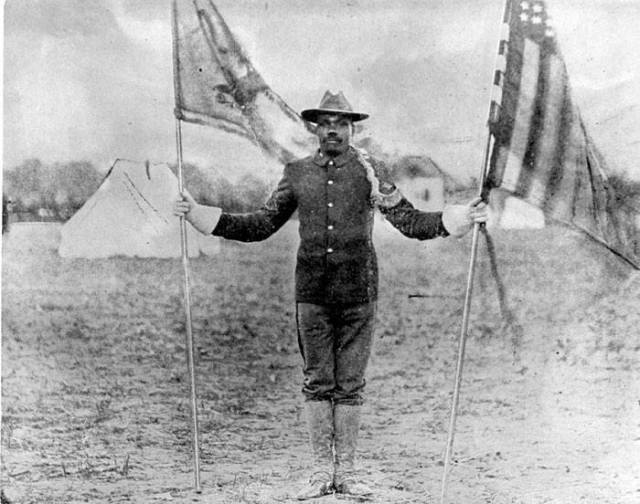

Washington might have truly hoped some heroic sacrificial lambs thrown into the embers of American imperialism might increase the chances that white people would begin to see them as human, and the soldiers would go home to much patriotic fanfare, but in reality he witnessed Jim Crow go from bad to worse. With each step closer Black people took towards empowerment and true equality, the more severely whiteness lashed the whip back down onto them in order to remind them of their place.
Between the time the Buffalo Soldiers stormed up San Juan Hill in 1898 and the Mexican Revolution was sparked in 1910, they heard and read about anti-Black pogroms in Wilmington (where white supremacists literally took the democratically elected government in a bloody coup), New Orleans, several in New York, Little Rock, Atlanta, Springfield, and finally in dozens of cities across the nation following Jack Johnson’s defeat of Jim Jeffries. Very few white people were ever punished for their violence, and the leaders of the Wilmington coup ran the state of North Carolina for a generation afterwards. In 1906, Teddy Roosevelt turned his back on the Buffalo Soldiers by ordering 167 of them dishonorably discharged after a false accusation that some of them had fired shots that killed a white person in Brownsville, Texas, where they were stationed. They had seen Washington’s dreams for them, and for Black people as a whole, maimed and tattered, again and again.

Yet there the 10th Cavalry were, in the scorching heat of the Chihuahuan Desert in June of 1916, charging straight into the bursts of Mexican gatling guns in the Punitive Expedition to capture or kill Pancho Villa. They were sent into the unnecessary Battle of Carrizal, in which they were outnumbered 10 to 1 by the ego of their white commanding officer, Captain Boyd. In a melee lasting roughly an hour, 14 of them were killed and many more wounded, with 23 taken as prisoners of war, stripped naked, taken by train to Chihuahua City, and forced to march a mile and a half to a penitentiary. After being fed near starvation rations and being forced to sleep on concrete floors, they were released and sent back to the U.S. through El Paso. Details of the battle made headlines, often in exaggerated form, and the soldiers received a hero’s welcome.
One of the more inspiring details from the Battle of Carrizal, about a dying white officer and one of his Black comrades, reads like a scene from a movie:
The black man fought in deadly shamble side by side with the white man, following always, fighting always as his Lieut. fought. And finally when (Lieutenant) Adair, literally shot to pieces, fell in his tracks, his last command to his black trooper was to leave him and save his own life. Even then the heroic Negro paused in the midst of that hell of courage for a final service to his officer. Bearing a charmed life he had fought his way out. He saw that Adair had fallen with his head in the water and with superb loyalty the black trooper turned and went back to the hailstorm of death; lifted the head of his superior officer out of the water, leaned his head against a tree, and left him there dead with dignity when it was impossible to serve him any more. There is no finer piece of soldierly devotion and heroic comradeship in the history of modern warfare that that of Henry Adair and the black trooper who fought with him at Carrizal.
Out of this incident, the Johnson brothers formed the framework for the second film, ‘A Trooper of Troop K.’ Noble played the lead role as Shiftless Joe, a Black man who is fired from his job, thereby losing the prospect of marrying the woman he desires, Clara. To make matters worse for Joe, another more successful suitor is seeking Clara’s hand, and while the suitor disparages Joe’s character, she encourages him to enlist. Joe ends up at the Battle of Carrizal where he rescues his white officer and helps his fellow soldiers escape their Mexican enemy’s clutches, winning him a promotion and the status that comes from having your name and heroic actions printed in the newspapers, after which he finally wins Clara’s hand in marriage. Although the character and many of the aspects of the story are fictional, the battle scene was staged with some historical accuracy, making the film a work of historical fiction, or a docudrama. The core difference between fact and fiction is the account of a Black soldier returning to the danger of battle to give his white officer a more dignified death being exaggerated into Shiftless Joes saving his white officer’s life.


The official movie poster the Johnsons devised to promote the film depicts its key scene, with Shiftless Joe carrying his white officer over his back to safety. The image stands as a reversal of the famous Judge Magazine cartoon utilized in classrooms across the nation to depict the concepts of the ‘white man’s burden,’ which was published in light of the new territorial expansion the U.S. engaged in with the Spanish American war. Uncle Sam is shown carrying racist caricatures of Cuban, Puerto Rican, Filipino, Guamanian, and Hawaiian people up a mountain over boulders representing barbarism, ignorance, oppression, vice, superstition, cannibalism, and other negative human traits, towards Lady Liberty, who sits atop the mountain representing civilization per usual.
In the Johnson brothers’ narrative, people of color are not savages in need of saving at all, but are in fact capable not only of defending the United States, but of defending white people individually and collectively. The question might arise as to why the first two Lincoln films featured Black protagonists saving white peoples’ lives as key plot devices, instead of Black people saving other Black people, but as the Johnson brothers knew all too well, if their business was to thrive, they would eventually have to woo white audiences. The growth of the movie industry was moving at rapid pace, and in order to keep up with the white Joneses of Hollywood, Lincoln would eventually need to siphon some of the big studios’ customers into their fold.
In catering to whiteness, Lincoln films were not only saving the United States and individual white people, but saving whiteness itself, in the broader sense, in the process. Within the context of all the Jim Crow violence that occurred in the years between the Judge Magazine cartoon and the Battle of Carrizal, Black troops serving in the U.S. military in expanding and protecting its borders were proving their loyalty not only to their nation, but to white expectations that people of color make sacrifice without true gain in equality. Black soldiers had, after all, fought in every war the U.S. fought in some capacity, and had been serving in combat roles sacrificing their own lives for a nation in which they were second class citizens. From 1775 to 1916, these troops were never able to see their status as human beings recognized under law. But in ‘A Trooper of Troop K,’ like in all race films, the hope is still there just over the horizon.


Like its predecessor, ‘Trooper’ wowed Black audiences nationwide. As a docudrama, it even found its way into churches, schools, and fraternal lodges. After a showing at Wiley University, an hbu in Texas, the college president said, “Could Noble Johnson have heard the applause and the singing, ‘My Country ’Tis of Thee’ by the audience during the battle scene in the picture, he would have felt rewarded for his clever acting.” Some of the enthusiasm also came from a jingoistic desire to kill the Mexican enemy, Black and Latino people being pitted against one another in bigotry for nationalist pride, as one commenter stated, “When Joe shot that greaser off the horse at the 8 o’clock show there was a yell let out that almost raised the roof.” The film left an indelible mark in the minds of Black people as a representation of their contribution to the film industry and to the American project as a whole.
Meanwhile, George Johnson continued his push to expand the company by advertising to potential investors, luring them with promises of giant returns in an exciting new market. In one ad, he highlighted the accomplishments already under their belt:
A chance to invest in a producing Film Company now earning profits. We are not offering a “prospect” company. We are offering a chance to invest in the stock of a Company that is operating, earning profits and that has so much business ahead that expansion is absolutely necessary. We have done all the preliminary work. We have grown in less than one year over 1,000 per cent. In the next year we should more than triple our growth. We have in sight thousands of dollars’ worth of business for the coming year. To handle this enormous demand we MUST HAVE MORE CAPITAL for faster productions, factory development and operating expenses.

When the U.S. entered World War I, the federal government appropriated $10 million for the production of propaganda films. George sought to capitalize on this opportunity, pitching the concept that 10 to 12 percent of that money be granted to Lincoln, in order for him to produce films that would speak directly to the 12 million Black patriots residing in the States. He wanted to produce films with titles such as, ‘The Evolution of the Negro Recruit,’ ‘The Negro at Work,’ and ‘The Negro as an Aid to the Administration.’ He argued that he was necessary to do the job right, or else any outfit assigned the task of depicting Black soldiers and patriotic citizens would only create “some humiliating farce in the way of a burlesque comedy staged by either white directors or inexperienced colored actors.” In a letter from the head of the director of publicity for the Treasury Department, George was gaslit, his concerns about how Black soldiers might be portrayed in propaganda films ignored entirely:
To be perfectly frank with you I do not think that the charge you make to the effect that the various publicity departments of Federal organization invariably treat loyal colored American citizens in a humiliating way is correct. It may be that some of the motion pictures portray the colored Americans in a humorous way just as they do the Southern colonel, the Irish, the stupid Englishman with his monocle and cane, the dude, the Western cowboy, the New England prude and the bloated bond holder.
Instead of portraying Black people in negative stereotypes, the white propagandists hired for the job simply didn’t do much of anything to include them. Even as the Johnson brothers took effort to appeal to white audiences, the same gesture was not issued in kind from the federal government, and George’s request was denied, and even as Lincoln films wowed Black audiences, the Johnson brothers’ attempts to reach white audiences didn’t catch on. While the Lincoln Motion Picture Company went on to make one more popular film starring Noble, in order to keep up with the latest film industry developments they were forced to reinvest almost all their earnings into the next production. This fact, on top of increased competition from other Black film production companies sprouting up around them, and the sad truth that white audiences simply didn’t appear to be interested in watching movies with Black main characters, left Noble in a tight situation when executives at his main paying gig with Universal pressured him to leave Lincoln and work for them exclusively. They had noticed Black audiences, when faced with a choice between seeing Noble in minor Universal roles or major Lincoln roles, tended to purchase tickets to the latter, and even this mild competition from a niche Black film company couldn’t be tolerated.
Like sharks, the white industry men smelled blood in the water and essentially forced Noble into choosing between his brother, and his Blackness, or the pot of gold white film studios could promise delivering on a regular basis. Johnson chose the latter, forcing George to seek a new leading man for his own projects. In his new contract, his own brother was forbidden from producing new material for advertising the three films Noble did with Lincoln. The contract specifically, and brutally, barred the Lincoln Motion Picture Company utilizing “any part of the negative or positive films, slides, stills, plates, cuts, heralds, or lithographs.” Noble went on to play minor roles in over 100 films, including classics such as ‘The Ten Commandments,’ ‘The Thief of Bagdhad,’ ‘The Mummy,’ ‘Ben Hur,’ and ‘King Kong,’ among others.
George went on to produce two more films with Lincoln Motion Picture Company, with new leading man Clarence Brooks filling the space Noble once did. After completion of the fourth Lincoln film, ‘A Man’s Duty,’ George took a leave from his job at the post office and set out on a guerilla marketing campaign. With a copy of the film in hand, he stopped to show the film and collect his portion of ticket sales in Topeka, Muscogee, Dallas, Fort Worth, and El Paso. His final destination was Los Angeles, where he would work on what ended up becoming his last film, and the only surviving Lincoln film today, ‘By Right of Birth.’ This film would be his official response to ‘The Birth of a Nation,’ and Lincoln’s biggest production yet.
The plot of Lincoln’s last film centers on Juanita, an adopted woman who accompanies and supports a Mexican-American man who is in the business of tricking Black freedmen allottees into selling their land to him, as he’s aware of oil under the ground. As he focuses on tracking down a missing allottee named Helene, Juanita finds out she’s Helene, meaning she’s a Black woman who’s been living as a white woman her entire life. She’s reunited with her biological mother and inherits her fortune. For its premier he booked the massive Trinity Auditorium, home to the Los Angeles Philharmonic, and hired the ten prettiest young women he could find to sell tickets – they sold out in a couple weeks. Sparing no expense, George even had valet drivers suited up in gloves, a Black cinema gala event for the ages.





While the premier party for ‘By Right of Birth’ was surely a blast, and the film gained Lincoln more rave reviews, it was not to last. Faced with the low ceiling that came with lack of Black owned movie theaters, and white owned theaters that would consider showing race films, plus the outbreak of the Spanish flu that had closed many of those theaters down, Lincoln finally came to an end in 1923. While Noble forged a storied career in white produced films, George continued working for the post office, now in Los Angeles, and documented the story of Black cinema as it expanded with new writers, producer, and actors who found more success than he had. Before his death in 1977, he donated a mountain of archival materials to UCLA, where they can still be accessed.
While George P. Johnson failed in his goal of generating enough profit to make his company, the second Black owned and run film company in history, he succeeded in being the first Black person to use “the rays of the sun to etch thoughts on yellow parchment – instead of dull printer’s ink,” and to harness this new powerful medium to portray Black characters in a positive light within the framework of serious narratives. Like George Wells Parker, the Johnson brothers sought to counter the mainstream narratives about race, history, civilization, and the very nature of humanity as one species who are all capable, intelligent, creative, courageous, loving, creatures. Dixon’s white supremacist narrative was only a more extreme and pronounced version of the consensus among white people that all the darker racial categories were inferior, so every time Black pioneers stepped into the arena of ideas to challenge that narrative, they were throwing rocks at a Goliath of whiteness, but this Goliath sustained those blows, and sustains them even to this day.
The story of the Johnson brothers reminds us that not all pathways of human progress are clearly defined. They are muddied with uncertainties, setbacks, failures, serendipity, and often great ironies. Noble Johnson’s very first movie appearance was uncredited, but it was in the most spectacular film produced since ‘The Birth of a Nation,’ and that was D.W. Griffith’s response to critics of ‘Birth,’ another epic cinematic experience called ‘Intolerance.’ Johnson’s fate as a minor character in white films seemed to be sealed from his very first step onto a movie set. In this instance, it was the most elaborate stage ever constructed at the time: a massive reconstruction of the ancient city of Babylon, complete with 300 foot walls and elephant statues, plus 3,000 extras wearing detailed Babylonian garments, all set up on what was then a quiet dirt road called Sunset Boulevard. Standing in the midst of the madness was Noble Johnson, playing the role of a Babylonian soldier during the Fall of Babylon. In succumbing to the powerful, wealthy white studio rather than continuing to pioneer Black-made films with his brother, many would say he sold out to the Babylon of Hollywood.

Eighteen years before Noble Johnson stepped foot onto Griffith’s gargantuan movie set, while Omaha Exposition tourists reveled in the exciting prospects of expanding Manifest Destiny beyond America’s continental borders, gawking at Black people in the Old Plantation, cheering as subjugated Native Americans staged sham battles with white men in redface, and standing in awe at the way it was all so beautifully and almost supernaturally lit up at night, they also swung by to see what was billed as *the* work of art of the 19th century. A single painting hung, enshrined in its own building, with advertisers drawing tourists in using signs declaring it the winner of a fancy contest in Paris. French painter Georges Rochegrosse depicted the destruction of one of the great cities of the ancient world, and the piece was titled simply, ‘The Fall of Babylon.’
The story of Babylon takes us back to the Biblical concept on the origin of races, that Noah’s three sons were of various shades of color, and that the darker colored descendants of Ham bore his curse through all of history, which explained and justified anti-Black racism to white supremacists. The same story explained the existence of different races generally to early pro-Black thinkers such as Alexander Crummell. But the story takes on more than just the meaning of race – it’s also an explanation for why humans of different races and geographical regions speak different languages, which confuses and puts us at odds with each other. In Hebrew, ‘ba-bel’ translates to ‘confusion.’
In the Book of Genesis there are two contradicting stories about the variation of languages among humans. The first, in Genesis 10:5, the three sons of Noah split into different language families. In the second, Genesis 11:1-9, all humans spoke the same language up until the construction of the Tower of Babel, when Noah’s grandson Nimrod was the ruler of Babylonia. Under Nimrod’s rule, his people rebelled against God and constructed the Tower of Babel in order to reach the heavens, which was seen an attempt to reach the same heights and status as their creator. God swiftly punished all of humanity for their sinful hubris:
Now the whole earth had one language and the same words. And as they migrated from the east, they came upon a plain in the land of Shinar (Babylonia) and settled there. And they said to one another, “Come, let us make bricks, and burn them thoroughly.” And they had brick for stone, and bitumen for mortar. Then they said, “Come, let us build ourselves a city, and a tower with its top in the heavens, and let us make a name for ourselves; otherwise we shall be scattered abroad upon the face of the whole earth.”
The Lord came down to see the city and the tower, which mortals had built. And the Lord said, “Look, they are one people, and they have all one language; and this is only the beginning of what they will do; nothing that they propose to do will now be impossible for them. Come, let us go down, and confuse their language there, so that they will not understand one another’s speech.” So the Lord scattered them abroad from there over the face of all the earth, and they left off building the city. Therefore it was called Babel, because there the Lord confused the language of all the earth; and from there the Lord scattered them abroad over the face of all the earth.


Later in the Bible, Babylon has grown into a great power while falling further into hedonism, from the time of Nimrod through Nebuchadnezzar, who destroyed Jerusalem, to his son Belshazzar, who is the last of the Neo-Babylonian kings. Babylon and its pagan population stand with Satan and all the vices of evil, in direct contrast to Jerusalem and its Godly, obedient population of Israelites. In the Book of Daniel, Belshazzar holds a feast in which he drinks wine from vessels his father had looted from Solomon’s Temple during the destruction of Jerusalem, yet another act of defiance and blasphemy against God. During the drunken festivities, a floating hand appears and writes some indecipherable words on the wall in front of everyone, and Daniel is asked to interpret their meaning, which he transcribes to read, “Mene, God has numbered the days of your kingdom and brought it to an end; Tekel, you have been weighed in the balances and found wanting; Peres, your kingdom is divided and given to the Medes and Persians.” The Medes then invade Babylon and Belshazzar is murdered, hence the term “the writing is on the wall,” and the subject of the famous painting hanging up at the Omaha Exposition in 1898.




The painting depicts Beltazarr on his throne in the right foreground, surrounded by his nude and semi-nude concubines, which surely angered some of the more conservative Christian elements in Omaha at the time. In the background, the invading force of Medes approach as Belthazarr and the few women who are awake look on, contemplating their impending doom. The Omaha World Herald described the painting and its popularity at the Exposition:
It represents the great sculptured half of the royal palace of Beslhazzar on the morning after a night given up to the wildest and most extravagant bacchanalian feasting and debauchery. The picture almost overwhelms the senses with its wealth of coloring. Its gorgeousness is superlative. No work of the present day is more striking in this regard. The building has only been thrown open to the public a day or two, yet great throngs have looked on the picture in wonder and amazement.
By the time depicted in Revelation 18, Babylon’s final and total destruction during the End of Times is foretold, as the Archangel Michael descends from heaven to illuminate the earth with God’s wrath against the unholy Babylonians, yet again. Their light is being snuffed out while the light of God bursts out through his greatest warrior angel:
After this I saw another angel coming down from heaven. He had great authority, and the earth was illuminated by his splendor. With a mighty voice he shouted: ‘Fallen! Fallen is Babylon the Great!’ She has become a dwelling for demons and a haunt for every impure spirit, a haunt for every unclean bird, a haunt for every unclean and detestable animal…
… Then a mighty angel took up a stone like a great millstone and threw it into the sea, saying, “Thus with violence the great city Babylon shall be thrown down, and shall not be found anymore. The sound of harpists, musicians, flutists, and trumpeters shall not be heard in you anymore. No craftsman of any craft shall be found in you anymore, and the sound of a millstone shall not be heard in you anymore. The light of a lamp shall not shine in you anymore, and the voice of bridegroom and bride shall not be heard in you anymore. For your merchants were the great men of the earth, for by your sorcery all the nations were deceived. And in her was found the blood of prophets and saints, and of all who were slain on the earth.”
Repeatedly through the Bible, light is separated from darkness, associated with God and godliness, and finally used to describe God’s wrath in the final judgement of humankind in the destruction of Babylon. But there is another, almost opposite meaning in the story of Satan. The name Lucifer means ‘light bearer’ or ‘morning star’ in Latin, and in the Book of Isaiah Lucifer is an angel of God whose attempts to become a brighter light than God cause him to fall down to sheol, or the place where the wicked are punished, also known as hell. In this sense, light also represents Satan himself, further adding to the list of what how light can be interpreted in different, and often opposite or competing, ways. Isaiah 14:12-15 reads:
How you have fallen from heaven,
morning star, son of the dawn!
You have been cast down to the earth,
you who once laid low the nations!
You said in your heart,
“I will ascend to the heavens;
I will raise my throne
above the stars of God;
I will sit enthroned on the mount of assembly,
on the utmost heights of Mount Zaphon.
I will ascend above the tops of the clouds;
I will make myself like the Most High.”
But you are brought down to the realm of the dead,
to the depths of the pit.


Varying concepts about the meaning of light played out in a painting that hung in D.W. Griffith’s own house, picturing himself surrounded the images from his own films, representing competing, and often confusing, ideas about race, civilization, history, religion, and morality. Warren A. Newcombe, who painted the piece for Griffith, described the use of light in his own words:
In the upper right is a light. I originally though of this as a sunlight arc in the studio which, combined with the stand for the director and the cameraman, would be the important point of a portrait of Mr. Griffith. This light then unfolded to me an idea which, as you see, is used as a symbol of Love, Victory, the Handwriting on the Wall, Tolerance. The light as the symbol of the Handwriting on the Wall in the temple of Belshazzar, as shown in the scene in the upper right, comes from Mr. Griffith’s ‘Intolerance.’ In the ray of light you will see a mother over a cradle, which expresses the Mother Love of the World, as brought out in ‘Intolerance’…. Following the light of Victory is the Ku Klux Klan, incidental of the Civil War, and ‘The Birth of a Nation.’

With so many competing and often conflicting notions of what light can represent, the confusion of tongues following the Tower of Babel, the opposing historical narratives regarding the origins of civilization, the origins of sin, and the origins of race itself, it becomes difficult to pin down what these things actually mean, or perhaps more accurately, what they ought to mean. George Wells Parker wrote his right hook punch to Dixon’s thesis about the Aryan myth and the origins of civilization by speaking about race in clear terms, using words like ‘Ethiopian’ and ‘Cushite’ and ‘Hamitic’ as if these were clearly defined things. Dixon also spoke about races in monolithic terms, so it makes sense that a response would utilize similar language in order to make clear counter-arguments. But Parker knew full well that the truth is much less clear, and that in terms of race as a social construct, there are few clear boundaries, with tons of overlap and nearly infinite shades of grey. Just one month after Noble Johnson’s image as a Babylonian soldier first appeared on a movie theater screen with the release of ‘Intolerance’ in September 1916, Parker wrote an odd, brief opinion piece in the Corsicana Daily Sun out of Corsicana, Texas, in which he made claims about the purity and impurity of race in Biblical terms:
The United States is a nation in the making, a people of potential dreaming of her destiny we need the geologian’s sense of time and the astronomer’s sense of distance. The verdict of history is that no pure blooded race has ever become great of itself. Such a race, if ever there can be one, must stand alone LIKE A SINGLE CHEMICAL ELEMENT AWAITING COMBINATION WITH OTHER CHEMICALS TO MAKE IT USEFUL.
National existence depends upon healthy ideals and sterling virtues. When a civilization become effete; when the moral law is shattered upon the rock of might; when lust, vanity, cruelty and oppression destroy purity, honorable pride, mercy and justice; when honest labor becomes degraded and the pursuit of wealth for wealth’s sake become the low ambition, then the fate of that nation is sealed. Out of the mists sweep a Sesostris, Darius, Alexander, Caesar, Atilla, Alaric or Bonaparte.
ALL ARE SCOURGES OF GOD COMING IN ANSWER TO INEVITABLE AND IMMUTABLE LAWS TO PURGE THE WORLD AND TO GIVE MANKIND ANOTHER CHANCE.

In his miniature rant, Parker suggests the concept of a pure race is a figment of our imagination, and also boldly declares that only ‘mixed race’ civilizations flourish and create useful, morally vibrant civilizations. In this claim, Parker suggests the path of civilization from Ethiopia to Egypt, then Minoa, Greece, Rome, Europe, and across the pond the the United States, is one of cross pollination of different ideas from different groups of people living in different places, all intermingling, procreating, and building together, rather than one straight line from one pure blooded race of people. The lines between various races, languages, and cultures have always blurred together in a mosaic, so the origins of civilization can be credited to many groups of people we would today categorize into many different racial categories. Not only is Parker ok with that, he appears happy this is the case. He wants this great human story to continue, but in order to move forward, Parker first sought to discredit the oppressive concepts that were keeping Black people oppressed, by flipping the Aryan myth around and replacing it with his own, pro-Black origin story in its place.
As young Parker gave his award winning speech at the Exposition in Omaha and visitors were flocking to pay money for the chance to see a single painting depicting the Fall of Babylon, a German archeologist named Robert Koldewey was gearing up to excavate the ruins of Babylon in the Iraqi desert. He would continue his work all the way until British soldiers overtook Egypt and he was forced to flee. He uncovered a treasure trove of cuneiform tablets that tell the story of Babylonia as part of one of the very first civilizations to spring up on the planet, Sumeria. History texts often credit Mesopotamia as the birthplace of both agriculture and writing, and therefore civilization, with cuneiform predating any other writing system on the planet. But the Fertile Crescent stretched into Egypt, and there is good evidence there were writing systems in parts of Africa appearing at roughly the same time as cuneiform did in the Middle East. In other words, there is no clear, easy, or simple answer to the question, “where did civilization come from?” It’s complicated.


In ancient Babylon, there was a story about Etana, a king whose wife couldn’t bear children, so he would not have an heir. He finds a wounded eagle that flies him high up toward the gods, in order to find the plant of life for his wife’s fertility, and then they fall back down to earth, crashing and shattering in the process. Ancient Athenians told the story of Icarus, who used his wings to fly too close to the sun, so they melted and he crashed down to the earth. In the Bible, Lucifer’s hubris gets him cast out of heaven and into the void of hell, and the arrogance of the Babylonians brings the destruction of their civilization. Are these not all variations of the same story? Is it not possible they were all told in some form, being copied, borrowed from, shifting and morphing in the process? It’s even possible humans in different parts of the world create nearly identical stories independent of one another, only to meet and create a fusion that would go on to fuse with others, and so on and so forth, for thousands of years, leading to the rich tapestry of cultures we’ve seen come and go over the milllennia.
Which leads to the final portion of this narrative.
In the United States at the turn of the 20th century, the American government was sending its soldiers to mow down any resistance to its expansionist tentacles, utilizing new technologies such as the Gatling gun, the latest and greatest weapon on earth. The myths used to justify this behavior told of Aryans, a genetically superior race of people carrying the torch of civilization and progress across the world, and of God’s chosen Christians, the white people of America, who were destined to spread the light of His truth, even at the end of a rifle. But these stories were not new. They were merely the latest reincarnation of stories and events that have been playing out since the dawn of humanity. Every group of humans who wield powerful new weapons and use them to crush much weaker enemies have told themselves, in one way or another, they were doing the right thing, that this was their destiny, part of God’s will.
The architects of the Omaha Exposition utilized incandescent light as a positive affirmation of white, Christian, American civilization’s role in the world during one of our most imperialistic moments as a nation. The idea that the American project was finally complete with the conquest and subjugation of the Indigenous peoples all the way to the Pacific Ocean, embodied in the defeat of resistance fighters like Geronimo, was called into question when the project didn’t come to a halt in California, Arizona, or Florida. The capitalist project needed more resources to extract, more islands on which to station military garrisons, more tentacles to reach out and grab more, more, more, sending its young men to kill and die in foreign lands many had never heard of before.
The Vietnam war had its precursor in the Philippines, with young American troops wading through rice paddies, facing ambush attacks from an unseen enemy that could easily slip in and out between warfare and civilian life, and Uncle Sam was scrambling to make sense of the ugly thing, to justify it. What were we there for? What did these people do to us? After delivering his rousing speech in front of thousands in North Omaha, President McKinley lit up in the darkness of the night, promising everything was all right, that we were the good guys and that it had all been well worth it. Incandescent McKinley spoke authoritatively from his glowing perch on high, “the American empire is the world’s most benevolent empire, and all of you should feel lucky and grateful just to be part of it.” This was the big ending of the big show that had been going on all summer, and which molded the hearts, minds, and imaginations of millions.


Six years later, at the Louisiana Purchase Exposition in St. Louis, while Geronimo signed autographs and watched movies of farm and city life in Nebraska with a fascinated gaze, visitors also walked up a hill to gaze upon a bizarre scientific contraption called The Pyrheliophor, a “sun machine” invented by eccentric Portuegese priest and self-taught scientist, Manuel António Gomes, also known as Father Himalaya. The machine consisted of 6,117 mirrors that rotated to compensate for the earth’s orbit as they captured, reflected, and concentrated the sun’s midday rays into a single point, producing a remarkable 6800 degrees Fahrenheit, twice the heat generated in electric arc ovens used to melt industrial metals. While Himalaya touted many potential uses for his contraption, including converting the heat and light from the sun into electricity, his ultimate goal was to patent his invention for industrial use, with the dream that it would become the new technology factories would use it to melt metals.

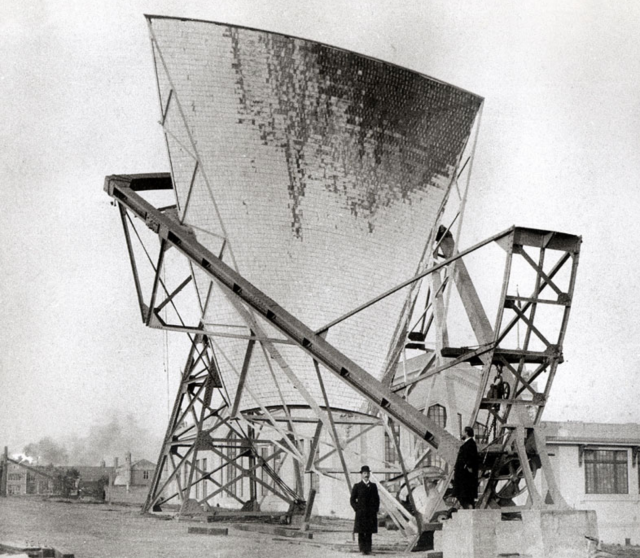
While his dreams of revolutionizing industry never played out, Father Himalaya wowed his audience in St. Louis, visitors and judges alike, taking home the grand prize for his invention. Visitors gasped as pieces of wood were set into the furnace of his contraption and vaporized in an instant. Newspapers touted his invention as practical machine that could melt and fuse even the toughest metals, and a scientific breakthrough that shattered prevailing scientific theories. The St. Louis Republic reported in depth:
A great scientific truth has been demonstrated at the World’s Fair. Through the aid of the great sun motor, just to the southwest of the Administration building, Father Himalaya has found without the possibility of a mistake, that the actual origin of the rays and the heat of the sun is electrical. This explodes a lot of theories and disproves many more that were based upon incorrect deductions.
The Pyrheliophoro, or sun motor, is the invention of Father M.A.G. Himalaya, a Portuguese priest and professor of physics and chemistry at two colleges in Portugal… He has found that the heat of the sun is more than double that of the electric arc… He has found that there is no known substance, not even asbestos, that will not fuse in his wonderful sun furnace, into which the concentrated rays of his great mirror reflector and concentrator are thrown. Asbestos always chars and sometimes fuses.
Manganese, the hardest known metal to fuse, melts and runs as water in the Pyrheliophoro. Iron has no opportunity to melt, so intense is the heat. Instead of fusing and running in liquid state as it would in a blast furnace, it shrivels and drys up and becomes as paper that has been burned in a fire…
… On the brow of a green hill looking toward the floral clock of the Agriculture building, with Forestry, Game and Fish in the rear and flanked to the west by the children’s working gardens, rises, not unlike a huge extended Morris chair, the pyrheliophor. A steel frame 42 feet high with conch-shell like outline painted brightly blue encircles the reflector. This reflector in shape suggests the section of a cone and in its suspended position the whole is not unlike the back of a reclining chair. The reflector is made of steel lattice slats, each set with mathematical accuracy…
The rays of the sun are collected by the reflector and concentrated so that they are thrown into the mouth of the furnace with a diameter or about fifteen to eighteen inches. If, says Father Himalaya, the rays could be further concentrated to a diameter of eight or ten inches a temperature could be produced so high that it would be almost beyond the conception of the men of science…
“This discovery has opened to me a window into the face of nature, which has been hitherto closed to us. I now have a well-based theory, only a theory as yet, however, as to the source of the electrical energy that produces the rays of the sun. I have found theoretically, at least, the way to use hitherto unknown forces of nature. If this theory of mine is practical, our knowledge of Nature will be settled upon entirely new basis, and our actual industrial methods of today will be changed. The problem of energy is to be solved in another way than those known at present… My apparatus proves conclusively that there is no limit to the high temperatures. With it we can reach the highest physically possible, and even a little higher than the actual temperature of the sun, owing to the mirror concentration. The present pyrheliophoro has not been constructed, however, for such very high temperatures. Such an instrument can be built for, say, $50,000, and I hope to accomplish this…”
The pyrheliophoro is to be removed from the World’s Fair grounds at the close of the Exposition and probably set up again at Lisbon, Portugal. Father Himalaya also hopes to enlist the aid of wealthy men in his own and other countries, in building another and larger instrument that will catch and confine the highest heat that is physically possible.


Father Himalaya aimed high in his goal to capture and harness the power of the sun, so much so that he aimed to produce the “highest heat that is physically possible,” the opposite of absolute zero, a temperature on the thermic scale he dubbed the “supreme degree.” Not only did he think humans could produce this temperature on earth, he thought we could control it and utilize it to our benefit. His contraption never took off, largely because his science wasn’t entirely on point, but also because most places in the world don’t produce the degree of consistent sunlight necessary to make it economically viable. His hopes and aspirations embody the modernist concept of human progress perhaps as much as any others, “playing with fire” taken to its maximum limit, but when Icarus got too close to the sun, his wings melted and he fell back to the ground. Just as the Babylonian Etana and his eagle, just as the Hebrew Lucifer and his lofty visions of grandeur, just as the people of Babylonia and their hubristic attempt at building their tower to the heavens, the same myths repeat across space and time, echoing through the ages.

Light has represented many different things to many different people through time: from the modernist concept of human progress, signified through new technologies such as the incandescent light bulb on display at the 1898 Omaha Trans Mississippi Exposition, to the light of Western civilization spreading concepts of truth, knowledge, and justice to the far reaches of the earth under the divine guidance of Manifest Destiny, to the Aryan myth about the origins of Western civilization, to Parker’s reversal of the Aryan narrative in his manifesto ‘The People of the Sun,’ to the vigilante form of ‘revolutionary justice’ dished out by the KKK under their burning crosses, to the power of cinema projecting images of light onto a screen to shape our beliefs about ourselves, others, and the world around us. It can even represent the supposedly final stages of knowledge through scientific inquiry, as in the case of the pyrheliophor, and the hubris that entails. In all these varying and opposing concepts of light as a metaphor, people on all sides claim to have the truth on their side, and with so many competing concepts of truth there is bound to be conflict, chaos, destruction, and death.
On June 5th 1904, eight thousand spectators lined the seats of an arena inside the St. Louis fair grounds, ready to see some blood spilled. It was on a sleepy Sunday when the rest of the fair was closed, but the crowd was on edge. They had been drinking, and they expected the dollar they’d spent on a ticket would reveal an authentic demonstration of Spanish bullfighting in front of their eyes, right there in the state of Missouri, where bullfighting had been banned by law. The prospect of illegal violence titillated them, sent adrenaline coursing through their veins. Although local animal rights activists groups had attempted to put a halt on the show, it was apparently still going on. The mood for human debauchery was properly set.
When a local official stepped in to stop the show, the crowd erupted in anger. When their demands for ticket refunds were refused, their anger turned to pure rage, and the scene turned to bedlam. Rocks were thrown, windows smashed, and bulls were let loose for spectators to abuse on their own accord. Eventually the arena was set on fire, burning to the ground overnight only to be seen again as a smoldering wreck the following morning. Various newspaper accounts provide vivid details of the mob’s savagery:
Parties of men smashed seats and every other smashable thing in the arena. Men escorting women hurried them from the area, but hundreds of women watched the destruction from neighboring lots. At 6:30 fire started in the hay loft of the stables, bringing a great cheer from thousands of spectators… A few moments later fire appeared in the arena. More shouts of approval were heard. The fire spread so rapidly that within a half-hour the entire building was doomed. No fire alarm was sent in. The engine companies on the World’s Fair grounds hasted to the convention entrance and began pouring water on the nearby World’s Fair buildings, making no attempt, however, to save the rapidly disappearing arena. At a late hour tonight the scene of the attempt today to hold a bullfight is a huge heap of smoldering ashes.
The mob had brought in the bulls, taken possession of the bullfighting paraphernalia of the Spanish matadors, and was giving a bullfight of its own, with three bulls in the ring, a dozen American bullfighters badgering them with small canes, while the mob, delirious with joy, howled like the bander-long and pelted the pestered bulls with chair, bottled soda, water, oranges and bananas…
… Dozens of men and boys were arrested during this two hours of rioting and burning out at the bullfighting arena, but the rioters arrested were so hotly defended by their fellow that only two boys and two men are in jail.
The riot and burning of an arena erected for bullfights in St. Louis carries with it two lessons. One is that the oft-repeated boast “that the American people are the most law-abiding people on the earth” is not entirely borne out by the facts, and the other is that while the government of Missouri is competent to stop a bullfight it is not competent to check a riot… The two most disturbing features connected with government in this country today are the disposition of mobs to take matters into their own hands when they feel so minded, and the incapacity of the various governments to enforce the laws except against individuals… Of course, the municipality of St. Louis will be required to pay the owner of the building for the destruction of his property, for it was the incapacity of the city government that caused the damage. There is no excuse to be given by a city of half a million population for failure to suppress a riot, and the courts will listen to no attempt to excuse a plain violation of duty… The authorities have virtually demonstrated that the great power of the State can handle the offense of a single violator of the law, but is powerless in the face of a mob of over one thousand persons. This is not a comforting proposition to be faced, but it must be faced nevertheless.



What stands out the most in this narrative is the way power is contested between various competing parties. State law made the entire spectacle illegal, yet no local officials came out to stop the gathering until the very last minute, after thousands had already paid for their tickets and gathered for the show. In a subsequent murder trial (an American matador shot and killed a Spanish matador, claiming self defense), some of the players involved claimed the St. Louis promoter had never truly intended to have a bullfight in the first place, which calls into question who was getting a piece of the cut from the profits, especially in light of the fact that authorities waited until the last minute to call the whole thing off. Human treachery abounds, making it possible for any sense of order and reason to come undone at any given moment. Was the light of Western civilization shining through this event? If so, what does that light represent, and is it something we ought to be proud of?
We can take our line of questioning further, back to the beginning. What was on display at the Crystal Palace in 1851 London, at the Fountain of Neptune in 1898 Omaha, at the Palace of Electricity in 1904 St. Louis? What meaning was light projecting onto screens when it depicted the KKK riding in as caped crusaders, saving civilization from the savage Negro hordes? If we are to give credence to the idea that Wilson said ‘The Birth of a Nation’ was like “writing history with lightning,” then what sparks might that lighting produce… what might catch fire, and whose livelihood might be put at risk? These are questions people appear to not have been asking at the time, questions that we still challenge us to ask to this day. The concept of Manifest Destiny hasn’t aged well, but its core tenets are rarely truly called into question in practice, much less proactively disassembled. We can draw a straight line from American expansion to the West Coast and subjugation of Geronimo’s Apaches, along with the enslavement and oppression of African peoples across the continent, the Jim Crow era anti-Black pogroms, through the violence wrought upon Cuba, the Philippines, Vietnam, Iraq, Afghanistan… the question always remains: who are we, and what does our light truly represent?
In the final analysis, the human element must always be taken into account. With any religious, nationalistic, or racialized notions of truth and progress, the human element always creeps in with uncontainable, unrestrained, volcanic eruptions of ultra-violent impulses. All the world’s fairs demonstrated the folly inherent to humankind in exaggerated form, and If the pyrheliophor represented the best of our intentions, and the innocent flaws in our dreams to reach the heavens, then the Spanish Bullfight represented our worst flaws and basest instincts, and our tendency towards tribalistic, ritual execution. If the light of God shines through the technologies put on display at world’s fairs, from the Crystal Palace on through Omaha and St. Louis, then the spark of fire residing inside humanity can also burn the entire facade of civilization down in an instant. If the light of the sun can be harnessed to project flashing images of racist propaganda in front of impressionable, captive audiences, who already view entire groups of people as subhuman, then the spark of fire is waiting at any moment to turn any movie theater, or any city, into a scene from the Fall of Babylon at any given moment as well. And if the conditions are ripe enough for fire to burn, then burn it will.
George Wells Parker wrote a devastating takedown of the entire premise upon which white supremacy, and therefore mainstream American society, was built. His words cut through Dixon’s thesis with swift, brutal precision, breaking Aryan mythology down at its very roots. What mattered most was never Dixon himself as an individual, but the widespread notion from North to South, that his ideas were creditable at all to begin with, along with the overlap between Dixon’s extremist white supremacy and the more centrist white supremacy at the core of all real American power structures. From his speech as a promising young teenage intellect at the Omaha Exposition in 1898, to his mental breakdown upon reading Dixon’s ‘The Leopard’s Spots,’ to his searing editorials printed in newspapers across the nation, to his impassioned speeches in front of the Omaha Philosophical Society and the Interstate Literary Association, to the final culminations of his life work in ‘Children of the Sun,’ George Wells Parker fought as if his life depended on it, and that of his descendants as well.
Parker responded to Dixon and Griffith’s “writing history with lighting” with lightning of his own, dropping lines like this in front of white audiences, as early as 1906:
Before closing I wish again to enforce the fact that the ferment creating the wonderful Grecian civilization was preeminently the ferment of African blood. Take all the archeological facts of the last fifty years and read them up or down, across or diagonally, inside and out, and this fact rises into your mind like a Banquo that will not down. Historians may distort truth and rob the African race of its historical position but facts are everywhere throwing open the secret closets of nations and exposing ethnic skeletons that laugh and jest at our racial vanities.
The ideas Parker espoused hit close on the truth that Aryan myths have never been anything more than myths, and that civilization’s roots lie in Africa and the Middle East, not in Europe or some purely ‘Caucasian’ peoples. He took these ideas from his own mind onto the papers he so furiously scribbled on in his Omaha home, to multiracial audiences of intellectual movers and shakers, to a pamphlet published in various Black newspapers nationwide, and finally to the stage, a theatrical response to Dixon’s ‘The Clansman.’ Although few details survive about the theater version of ‘Children of the Sun,’ it appears to have been a large scale production set in Africa, depicting the dawn of civilization Parker illuminated in his grand thesis work. Sadly, in order to boost ticket sales, the show as promoted as a ‘comedy’ alongside stereotypical Blackface-style images of Black characters. The show made its run starting in Fall of 1919 and even played at the Brandeis Theater in Omaha in Winter of 1920, which had been Dixon and Griffith’s own stomping grounds for the past five years straight. This puts Parker’s ‘Children of the Sun’ in direct competition with ‘The Birth of a Nation,’ sharing the same physical and metaphysical space in downtown Omaha just after the horrible scene would erupt at the Douglas County Courthouse.



Although George Wells Parker threw mighty blows against the prevailing white supremacist narrative at the turn of the century, socio-economic realities kept him from ever reaching his full potential to influence the mainstream American psyche. There simply weren’t enough theaters playing Black films, white studios weren’t going allow for the competition, and besides that white audiences didn’t seem interested in the first place. While there is no evidence that Parker ever tried to turn ‘Children of the Sun’ into a film version, it isn’t difficult to imagine him dreaming of audiences of all races watching the creation of civilization projecting and playing out across screens in dark rooms across the nation, to standing ovations and rave reviews from an adoring press, his ultimate takedown of Dixon’s thesis taking place finally taking place in movie theaters rather than through the printed word. In that dream, Black people would finally be given their due respect as a race, because Parker would have illuminated ancient truths long buried and forgotten. As it stands, Parker’s work is largely forgotten, while ‘The Birth of a Nation’ continues being taught in film courses as a necessary piece to examine in any study of film.
The ideas Parker proposed were decades ahead of their time, as evidenced by the fact they weren’t fully brought to light and debated in academia until the 1970s with Cheikh Anta Diop, a debate that continued raging through the 1980s and 90s with the work of Martin Bernal. Can anyone honestly say we’ve fully moved past the Aryan myth about the origins of Western Civilization in 2020? The ideas at the root of ‘The Birth of a Nation’ are that a monolithically white race of people somehow received the brilliance necessary to create civilization in ancient Greece, and then spread this exceptional culture and humanity, which borders on godliness, from Rome on through to the European Renaissance, and finally to the West Coast of the United States and beyond. Have these ideas been upended, debunked, replaced with a more accurate telling that takes into account the reality that civilizations arose side by side in Africa and the Middle East?
As a World History teacher, I can honestly say we’re making slow, incremental progress in debunking Dixon’s horrifyingly racist ideas. But with the ongoing so-called ‘culture wars’ in the United States, and with the white, conservative Christian evangelical right pushing a man like Donald Trump to the heights of power, marching in the streets with torches shouting, “you will not replace us,” it’s important to consider just how heavily embedded white supremacy remains in the social, political, and economic ether. Parker and his peers likely could have never predicted seeing a Black president. The closest any Black person got to that sort of power back in their day was a dinner in the White House between Booker T. Washington and Teddy Roosevelt, before Roosevelt stabbed Black America in the back during the Brownsville Affair. But if they could speak to us now, they would tell us not to be surprised by the racist backlash following a Black president. They would tell us to expect this monster to live and breathe on, fighting til its last breath, because the core of ‘The Birth of a Nation’ is embedded into the core of the American DNA, whether we like it or not, and it does no good to deny this, terrifying, uncomfortable, essential truth about us. So long as people live in denial of this, there be massive projection and victim blaming played out through electoral politics, in school board and PTA meetings, in online message forums and social media outlets, mainstream media outlets, inside and outside our own individual and collective pysches, and the fire will always be there, ready to set things ablaze at any time, and the light from these flames will continue representing a thousand different things to a billion different people…











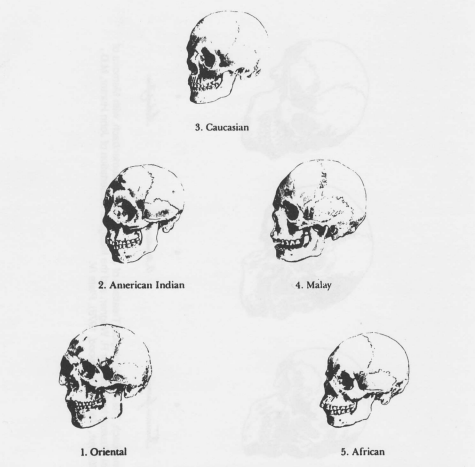


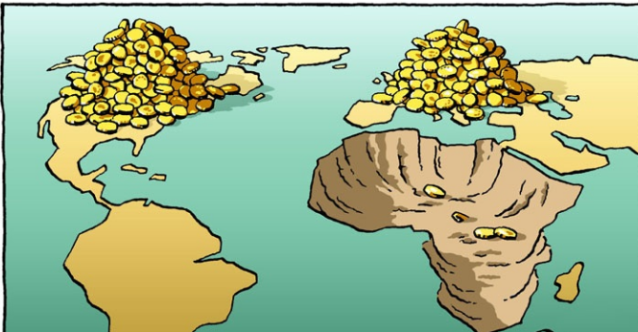

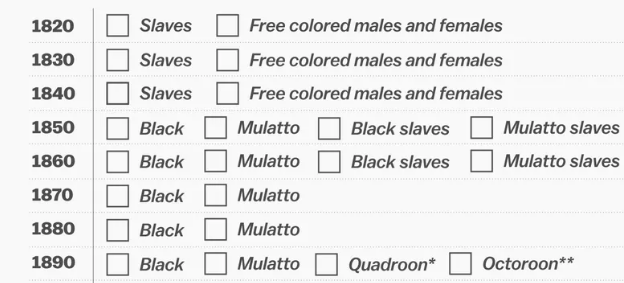


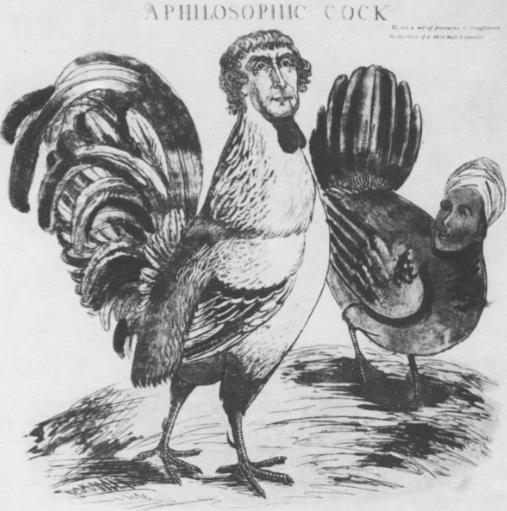



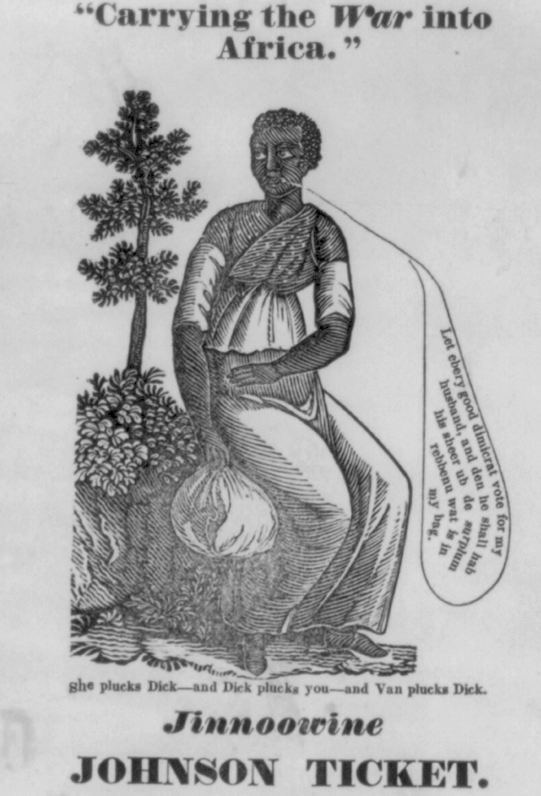

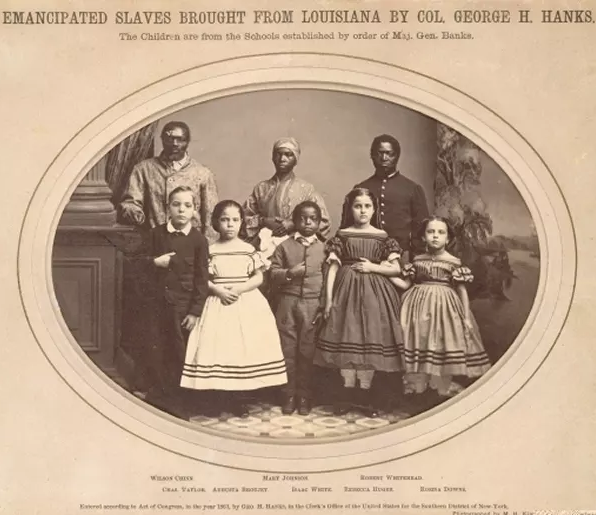



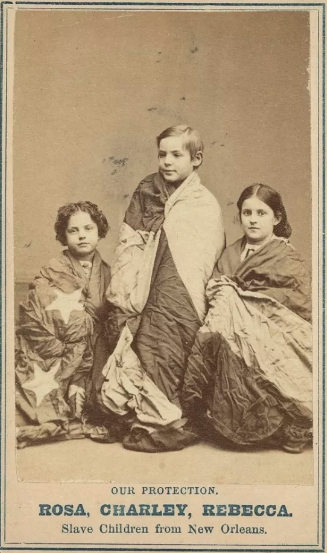








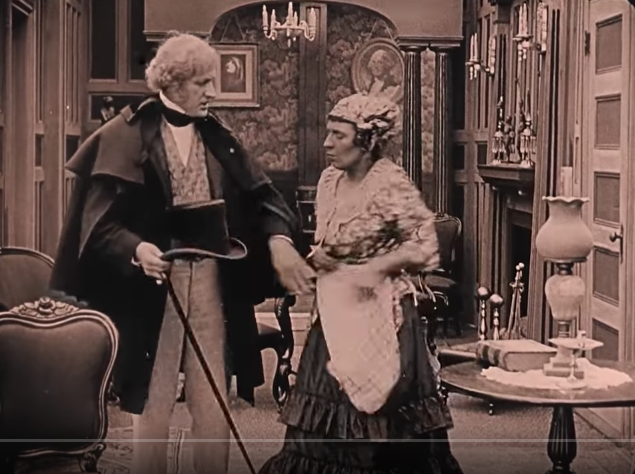

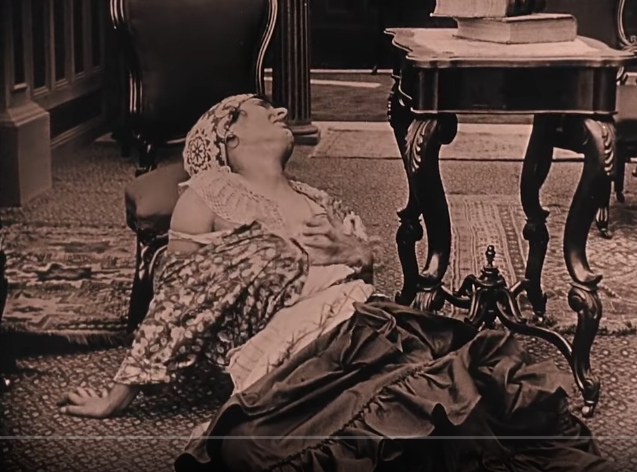

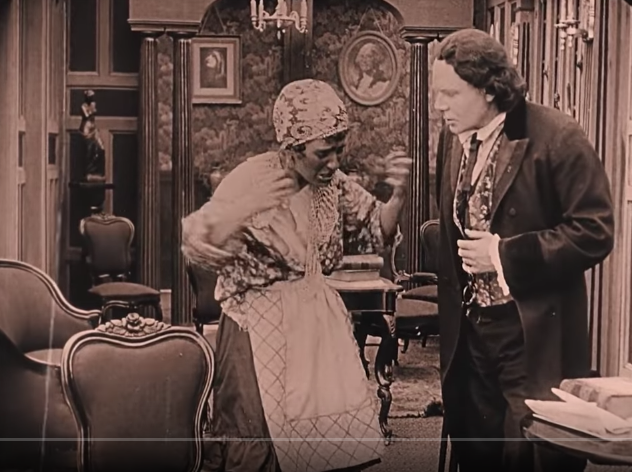
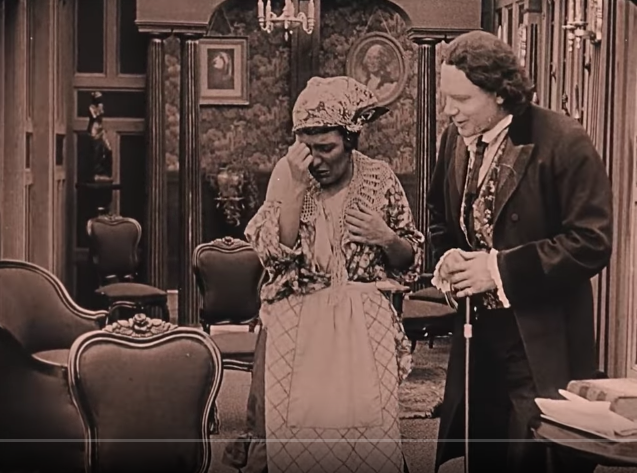
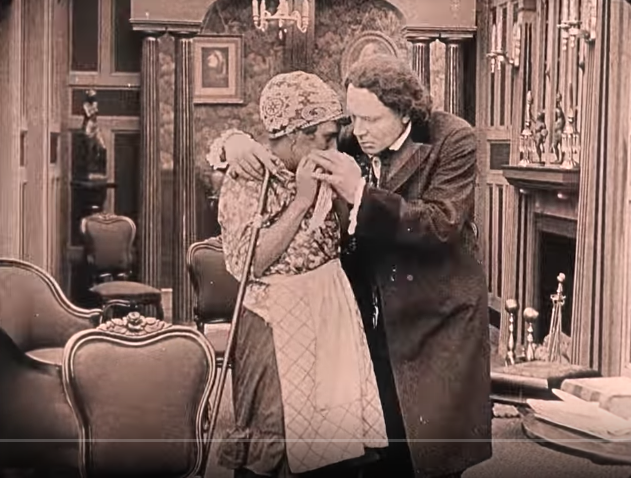









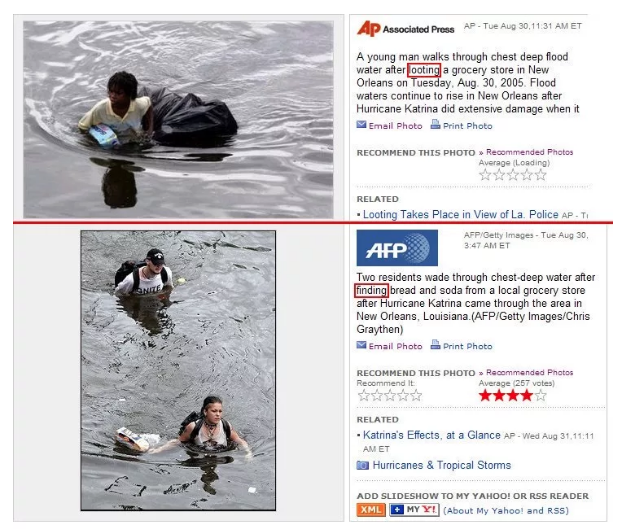








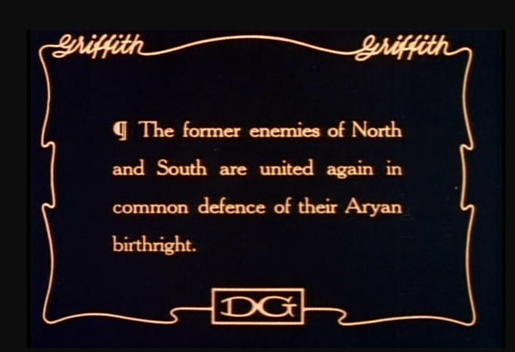


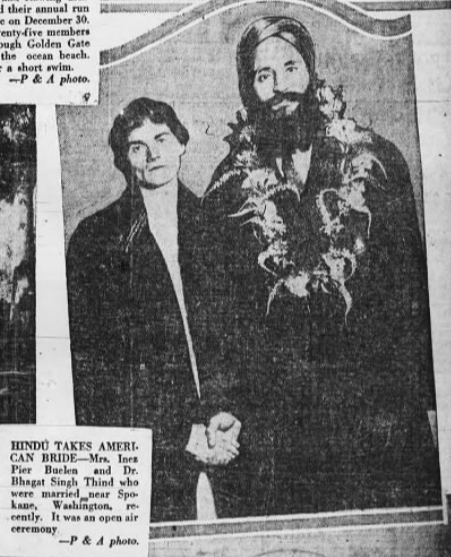
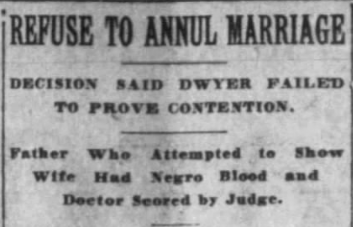

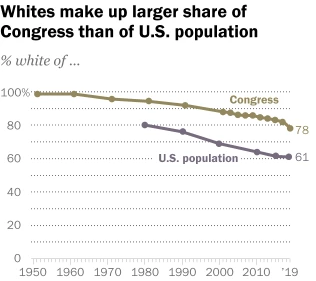














 Vulcan had served his designed purpose and yet there he lay in the dirt, figuratively and physically torn. The capitalists and government figures who commissioned his creation as one of the world’s great statues, a cast iron behemoth meant to represent the great natural resources and industry of Birmingham, had also failed to plan what would be done with him following his role at the fair. As a result, he ended up in the middle of a custody battle between various cities, none of which seemed to know exactly what to do with him once they got him.
Vulcan had served his designed purpose and yet there he lay in the dirt, figuratively and physically torn. The capitalists and government figures who commissioned his creation as one of the world’s great statues, a cast iron behemoth meant to represent the great natural resources and industry of Birmingham, had also failed to plan what would be done with him following his role at the fair. As a result, he ended up in the middle of a custody battle between various cities, none of which seemed to know exactly what to do with him once they got him.



